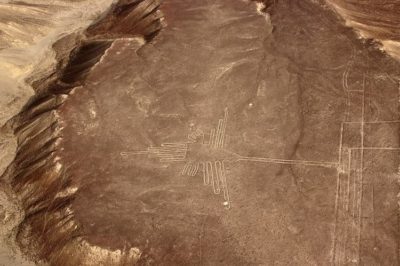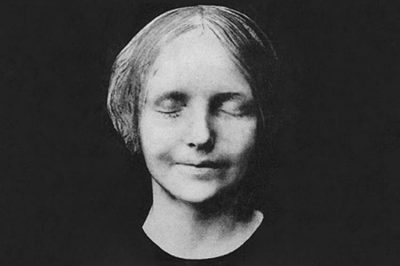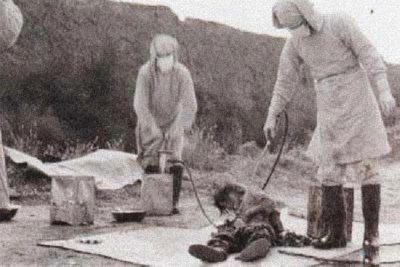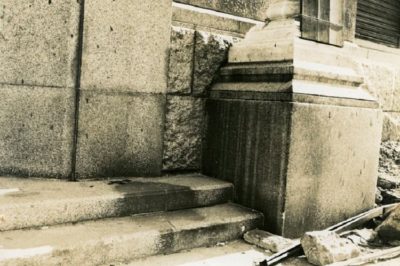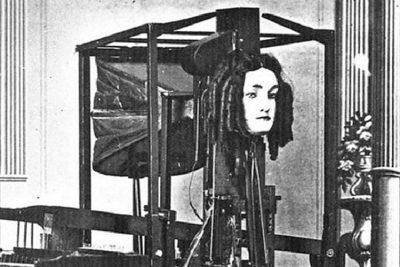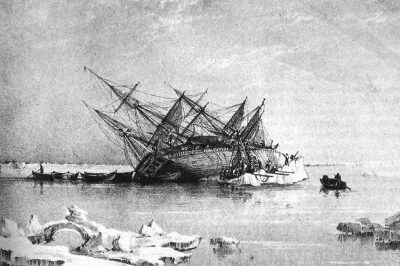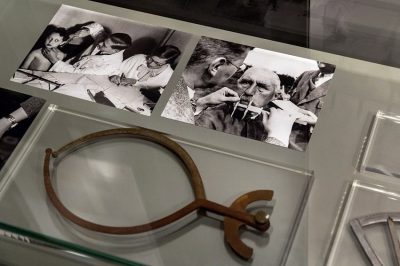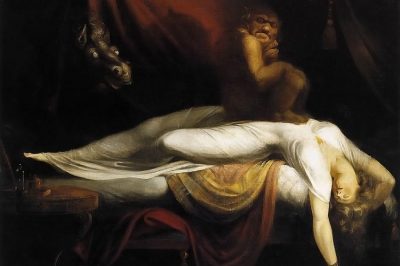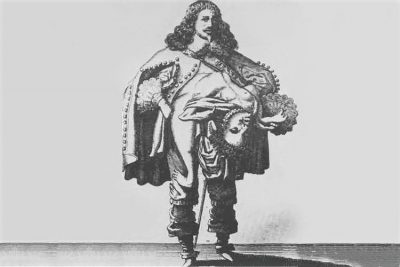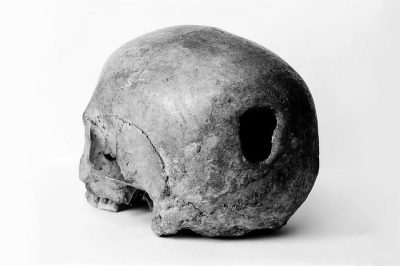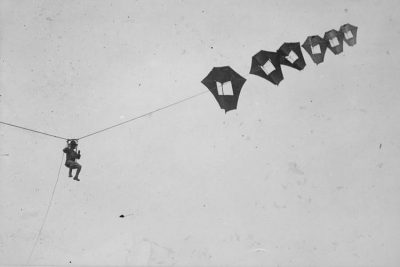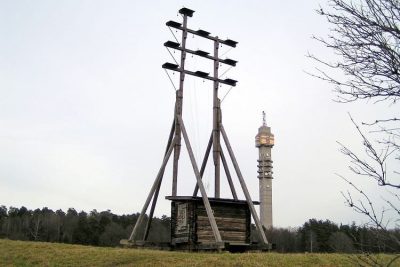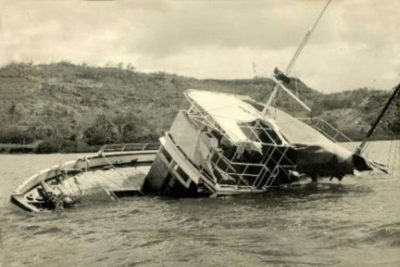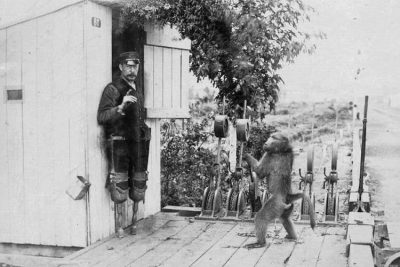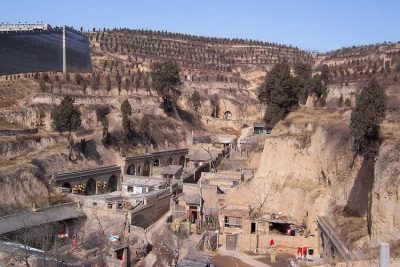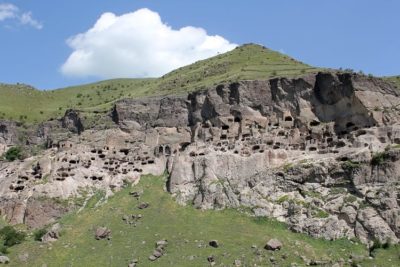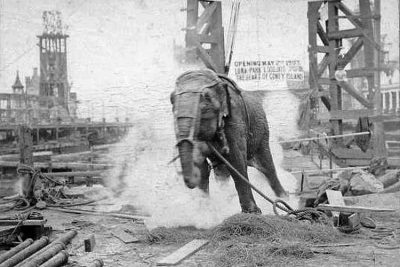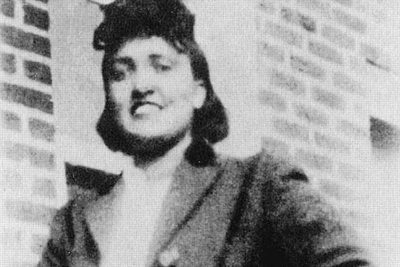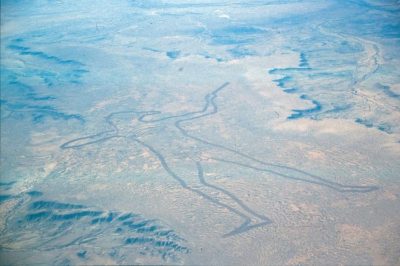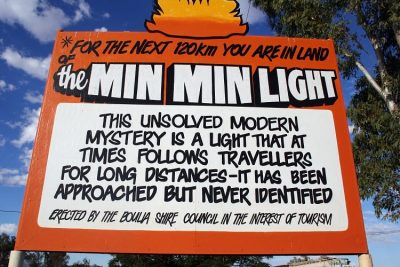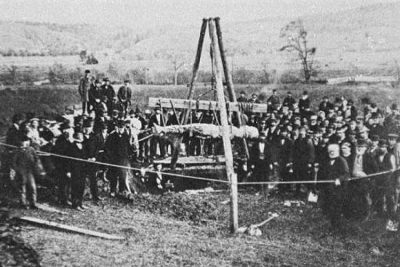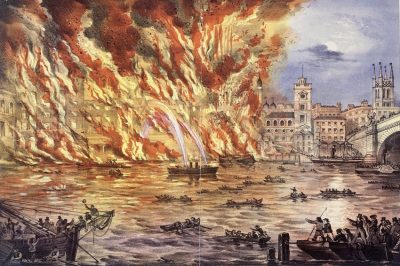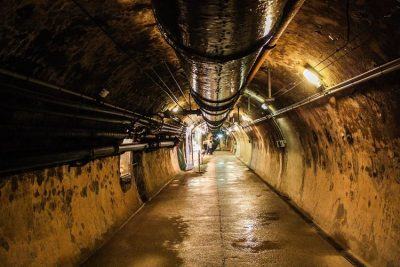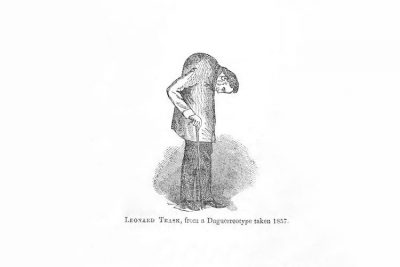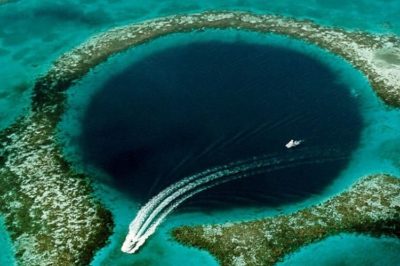The post Mapimi Silent Zone: A Patch in the Mexican Desert where Radio Signals are Inaccessible appeared first on .
]]>
Mapimí Silent Zone. (Cryptocône/Wikimedia Commons)
Located in the Trino Vertex, a few kilometres from the town of San Ignacio of Belize in Mexico is La Zona del Silencio or the Mapimi Silent Zone. It is a quiet desert patch with a strange phenomenon that baffles the mind—telecommunication signals and radio waves cannot be received or sent from here. It derives its name from its neighbours, Bolsón de Mapimi and the Mapimi Biosphere Reserve. Mapimi Silent Zone is a part of the 400,000 hectares Mapimi Biosphere Reserve and is 50 kilometres across.
Mapimi Silent Zone: The various theories

Purple Nopal Cactus. (Laura Wolf / Flickr)
The Mapimi Silent Zone is believed to possess unique magnetic properties because of its iron ore magnetite and uranium deposits. This could also be due to heavy meteorite activity occurring in this place and meteors have shown deep traces of metals. It has been reported that there was a crash of a meteorite in the 1950s which contained an extraordinary crystalline matter estimating to be about 13 billion years old, which is much older than the solar system. Now, it’s debated whether the magnetite and uranium were always present in the zone, or if they resulted from the frequent meteor showers.
The Mapimi Biosphere Reserve meanwhile, has undertaken the research of the strange mutations of plant and animal species found in the area, the purple cactus and the Mapimi tortoise which has been declared a vulnerable species, being the most famous ones. The area has 31 species of plants and nearly 75 species of protected animals.
The anomalies reported
In the 1930s, a famous record-breaking Mexican pilot, Francisco Sarabia Tinoco, was performing test flights in the Mapimi Silent Zone. Apparently, as he flew his plane over this sector, he lost all communication with the base. His compass went haywire, unable to point north, and his systems became unresponsive. At the base, all they could hear was white noise, which indicates a plane crash. However, Francisco seemed to have entered a vacuum, coming out of which he was forced to crash land. This bizarre incident spooked him enough to never fly over the zone again.
In 1964, an engineer with a Mexican petroleum company Pemex experienced radio silence in multiple patches of the desert. Pemex was exploring the desert area to run an oil pipeline to go up to Chihuahua (City in Mexico). Harry de La Peña, a Mexican engineer, was conducting the survey with his team when he discovered that they could not communicate with each other over walkie-talkies in a certain part of the desert. The team also noticed that their radios were only emitting white noise. On asking around, they found out from the nearest town Ceballos that television signals too could not penetrate the zone. Harry called it, ‘The Zone of Silence’. However, when he went back to confirm the radio silence, he discovered that it occurred in another patch of the desert. This gave rise to the speculation that the zone is not a particular area in the desert but one that shifts unpredictably.
On February 8 in 1969 at 1.05 am, the largest meteorite to have ever struck the Earth, Allende crashed to the ground here at a speed of 10 miles per second. Apparently, Mapimi Silent Zone is known for meteorite showers. On July 11 in 1970, the US Air Force and Army were conducting joint testing of a re-entry test vehicle (RTV) Athena in New Mexico. The rocket was launched from the Green River Complex in Utah and was supposed to drop in the White Sands desert in New Mexico. The RTV overshot its destination by 500 miles and crashed in the Zone of Silence. The crash, not intended, was attributed to the malfunctioning of the rocket. The US Air Force obtained permission from the Mexican government for clearing the debris and investigating the cause of the crash. It is then that the scientists confirmed that a certain section of the desert was a dead zone. No form of communication could be established within that zone.
Further research led to the knowledge that the zone had a very powerful magnetic field, almost as strong as the North Pole. There was also a shifting area that prevented the flow of any form of a signal; be it radio, television, shortwave, microwave or satellite signals. The US Air Force also carried back truckloads of the sand for research work./////
Read more: Leh Magnetic Hill- A Stretch of Road Where Laws of Gravity Work Peculiarly
The absurd stories of sightings
Moreover, shortly afterwards, people started reporting strange sightings of UFOs in the Mapimi Silent Zone. In October 1975, a couple narrated an encounter with two unidentified men. Josefina and Ernesto Diaz were in the desert area to collect fossils for further study. They ventured into the zone for picking up sand samples and any unusual rocks that they could find. However, they soon realised that a rainstorm was approaching and to avoid getting stuck in the desert, they drove away. They got into their vehicle and just as they were driving off; it got stuck in the wet sand. As they struggled to lift the vehicle from the swamp like area, they were approached by two men wearing yellow raincoats and caps who offered help. They were instructed by these men to sit inside and press hard on the accelerator as the men attempted to lift the vehicle enough to free it from the sandy swamp. As soon as the vehicle was freed, Ernesto decided to get down to thank the helpful strangers. To both’s bewilderment, the men were nowhere to be seen. Keeping in mind the flat vast land of that area with sparse greenery, there really wasn’t any place that they could have gone to not be visible to others.
Scientists have concluded that the sighting of UFOs and strange people could be a result of hallucinations caused by strong magnetic waves prevalent in the zone.
September 1976 was even more bizarre, with an entire town claiming to have been visited by a UFO. Closer to 9 pm that night, the residents of the town Ceballos reported of a huge rectangular spaceship-like object hovering in the sky above the town. Approximately 300 metres long, it had blinking coloured lights all around the rim and a deep pulsating hum. The dogs of the town were quite agitated with the hovering object and all broke into a continuous howl and bark, simultaneously. The object flew away after a couple of seconds, presumably headed towards the Zone of Silence, as claimed by the spectators.
In the month of November in 1978, journalist Luis Ramirez Reyes was visiting the zone and the nearby biosphere reserve, along with a team, for a story on the peculiar events in the area. Reyes and his photographer drove in a separate car from the rest of the team and after touring for some time in the desert, it was obvious that the two were lost. Reyes saw three men walking along the path and asked his colleague to pull up for directions. His colleague, however, unable to see anyone, kept on driving. A few kilometres ahead, Reyes again saw the same people and this time firmly asked his colleague to stop the car. The trio gave them exact directions on how to reach the biosphere reserve and claimed to have been looking for their lost animals in the desert. Upon reaching the facility, Reyes narrated his encounter and was flabbergasted by the information that the only people in the vicinity for miles were the employees, who were all inside the facility that day.
Conclusion
The most obvious theory is that the high level of magnetism of the zone due to the iron deposits tends to obstruct the functioning of compasses. Also, the fact that the Mapimi Silent Zone is in the middle of nowhere, leads to the conclusion of disruption in signals. However, thanks to the geographical location of the zone, similarities are often drawn with other unexplained phenomena. Comparisons to its similarity to the Bermuda Triangle are simply because La Zona del Silencio is geographically located between the same parallel coordinates. However, sooner or later, we can only hope that the true facts about the existence of this strange land can be explained.
Enjoyed this article? Also, check out “The Incredible Geoglyphs of Peru, the Nazca Lines“.
Fact Analysis:
STSTW Media strives to deliver accurate information through careful research. However, things can go wrong. If you find the above article inaccurate or biased, please let us know at [email protected].
RELATED
The post Mapimi Silent Zone: A Patch in the Mexican Desert where Radio Signals are Inaccessible appeared first on .
]]>The post The Fascinating ‘Amber Room’: The Fabled ‘Eighth Wonder’ of the World appeared first on .
]]>
An autochrome of the original Amber room, 1917. (Andrey Andreevich Zest / Wikimedia Commons)
The famous Amber Room, or “Yantarnaya Komnata” as it is known in Russian, was an opulent room made of amber and gold leaf, embellished with mirror panels and semi-precious stones. Amber is a semi-transparent fossilised resin of the coniferous trees often found on the shores of the Baltic Sea. Due to its golden appearance, similar to gold, it was called the “Gold of the North” and was in high demand for making ornamental pieces. Such was the fascination for amber that the 18th century saw sculptors and craftsmen specialising in amber carvings and sculptor techniques. The original Amber Room was designed and constructed in the early 18th century for Frederick I, the first King of Prussia.
The history behind the Amber Room
The Amber Room was a tribute by Frederick I to his second wife, Sophie Charlotte, whom he adored. It is also possible that the very concept originated from Sophie Charlotte who was a connoisseur of arts or, from the chief architect of the court, German Andreas Schlüter, when he found a large collection of amber in the palace storage cellars.
Schlüter specialised in the baroque art of sculpting in which sculptures were elaborate designs of figurines with added elements like concealed lighting or water fountains. The baroque art of sculpting created an ethereal transformative experience for viewers. The Amber Room is, to date, considered the most famous work of architecture by Andreas Schlüter.
Schlüter started working on the detailed design of the room in the year 1701 with another amber specialist, craftsman Gottfried Wolfram of Danish descent from Copenhagen till 1707. Together, they made floor to ceiling panels in amber with gold leaf, mirrors, mosaic and intricate inlay work. They made carvings of nymphs, cupids and angels.
Wolfram constructed 46 enormous panels of fused amber, some 12 feet high. Work continued after that by amber masters Gottfried Turau and Ernst Schacht from the Polish town of Danzig. It was planned for the summer residence of Sophie Charlotte, the Charlottenburg Palace in Berlin, but unfortunately, Sophie passed away on January 21 1705, before the Amber Room could be completed.

A portion of the reconstructed Amber Room. (jeanyfan / Wikimedia Commons)
The completed panels were installed in a room in the Charlottenburg Palace which Frederick I used as his study. The room was also furnished with objects like candelabras, vases, snuff boxes etc. made of amber. It was described by those who saw it, as “standing inside an open jewel box“.
In February 1713, with work still underway on the Amber Room, King Frederick passed away. His son, Frederick William I, succeeded him and ordered for the Amber Room in its incomplete form to be stored in the arsenal in Berlin. He had no inclination of wasting any more time or resources on the humongous Amber Room project.
The amber gift to Russia
In 1716, the Russian Tsar, Peter the Great, visited Berlin and was keen to see the famous Amber Room. Seizing the opportunity to form a formidable alliance, King Frederick William I gifted the Amber Room to the Tsar. The panels were dismantled and packed in 18 large crates to be taken to the summer palace of the Tsar in St. Petersburg, Russia. Peter had planned to create an art chamber with the Amber Room. Sadly, the panels remained in storage as no artisan in Russia was able to put the pieces together to re-create the Amber Room.
After the death of Peter the Great in 1725, it took a while for his daughter Elizabeth to take over the Russian empire as the successor. Elizabeth succeeded the throne in 1741 as the Empress of Russia and in 1743 ordered for the installation of the Amber Room in her winter palace, under the guidance of the Italian court architect, Francesco Bartolomeo Rastrelli. Italian sculptor Alexander Martelli was appointed to work on restoring the amber detailing.
The room designated for the amber panels was not big enough according to the Empress, so she moved it to a hall so big that the original panels were spread out with new amber panels and mirrored pilasters in gilded frames, in between. The height of the walls in the hall was 7.5 metres whereas the amber panels were only 4.75 metres high. Rastrelli added mirrored pilasters to compensate for the height. He filled the spaces with imitation amber and decorated the upper tier with gilded woodcarving.
Maria Theresa Walburga Amalia Christina, the Holy Roman Empress, presented Empress Elizabeth with 4 panels of agate and jasper mosaic in Florentine stone by Guiseppe Dzokki, to illustrate the 5 senses of the human body. These were placed on the 4 largest boards of the room. The new Amber Room was completed by 1745 but, Empress Elizabeth was again, not happy and had it moved 3 more times before making it to the reception hall of foreign dignitaries.
However, due to all the moving around, the amber had started falling off the panels. In 1755, Elizabeth had it moved, yet again, to her mother’s summer home, the Catherine Palace in Tsarskoye Selo near the Baltic Sea. Here, the deteriorating amber panels were replaced with gold foil covered glass due to lack of finances for resourcing amber.
The magnum opus, turning into the ‘8th Wonder of the World’
In 1778, Catherine II also known as Catherine the Great became the Empress of Russia. Having been born in Stettin near the Baltic Sea, she was an expert judge of the precious ‘Gold of the North’. She ordered for 900 pounds of high-quality amber from East Prussia and also hired 4 Polish amber carvers from the Königsberg Guild of traders to make new panels as per the designs of the older ones.
She called upon the famous Italian craftsman, Guiseppe Dzokki to re-construct the 4 Florentine panels with amber mosaic. The panels, 1 for each wall portrayed, “Sight“, “Hearing“, “Taste“, and “Touch and Scent“. After more than 4 years of extensive restoration and change, the final Amber Room was a stunning work of art.
The room had huge floor to ceiling panels of skilfully carved amber, mirrored wall panels and the 4 amber mosaics by Giuseppe Dzokki. The final room had 1,00,000 sections of carved amber panelling arranged in 3 tiers covering a total space of 592 square feet. Pictures made out of semi-precious stones were enclosed in 4 amber panels. A table made out of amber stood proudly in one corner of the room.

The original Amber room hand-coloured photograph. (Branson DeCou / Courtesy Special Collections)
The Amber Room housed the greatest collection of art pieces in amber that could be dated back to the 17th century. The legendary room was referred to as, “The Eighth Wonder of the World“. Notable French poet and art critic, Théophile Gautier saw the room in 1886 and wrote, “Only in The Thousand and One Nights and in magic fairy tales, where the architecture of palaces is trusted to magicians, spirits and genies, one can read about rooms made of diamonds, rubies, jacinth and other jewels…“, aptly describing the magical grandeur of this mesmerizing room. The amber in the room glowed in shades ranging from a dark topaz to a light lemon yellow when seen in the light of 565 candles, reflected in 24 pilasters and 2 large wall mirrors.
The Nazi invasion and the disappearance of the Amber Room
When World War II broke out, valuable artworks and things of historic importance were being evacuated from Tsarskoye Selo to go underground, out of reach of the enemies. The Amber Room, however, was too massive and fragile to be moved. It was instead camouflaged with tapestry, to avoid drawing attention. By the time the Russians made arrangements to sneak the panels to underground storage cellars in Sverdlovsk, it was too late.
On June 22, 1941, German troops captured and cordoned off the city of St. Petersburg; and started plundering the places of importance. In Tsarskoye Selo, they were not deceived by the wallpapered Amber Room and the room was dismantled within 36 hours. Rittmeister Graf Solms-Laubach was in charge of shifting the Amber Room to Germany.
On October 14 in 1941, he sent the packed 27 crates of the Amber Room back to its home, Königsberg in Germany. The Amber Room was set up in the castle museum near the Baltic Sea and was on display there for 2 years. The daily newspaper Königsberger Allgemeine Zeitung reported the opening of an exhibition of the Amber Room on November 13, 1941.
It is alleged that towards the end of 1943, the Amber Room was again dismantled and stored in the cellars of the castle. In August 1944, Germany came under heavy aerial attack by the UK and the Königsberg castle was destroyed. The Soviets attacked Germany and occupied Königsberg on April 9, 1945. The Amber Room, however, could not be found.
Some say it was moved to Wechselburg in Saxony and buried there. Some claim to have seen it loaded onto trains to be taken to an unknown destination, whereas some believe that it was ruined in the bombing attacks of 1944. Then, there are dreamers who believe the legend that the Amber Room has been buried deep under the modern day Kaliningrad (Königsberg) Stadium in Germany. Another theory states that it could be at the bottom of the Baltic Sea where the ship carrying it perhaps sank during the attacks.
Replicating the opulent Amber Room
Whatever the explanation to the whereabouts of the Amber Room, it could never be found again. Though many people embarked on long journeys to search for the room and many alleged to have found proof of its storage, nothing concrete came out of it. In July 1979, the Council of Ministers of Soviet Russia came to a decision to start construction on a replica of the Amber Room.
Under the expert guidance of architect-restorer Alexander Kedrinsky, the replication plans were drawn. A special Tsarkoye Selo Amber Workshop was organised with experts who reconstructed the room from the original photographs available. Organisations that were formed to search for the original Amber Room, had found 2 original elements of the room in Germany, the “Touch and Scent” mosaic and an inlaid wooden commode. These were given to the Catherine Palace workshop in 2000. The cost of this rebuild was $11.35 million, out of which $3.5 million was provided by a German corporation as a symbol of support.
The reconstructed Amber Room was unveiled on May 31 2003, in a grand ceremony marking the 300th year celebrations of St. Petersburg. It was presided over by the Russian President, Vladimir Putin and the German Federal Chancellor, Gerhardt Schroder. The event was attended by several heads of states, including George W. Bush and Tony Blair among others.
Enjoyed this article? Also, check out “Project Riese: Hitler’s Shadowy Incomplete Underground Complex that Remains a Mystery“.
Recommended Visit:
Amber Room | Catherine Palace, Russia
Fact Analysis:
STSTW Media strives to deliver accurate information through careful research. However, things can go wrong. If you find the above article inaccurate or biased, please let us know at [email protected].
RELATED
The post The Fascinating ‘Amber Room’: The Fabled ‘Eighth Wonder’ of the World appeared first on .
]]>The post Japanese Kamikaze Pilots: Transcending Life and Death for their Country appeared first on .
]]>
Schoolgirls cheering a Kamikaze pilot with flowers before his final takeoff. (Hayakawa / Wikimedia Commons)
Kamikaze is a Japanese word that loosely translates to ‘divine wind‘ or ‘spirit wind’. The word was used to describe two storms that saved Japan twice from invading Mongol fleets under the fifth Khagan of the Mongol Empire, Kublai Khan. The Mongols invaded Japan twice, in 1274 and 1281, but both the times a typhoon drowned their ships and resulted in deaths of several soldiers. The Mongols never tried to invade Japan again.
Much later during World War II, the word, ‘Kamikaze’ was used to describe pilots of the Japanese Special Attack Units who executed suicide attacks on the Allied Powers. Kamikaze attacks were aircraft loaded with the arsenal to strike American ships.
After Japan lost the Battle of Saipan in July 1944, it was decided drastic measures were to be implemented to defeat the Allied Powers. Vice Admiral Takashiro Ohnishi, the commander of the Japanese First Air Fleet, observed that a plane crashing into a warship would inflict more damage than several planes firing at it. This was then used as a combat tactic to mete out maximum harm to the Allies.
It is also considered that the idea for this attack came from First Lieutenant Fusata Iida’s suicidal plane attack on the Naval Air Station Kaneohe Bay on December 7, 1941. 9 minutes before the Japanese attacked Pearl Harbour in Hawaii, Iida’s plane was hit and he went down with the plane by crashing it into the US Naval Air Station causing severe damage.
The Kamikaze Attacks
The first suicide mission was on October 25, 1944, in the Battle of Leyte. 5 Zero aircrafts flown by the Kamikaze Special Attack Force pilots were escorted by Japanese pilot Hiroyoshi Nishizawa to the aircraft carrier USS St. Lo. It was the first major warship to suffer the wrath of a Kamikaze attack. Enormous fires broke out on the warship as a result, which further led to a massive explosion in the bomb storage of the ship. The damage was done, and the warship sank within an hour.

Preparing Mitsubishi Zero A6M5 fighter aircraft for Kamikaze attacks. (Wikimedia Commons)
USS Essex suffered extensive damage on November 25, 1944, from a Kamikaze crash when it landed among planes ready for takeoff aboard the ship. Apparently, 15 Americans were killed and 44 wounded.
On March 19, 1945, USS Franklin was within 80 km of the Japanese mainland, when a little before dawn, a Japanese aircraft dropped two 250 kg semi-armour-piercing bombs on it. It is unclear whether or not it was a Kamikaze attack. The bombs ignited fires all over the warship, causing the heaviest loss of personnel by any carrier.
During the Invasion of Okinawa from April 1 to June 22, 1945, USS Bunker Hill was hit by 2 Kamikazes one after the other in 30 seconds on May 11, 1945, setting her ablaze. Fatalities were beyond 600 with 393 dead, 264 wounded and 43 missing. This was the second biggest loss of personnel by any warship.

USS Louisville after being attacked by a kamikaze. (U.S. Navy photo 80-G-363217)
The kamikaze effect
A pilot and an Imperial Japanese Navy Admiral, Masafumi Arima is said to have invented the Kamikaze approach. It is said that before attacking a US warship, he took off his rank, badge and other symbols, and told his men that he was not coming back. Though there was no account of damage incurred by any American carriers that day, Arima was never seen again and presumed dead. He was given the rank of Vice Admiral posthumously.
April 6, 1945, is marked as the most historic day of Kamikaze attacks in WWII when more than 350 Kamikaze aircrafts laid the assault on the Allies simultaneously. USS Laffey was attacked by 20 Kamikaze aircraft, all at the same time.
In spite of the relentless efforts and sacrifice of the Japanese Kamikaze pilots, their success rate was estimated to be only 14% to 19%. Even with a low success rate, they were able to inflict substantial damage to the Allied Powers. The fury they unleashed, not only gave them a place in history as Japan’s most dangerous weapons in WWII but also enabled them to successfully sink 47 warships, damage 386 warships, kill approximately 4900 soldiers and injure 4800 others.
The kamikaze pilots
Many Japanese pilots volunteered to become Kamikaze pilots but there were several who did not wish to volunteer and some who did not. Pilots were given a slip of paper with their name written on it with 3 options – willingly volunteer, volunteer, do not volunteer. Due to the fact that the slip to be turned in had their names, many pilots unwillingly volunteered.
There are also stories of those who did not volunteer but were projected as volunteers by their commanding officers. The Kamikaze Pilots were told that their destiny was to save Japan from the enemy just like the Kamikaze typhoons had done centuries ago.
Young students were recruited for this suicide mission, some only 17 years of age. The Pilots underwent 40-50 hours of training, after which they were accompanied by experienced pilots to their targets.

Corporal Yukio Araki (age 17) holding a puppy before his Kamikaze suicide mission. (Wikimedia Commons)
A Kamikaze Pilot had to take a 5 Point Oath as soon as he joined a Special Attack Unit:
1. A soldier must make loyalty to his obligation.
2. A soldier must make propriety his way of life.
3. A soldier must highly esteem military valour.
4. A soldier must have a high regard for righteousness.
5. A soldier must live a simple life.
One of the rituals of a Kamikaze Pilot was to write a letter to his parents which would be sent to them soon after the completion of his mission. One such letter still exists today, written by young Ensign Kiyoshi Ogawa to his parents. Ogawa happened to be piloting the second aircraft that hit USS Bunker Hill causing enough damage for the warship to be out of action for the remaining duration of the war.
The next ritual was wearing the One Thousand Stitch Belt known as Senninbari Haramaki. This belt was made by Japanese women standing in public places, asking a thousand women passing by to place a stitch each on the belt. It was a good luck charm for the Kamikaze Pilots. The final ritual was the consumption of a holy potion which would guide the pilot to his destiny. Finally, the pilot would board his aircraft amidst bombs and take off on a flight of providence.
A befitting coffin
A Kamikaze Pilot’s ride was the Mitsubishi A6M2 designated the official name ‘Zero‘. Almost 30 feet in length with a wingspan of 39 feet, it could fly at a maximum speed of 332 mph. The Zero became a coffin for Kamikaze Pilots, aptly named as they reduced to nothing in their mission to save their country.
Recommended Read:
The Kamikaze Hunters: The Men Who Fought for the Pacific, 1945
Fact Analysis:
STSTW Media strives to deliver accurate information through careful research. However, things can go wrong. If you find the above article inaccurate or biased, please let us know at [email protected].
RELATED
The post Japanese Kamikaze Pilots: Transcending Life and Death for their Country appeared first on .
]]>The post Important New Discovery May Provide Insights into the Construction of the Pyramid of Giza appeared first on .
]]>
Great Pyramid of Giza. (Nina Aldin Thune / Wikimedia Commons)
The pyramid structures of Egypt have for long baffled archaeologists and architects. The most famous of these are on the outskirts of Cairo, on the Giza Plateau. The Giza Pyramids are considered amongst the world’s largest structures built. The Great Pyramid of Giza, also known as the Pyramid of Khufu is the largest of the lot. It is built of 2.4 million stone blocks, each weighing approximately 2.5 tonnes.
For years, archaeologists have been confused with its existence and have tried to find out how ancient Egyptians succeeded in moving these blocks to build the world’s largest pyramid. It seems centuries later, we may finally have some answers. Archaeologists are one step closer to understanding the technique behind the structure constructed in 2560 B.C. which took 20 years to complete.
The history of the Great Pyramid
The Great Pyramid is the oldest structure considered as one of the Seven Wonders of the World. Apparently, the pyramid was constructed to serve as a tomb for the Egyptian king Khufu. The architect for this phenomenal man-made structure is assumed to be the pharaoh’s vizier, Hemiunu. His tomb is in close proximity to Khufu’s pyramid. The workmanship of the pyramid is almost flawless, with the four sides of the base having an average error of only 58 millimetres in length.
The colossal man-made structure has generated curiosity over the sheer volume of the pyramid and the intricacies involved during construction in an era which lacked current amenities and modern technology. It is believed to have been made up of approximately 2.4 million blocks, which were probably transported from the quarries around the area.

Close up photo of the Great Pyramid of Giza. (Soluvo / Wikimedia Commons)
The outer layer is made up of an estimated 5.5 million tonnes of limestone from the Tora region of ancient Egypt, across the river Nile. Apart from that, the construction of the pyramid would have required nearly 8,000 tonnes of granite and 500,000 tonnes of mortar. It was the tallest man-made structure at 146 metres, for over 3800 years. When built, it was protected with an outer layer of smooth Tora limestone. However, with time the casing has come off though, some of the limestone blocks are still present around the base.
The structure of the Pyramid of Giza
The construction of the pyramid has led to many hypotheses and has been the centre of archaeological research for a long time. The most established of these is the argument that the pyramid was constructed at two different places. The stones and slabs were cut to size and smoothened in the various quarries found around that area. It has been concluded that copper chisels and saws were used to cut and level soft stone like limestone. However, slabs of granite and basalt probably required other tedious techniques as well.
Once finished, the slabs or blocks were moved to the plateau area for final construction. The most controversial topic of discussion has been the moving of these massive blocks from the quarries to the actual place of construction. One of the widespread theories has been about the use of some sort of a ramp to move or roll the stones. An important archaeological discovery in 2013 of a logbook has a day-to-day account of the limestone transported from the quarry in Tora to Giza.
The diary of Merer, 2013
The French mission of Sorbonne University directed by Pierre Tallet came across documents with hieroglyphs and hieratic in 2013. These were discovered in a cave in Wadi al-Jarf on the Red Sea coast of Egypt. The documents are on papyrus, written by Merer, an officer of middle-ranking during the 26th year of Pharaoh Khufu’s reign. It is a logbook, known as the Diary of Merer, describing the several months it took to transport limestone from the quarries of Tora to Giza for use in the construction of the Great Pyramid.
Merer, it seems, had the responsibility of procuring the slabs from the limestone quarries in Tora. Limestone was used as a protective shell around the pyramid on the outside. The logs are for the months of July till November. The Diary of Merer was a breakthrough discovery regarding the construction of the Great Pyramid. It is the first historical reference to have been retrieved from an archaeological site giving information about the daily lives of the people who were involved in the construction. Egyptian archaeologist Zahi Hawass claims this to be “the greatest discovery in Egypt in the 21st century“.
The discovery at Hatnub, 2018
Out of the many, the one hypothesis that seemed to make sense considering the enormity of the blocks used was that the blocks were made in the nearby quarries and then moved to the location. An incredible discovery made a few days ago at Hatnub, an ancient alabaster quarry in the Eastern Desert of Egypt could just be the proof needed. The joint mission of IFAO – Institut français d’archéologie orientale (French Institute for Oriental Archaeology) in Cairo and the University of Liverpool in England, have been working at Hatnub together since 2012 to study the inscriptions and stelae at Hatnub.

The recently discovered quarry at Hatnub. (Hannah Pethen / Flickr)
According to the IFAO Director of the mission Dr. Yannis Gourdon, the mission came across a unique system during excavations at Hatnub. The remains of the system reveal a contraption that was probably used to transport the stone blocks up the steep ramp. The system per se, consists of a ramp in the centre with a staircase on either side. These staircases have holes on the sides which once would have held strong wooden posts. A sledge was probably used with ropes attached to the posts.
The University of Liverpool Director of the mission, Dr. Roland Enmarch assume that the blocks were pulled up from the quarry using this rope and pulley system which enabled the management of the weight of the blocks on slopes with a gradient of 20% or more. Archaeologists have not come across a pulley system like this anywhere else in the world.
In the wake of the latest discovery of October 2018, archaeologists and historians can probably start putting things together to get answers that have been desired for several years. Concrete proof may finally open us to the world of ancient civilisations and their ways. The Pyramids of Giza are living proof of the extent of knowledge that our ancestors possessed.
Recommended Visit:
Great Pyramid of Giza | Egypt
Fact Analysis:
STSTW Media strives to deliver accurate information through careful research. However, things can go wrong. If you find the above article inaccurate or biased, please let us know at [email protected].
RELATED
The post Important New Discovery May Provide Insights into the Construction of the Pyramid of Giza appeared first on .
]]>The post The Curious Case of Charles Coghlan’s Coffin appeared first on .
]]>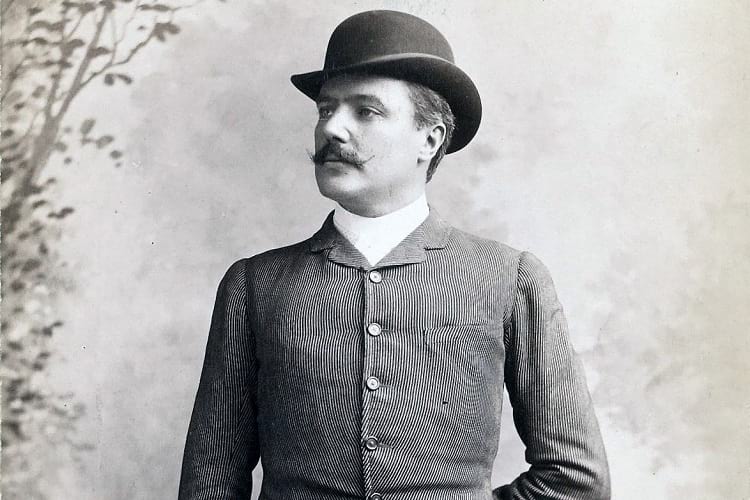
Charles Francis Coghlan. (Harvard Theatre Collection)
Charles Francis Coghlan was a famous Anglo-Irish actor and playwright born to Amie Marie and Francis Coghlan in Paris on June 11, 1842. His father, Francis was a renowned Irishman who founded Coghlan’s Continental Dispatch and published Coghlan’s Continental Guides. Francis had esteemed literary associations, with Charles Dickens as one of his friends. Charles Coghlan grew up being prepped for a legal career but chose to pursue acting, while still a teenager.
The calling of an actor
Charles Francis Coghlan embarked on his acting career at the young age of 17. During the summer tour of Sadler’s Wells Theatre in 1859, Charles was associated with the theatre in small roles as an actor. During the theatre’s stint in Dublin, Charles approached the manager of Haymarket Theatre, John Baldwin Buckstone, with the desire to present a play he had written. Buckstone did not show any interest in the play but did offer Coghlan the role of Monsieur Mafoi in a play adapted by Lord Byron from ‘The Alhambra’ by Washington Irving. The play, ‘The Pilgrim of Love‘ opened at the Haymarket Theatre on April 9 in 1860, and Coghlan went on to act in several supporting roles. His performances slowly built him as an actor of substance.
Coghlan finally secured an important role as Charles Surface in ‘School for Scandal’ by Richard Brinsley Sheridan. The play opened at the St. James’s Theatre in London in the year 1868. Later on, he went on to play the role of Sir Oscar to eminent British stage actress Adelaide Neilson’s Lillian in ‘Life for Life’ by John Westland Marston at the Prince of Wales Theatre. The next couple of seasons at the theatre saw him playing important leading roles to the likes of Geoffrey Delamayn in ‘Man and Wife’ by William Wilkie Collins, and Henry Spreadbrow in ‘Sweethearts‘ by W.S. Gilbert.
The rise and fall of Charles Francis Coghlan
John Augustin Daly was the first recognized stage director of America and in 1876, he brought Charles Francis Coghlan to America as part of his production company. The same year, Coghlan made his debut on Broadway as Alfred Evelyn in the comic play ‘Money’ by Lord Lytton, at the Fifth Avenue Theatre on September 12. Coghlan enjoyed a successful career in America and in England before filing for bankruptcy in London due to liabilities amounting to £312 on January 29, 1891.
Coghlan reached the height of his career when he was able to stage his own adaptation of Alexandre Dumas’ play ‘Kean’ on Broadway. Titled, ‘The Royal Box’, it opened at the Fifth Avenue Theatre on December 21, 1897, and ran successfully till February 1898. Unfortunately, Coghlan died on November 27 in 1899, when he had taken his production ‘The Red Box’ to Galveston, Texas. He had arrived in the city on October 30 that year but had not been able to perform himself due to ill health. Coghlan was suffering from acute gastritis.
The coffin that travelled
After his death, Coghlan’s body was placed in a metal casket to be shipped for burial on his farm in Fortune Bay at Prince Edward Island. The farm was Coghlan’s summer residence. However, some days after his death, there was a press announcement that Coghlan’s cremation would take place in New York. Meanwhile, his mortal remains stayed stored in the vault of the Galveston cemetery until a concrete decision could be reached regarding his funeral rites. What happened next is as bizarre as it can get. Nearly ten months after Coghlan’s death and indecisiveness over his burial, his casket went missing.
On September 8 in 1900, a category 4 hurricane hit the town of Galveston in Texas. The hurricane with a wind speed of more than 135 miles per hour, wreaked havoc on the town, destroying thousands of buildings and taking the lives of many. The disastrous hurricane-displaced and washed out to sea several coffins from the graveyards, one of them being that of Charles Francis Coghlan. Resources were put together to find the missing coffin that was apparently floating around somewhere in the sea. The New York Actors’ Club also announced a reward for the recovery of Coghlan’s coffin, which went unclaimed for years.
Over the following years, several false claims were made of the recovery of Coghlan’s floating coffin. In September 1900, there were reports of Coghlan’s coffin being found near the city of La Marque in Tesax. However, on January 22 in 1904 newspapers reported of a metallic casket like Coghlan’s on a beach near Galveston Yet again, on January 19 in 1907, a newspaper reported that Coghlan’s coffin had been found by a group of hunters in a marsh amongst the weeds a little distance away from Galvenston. On September 15, 1927, Robert Ripley made Coghlan’s floating coffin famous in his column ‘Ripley’s Believe It or Not!. He claimed that Coghlan’s coffin had traversed the sea from Galveston to finally be washed ashore the Prince Edward Island where his home was. Charles Francis Coghlan had come home.
His leading lady of one time, Lilly Langtry recalled in her memoir ‘The Days I Knew’ that the outcome to Coghlan’s mortal remains had been predicted to him by a crystal gazing gypsy woman. Coghlan, believing the gypsy woman, had said on his departure from Prince Edward Island, “I will return come hell and high water“. Notwithstanding the many stories of Coghlan’s floating coffin being found, his sister Rose Coghlan stated in June 1922 that the coffin was still missing. And so, the floating coffin of Charles Francis Coghlan remains an enigma.
Enjoyed this article? Also, check out “Edinburgh’s Miniature Coffins – The Mysterious Lilliputian Coffins, Discovered in Scotland“.
Fact Analysis:
STSTW Media strives to deliver accurate information through careful research. However, things can go wrong. If you find the above article inaccurate or biased, please let us know at [email protected].
RELATED
The post The Curious Case of Charles Coghlan’s Coffin appeared first on .
]]>The post Dancing Plague of 1518: When People Nearly Danced to Their Deaths appeared first on .
]]>
Reproduced illustration of dancing plague by Pieter Brueghel, who witnessed the event. (Pieter Bruegel d. Ä / Das gesamte graphische Werk)
The beautiful historic city of Strasbourg is the capital of the Alsace region in France. Located on the eastern border of France with Germany, it is the second most popular tourist destination in France. Unfortunately, there was a time when dancing proved to be fatal in Strasbourg. In 1518 the city of Strasbourg was crippled with the dancing plague which ended up taking the lives of many.
How did it begin?
It all started on July 14, 1518, a woman named, Frau Troffea (German for Mrs. Troffea), came out of her home onto the street of Strasbourg and started dancing silently. There was no music to be heard and no performers on the street. She seemed to be dancing and swaying to some internal melody. Despite her husband’s repeated pleas to stop, she continued dancing till she finally collapsed of exhaustion. She managed to sleep for a few hours only to wake up and start dancing again. Her feet were swollen but that did not seem to deter her. By the third day, Frau Troffea’s feet had started to bleed but she showed no signs of stopping.
By that time she was not only gawked at but also joined by others who danced with her in the blazing summer sun in a trance. She danced for six days, nonstop, after which she was sent away to the shrine of St. Vitus near Saverne. At that time, it was believed that she had been cursed by the saint and could only be cured at his place of worship. However, she died, presumably from exhaustion or heat stroke.
Nonetheless, within a week of commencement of Frau Troffea’s madness, more than 30 people had started dancing in a similar maniacal manner. The hysteria spread and by the end of the month, as many as 400 people were exhibiting the dancing psychosis akin to the woman who started it all. Perplexed with the ongoing dancing frenzy, the town officials consulted physicians who attributed the actions to ‘overheated blood’ in the brain. It was officially decided to ‘treat’ them with more dancing till they cooled down.
Treatment
Guild halls and grain markets were cleared to contain the dancers. Musicians, pipers and drummers were hired to maintain the tempo until the sickness wore off. However, the plan of dancing it off did not work and slowly people started dying. Exhaustion, heat stroke and even heart attacks due to exertion became the cause of deaths. It seemed that this sickness affected women more. Though there are no records of the number of deaths, based on hearsay, it is speculated that the epidemic took 15 lives a day. Not getting the desired result, the music was called off. Dancing and music were banned in Strasbourg during that period of time.
Finally, priests and officials came to the conclusion that the people had been cursed by St. Vitus who died as a martyr during the persecution of Christians. They were sent to the shrine near Saverne to be cured, much like Frau Troffea. At the shrine, the priests put the dancers under the statue of St. Vitus and placed the holy cross in their hands. Red shoes painted with consecrated oil were sprinkled with holy water and put on their feet. The ritual was observed with the chanting of Latin verses and burning of incense. Curiously, this seemed to placate the agitated dancers and helped in curbing their incessant actions. As word spread, more and more people were sent to the shrine for treatment and by early September, the dancing plague had diminished.
What caused the dancing plague of 1518?
John Waller, an associate professor of the Department of History of Medicine at Michigan State University, hypothesised about the cause of the dancing plague. In his book ‘A Time to Dance, A Time to Die’, Waller has put forth the argument that the series of events were the results of extreme anxiety and fear of the divine. Since the dancers seemed to be dancing in a state of trance, it could have been brought upon by extreme psychological distress. According to him, people under stress tend to go into a trance and combined with the belief in spirits, it led to the conclusion of being possessed or cursed. It was a time when people were suffering from poverty, famine and diseases. It seemed appropriate that they were disillusioned with life and in depression, causing their irrational behaviour.
According to Swiss physician and alchemist Paracelsus, this antic of Frau Troffea’s was basically to antagonise her husband. As the other women saw her successful attempt in annoying her husband, they too joined in. However, this does sound a little over the top in today’s times. There have been theories of ergot poisoning at that time also. Modern historians believe that this mould growing on damp rye could have been accidentally ingested which is known to cause hallucinations and twitching of muscles. This condition is also known as Saint Anthony’s Fire.
Similar events in the year 1374 & 1491
However, centuries before the ‘Dancing Plague of 1518’, a similar frenzy had been recorded in the valley of river Rhine in 1374. People from the medieval towns along the valley were gripped by dance frenzy. This went on for several months till the epidemic ended as mysteriously and abruptly as it had begun. The nuns of the Augustinian convent at Quesnoy le Conte in Cambrai displayed bizarre signs of mass hysteria during Easter in 1491. They behaved like cats and their eyes rolled in the sockets. This kind of unexplained conduct was repeatedly reported from convents for the next few centuries.
These phenomena remain unsolved and only lead us to marvel at the complexity of the human brain. With the progress of science, it has become possible to study the brain but even today, there are areas that remain unexplored and unexplained.
Enjoyed this article? Also, check out “The Black Death: When Tens of Millions of Europe’s Population Was Killed by the Bubonic Plague“.
Recommended Read:
A Time to Dance, A Time to Die: The Extraordinary Story of the Dancing Plague of 1518 | By John Waller
Fact Analysis:
STSTW Media strives to deliver accurate information through careful research. However, things can go wrong. If you find the above article inaccurate or biased, please let us know at [email protected].
RELATED
The post Dancing Plague of 1518: When People Nearly Danced to Their Deaths appeared first on .
]]>The post Mt Etna: The Highest Active Volcano in Europe, A Popular Tourist Destination appeared first on .
]]>
Mt Etna as seen from Catania. (BenAveling / Wikimedia Commons)
The word volcano comes from the Italian volcanic island Vulcano, named after the god of fire in Roman mythology, Vulcan. An erupting volcano spews hot lava, gases and ashes high into the air, often causing severe damage to places wherever it lands. However, Mt Etna is a safe volcano and an extremely popular tourist site. It is located near the city of Catania which lies on the east coast of the island of Sicily. The rich volcanic soil on Etna’s slopes is responsible for high agricultural productivity. Not only is it the highest mountain south of the Alps, but is also the highest active volcano in Europe attracting tourists from all over the world.
Mt Etna is 3,320 metres high, covering a total area of 1,600 square kilometres with a base circumference of 150 kilometres. The geological indicators of the volcano suggest that it has been active for over 2.6 million years. The first recorded eruption of Mt Etna is of 475 B.C. mentioned by Greek poet Pindar in “The Pythian Odes I – For Hieron of Aetna”. Rising impressively 11,000 feet above sea level, Etna is a beauty to behold, visible from nearly all of Sicily.
Smoking rings produced by Mt Etna
The spectacular eruptions of smoke rings and fiery lava have fascinated many a tourist. Smoke rings are formed when a stream of steam and gas is expelled from the crater of an active volcano, creating perfect rings in the air. These are also technically known as vortex rings. Though a rare phenomenon, Etna has pleased spectators time and again with puffs of smoke rings.

Smoke rings produced by Mount Etna. (Angelosalemi / Wikimedia Commons)
During times of high activity, the volcano thrusts out steam and gas in quick succession. The build-up of immense pressure and being pushed out from a small round opening, the mouth of the crater, often results in the formation of the rings. The smoke rings sailing across the Sicilian blue skies can sometimes traverse a distance of one kilometre. These angelic halos against a pristine blue backdrop can measure up to 50 metres across and last for several minutes.
This Italian volcano has also drawn the attention of scientists all over the world. Etna boasts of three observatories dedicatedly monitoring its volcanic activities. These are based in Catania, Casa Etnea and Cantoniera. The wondrous volcano gave rise to the Etna National Park established in 1987, stretching over 581 square kilometres. Etna was declared a UNESCO World Heritage Site in the year 2013.
It is not only Sicily’s most beautiful natural attraction but also a very important revenue generator. The slopes of the volcano, with rich fertile soil, have given rise to terrace cultivation. Etna has three different ecological zones, each with its own typical plant life. The lowest slope till about 3,000 feet in height is covered with vineyards, citrus plantations, orchards of apples and olives. The zone above is covered with groves of chestnut, hazelnut, almonds, pistachios, oak, pine, birch etc. Above the height of 6,500 feet, the mountain sustains a few plants and flowers like the Etna violet, Etna camomile and Etna ragwort. The most characteristic plant in this zone is the Astragalus aetnensis, locally known as the ‘spinosanto’ (holy spine).
Visiting the craters
The volcanic lava flowing down the mountain over the years has carved out more than 200 natural caves. These are now used as wine cellars or cold food storage. The most outstanding feature of the volcano is the natural horseshoe-shaped caldera on the eastern slope, Valle del Bove or the Bove Valley. The volcano has 4 distinct active craters at the summit. Bocca Nuova (BN) and Voragine (VOR), two craters that are a part of the oldest original Central Crater. The other two are fairly new craters; the North East Crater (NEC) which formed in 1911, and the South East Crater (SEC) having formed in 1971.
The most popularly visited is the extinct ‘crateri silvestri‘ which happens to lie on the southern side of the Etna, near the village of Nicolosi. The radiant lava can be seen from here during Strombolian eruptions. A sight to behold is the glowing lava at night, looking like the red flood, visible from a safe distance from the villages around Etna. Closer to the summit, it is possible to visit the active side craters. Tourist guides will take you close enough to witness the steaming craters where you can feel the warmth of the rocks around, due to volcanic activity. In the months of winter, Etna also has a cover of snow at the top. These natural phenomenons make for a unique experience of skiing on the slopes with an astounding view of the Ionian Sea.
The Etna National Park also offers hikes and nature walks through the park leading to the higher altitudes of the volcano. The walks take you through the vineyards, the orchards and the wood forests, displaying the amazing biodiversity of the legendary mountain. One can witness the mesmerising lunar landscape near the craters, visit the lava caves, and the active fumaroles which emit steam and fumes from time to time.
The constant erratic eruptions
Mt Etna has been known to be active for several centuries now with Strombolian eruptions spewing ash, glowing cinder and lava fountains to a few metres high. These relatively mild blasts are the most attractive feature of Etna, almost like a fireworks display on a large scale. The most recent activity of Etna took place from October 15 to October 21, 2018. According to a report by Sezione di Catania – Osservatorio Etneo (INGV), there were gas emissions from the craters at the summit with intermittent Strombolian activity.

Photo of Mount Etna from International Space Station during an eruption. (NASA)
Scottish traveller and author Patrick Brydone described the beauty of Mt Etna in his immensely popular travel book ‘A Tour through Sicily and Malta, in a series of letters to William Beckford Esq. of Somerley in Suffolk’, published in 1806. He very aptly said, “….. if Mount Etna inside looks like hell, we can rightly say that, outside, it is the nearest thing to Paradise”.
Enjoyed this article? Also, check out “Danxia Landform: China’s Rainbow Mountains“.
Fact Analysis:
STSTW Media strives to deliver accurate information through careful research. However, things can go wrong. If you find the above article inaccurate or biased, please let us know at [email protected].
RELATED
The post Mt Etna: The Highest Active Volcano in Europe, A Popular Tourist Destination appeared first on .
]]>The post The Curious Disappearance of the Baghdad Battery: A Parthian Period Relic, An Oopart appeared first on .
]]>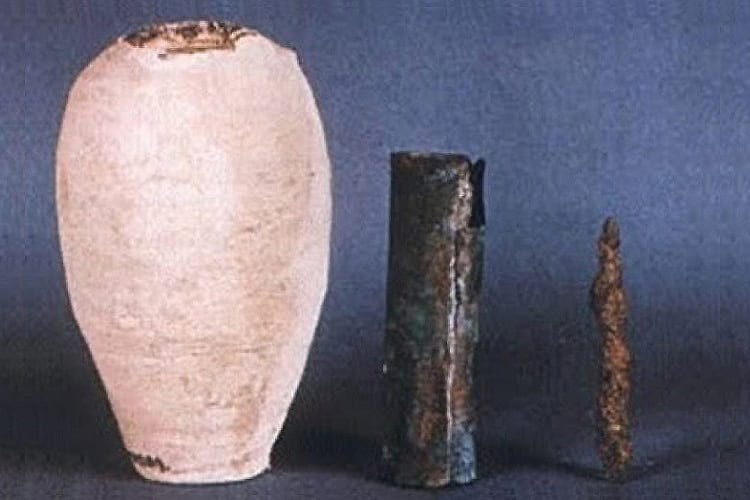
Components of Baghdad battery. (Unknown)
The interest in ancient civilisations heightened after the end of World War I, especially in Iraq. Evidence of human settlements goes back to several decades ago in Mesopotamia, also known as the ‘Cradle of civilisation‘. Archaeologists from Europe and the United States were executing excavations all over Iraq, in an effort to understand the beginning of civilisation. It was during this period that a German archaeologist rediscovered a puzzling artefact in a museum’s collectibles in 1936. Consisting of three parts, this was named the Parthian Battery or the Baghdad Battery.
What is Baghdad Battery?
The Baghdad battery is an unassuming looking earthen jar of 10 to 14 centimetres in height, with a copper cylinder inside. The copper cylinder further has a vertical iron rod. The battery is believed to have been used as an electric battery. It has been categorised as an oopart, an out of place artefact, due to the advanced level of technological knowledge it represents. An oopart is an ancient relic showing some skilled work from a period when it does not seem possible for people to have had that kind of knowledge.
Several of these batteries were rediscovered by Dr. Wilhelm König, stored in the Iraq museum. Upon inspecting it closely, he discovered that the iron and the copper were insulated from each other with an asphalt stopper. This led him to theorise that it was probably used as a battery for electroplating. If the vessel was filled with an electrolytic solution, a small current could be generated due to the voltage difference between the two metals. Putting out the idea that ancient civilisations were probably able to generate some form of electricity, centuries before human knowledge and technology could achieve it.
How was Baghdad Battery discovered?
Back in 1922, an archaeologist, Gertrude Margaret Lowthian Bell of Great Britain, started to store all dug up collectables in a government building in Baghdad. The government decided to move these priceless artefacts to another building and established it as the Baghdad Archaeological Museum, with Bell as the museum director. It was officially opened in June 1926, a little before Bell’s death on July 12, 1926.
More than a decade later, a German archaeologist, Dr. Wilhelm König was appointed as the Assistant Director of the Baghdad Antiquities’ Administration. He went on to take over as Director of the Baghdad Museum Laboratory in 1934 and subsequently discovered this battery. Later, he went on to publish a paper on it. By 1966 the museum had been further moved to a bigger two-story building and renamed National Museum of Iraq. What followed were the various experiments to determine the authentic use of the battery and its strange disappearance.
The experiments to prove the functioning of the battery
An engineer, Willard F.M. Gray came across Dr. König’s paper in 1940 and was fascinated by the concept of the Baghdad Battery. He was working at the General Electric High Voltage Laboratory in Pittsfield, Massachusetts at that time and decided to make a model of the battery. Studying the drawings and other details given by renowned rocket scientist Willy Key of German origin, Gray was able to recreate the battery. When he filled it with copper sulfate solution, he discovered that it could generate a small amount of electricity of 0.5 volts.
A fascinating fact was aired on the episode ‘Ancient Wisdom‘ of the British television series, Arthur C. Clarke’s Mysterious World on September 16, 1980. In this episode, German Archaeologist, Dr. Arne Eggebrecht said that after filling the battery container with grape juice, he was able to record a current of 0.87 volts. This led to the speculation that batteries were invented long before their known invention in 1799 by Alessandro Volta, further leading to the assumption that the batteries were probably also used during Egyptian civilisations where electroplated metals have been found.
Assumptions have been rife about the various uses of the battery. Ancient Greeks were known to treat pain with an electric eel, leading to the possibility of the batteries being used to treat pain. Some have suggested that the containers were merely holders for paper scrolls, with the paper wrapped around the iron rod and preserved by the copper jar. Theories of the battery being used inside idols of worship to inject a small current into those who dared to touch the Gods also did rounds.
The disappearance of the battery
A little prior to the invasion of Iraq on March 20 in 2003, the museum closed its doors to the public. Nearly 8,366 small items were hidden away at a storage location, sworn not to be revealed to anyone, by a few members of the staff. The larger ones that could not be moved and a few other items were covered with foam and rubber for protection. On April 10 in 2003, the museum was plundered and more than 10,000 items were stolen. One of those was the Baghdad Battery. An assessment of losses incurred and an investigation report was submitted by US Marine Colonel Matthew Bogdanos, who made an extensive list of the number of stolen artefacts. Bogdanos was convinced that the stealing had taken place in 3 parts in different instances.
Due to a local amnesty programme, and through seizures, around 3,037 items were recovered by January 2004. A year later, by January 2005, the museum had received another 2,307 items that had been stolen. On January 30 in 2012, 45 missing relics were returned to Iraq by Germany. However, according to the general director of the museum, Amira Eidan, nearly 10,000 antique national treasures were still missing at that time. The National Museum of Iraq officially reopened to the public in February 2015. One of the rare artefact that is still missing is the Baghdad Battery.
The purpose and the current location of the Baghdad Battery, both remain a mystery till date. The Baghdad Battery is just one of the many unexplained ancient phenomena that have been encountered by modern man.
Enjoyed this article? Also, check out “Yakhchal: The Indigenous Fridge of Middle-East“.
Recommended Visit:
National Museum of Iraq | Baghdad, Iraq
Fact Analysis:
STSTW Media strives to deliver accurate information through careful research. However, things can go wrong. If you find the above article inaccurate or biased, please let us know at [email protected].
RELATED
The post The Curious Disappearance of the Baghdad Battery: A Parthian Period Relic, An Oopart appeared first on .
]]>The post Marlboro Man: When Marlboro’s Ad Campaign for Cigarettes Ironically Got its Lead Models Killed appeared first on .
]]>
A Marlboro Man billboard in Warsaw, Poland. Circa 2000. (Cezary p / Wikimedia Commons)
The Marlboro cigarettes have long been associated with the ‘Marlboro Man’, the macho cowboy who endorsed the brand and convincingly stamped it as a man’s cigarette. However, very few are aware of the fact that the brand also earned an unpopular nickname ‘Cowboy killers’.

Philip Morris. (Wikimedia Commons)
The humble beginnings of the brand can be traced back to a shop in London in 1847. The shop was owned and operated by a retailer of tobacco products, Philip Morris on Bond Street. His brother Leopold Morris established ‘Philip Morris & Company and Grunebaum, Ltd’ with Joseph Grunebaum in 1881. Dissolving the partnership in 1885, the company ‘ Philip Morris & Co., Ltd’ came into existence. After changing hands in 1894, Marlboro was launched as a lady’s cigarette by Philip Morris & Co., Ltd. in 1924, the company’s most famous brand till date. Marlboro went on to become the number-one-selling cigarette by 1972.

A poster advertisement of Philip Morris. (Linley Sambourne / Picture Posters by Charles Hiatt)
In 1924, Philip Morris & Co., Ltd. who launched a filtered cigarette, Marlboro for women with the slogan ‘Mild as May‘, boasted of red cellulose around the filter to hide lipstick stains.
Cigarette smoking was on the rise due to aggressive marketing, which arose from increased production through automatic rolling machines. Filtered cigarettes were a small 0.6% of the cigarettes manufactured and were considered feminine. However, scientific evidence started linking smoking cigarette to respiratory and heart ailments.
By the mid-twentieth century, public awareness campaigns were propagating the adverse health effects of the use of tobacco. This led to a changeover in the design of cigarettes which to date is the most popular one marketed worldwide. More and more cigarettes were using filters to reduce tar and nicotine intake by a smoker.
From a lady’s cigarette to the macho man
Philip Morris & Co. tried desperately to market the filtered cigarettes of Marlboro as the better choice for men and women but failed to hit the mark with men. Their advertising emphasised on the ‘healthier’ choice in cigarettes by adding a tagline “play safe with your throat”, in 1941. They used strong powerful looking men in their campaigns. Nevertheless, men were averse to endorsing a brand that was associated with women. The filtered Marlboros were unable to dominate market sales and were only occupying a meagre 1% of the 51% share of market sales of filtered cigarettes. As a last resort to revive Marlboro as a better choice, Philip Morris & Co. agreed to take on the services of adman Leo Burnett, who had recently started his own agency.

Marlboro Ad in a magazine, 1972. (Anton Raath / Flickr)
Burnett suggested repackaging Marlboro completely to position it as the rugged macho man’s choice. His first ad for Marlboro was inspired by the cover of Life magazine in 1949. Shot by famed photojournalist of Life magazine Leonard McCombe, it featured a cowboy in a stubble smoking a cigarette. McCombe did a photo essay on the life of a cowboy. It documented Clarence Hailey Long, Jr. at the JA ranch in Texas. Subsequently, Burnett started using the cowboy theme for Marlboro ads. It featured models and actors, enacting a cowboy’s life. The response to the new ad campaigns was an increase in sales of Marlboro and finally on 15 November 1954, Leo Burnett was officially appointed as the advertising agency for Marlboro cigarettes. In 1955, the Marlboro Man campaign was launched and the sales saw a 3000% increase from the previous year generating revenue of $5 billion. In 1957, Marlboro sales generated revenue of $20 billion.
The Marlboro Man
The Marlboro Man till date is known as the most iconic ad campaign and Burnett’s most famous creation. However, Leo Burnett was not convinced by the actors playing cowboys and was on the lookout for a real cowboy who exuded the aura of raw machismo. Burnett came across Darrell Winfield who worked as a ranch hand in the town of Pinedale, Wyoming in Texas and was completely floored by his persona. In Burnett’s own words, “I had seen cowboys, but I had never seen one that just really, like, he sort of scared the hell out of me”. Winfield went on to play the legendary Marlboro Man from 1968 to 1989, epitomising the quintessential rugged American cowboy. Marlboro had arrived! The filter cigarettes became the most sought-after masculine accessory.
However, a few years later, they were labelled ‘Cowboy killers’ or ‘Killer Reds’ when reports came out of 5 Marlboro men dying due to smoking-related illnesses. David Millar was one of the first Marlboro Man in a TV ad campaign. Millar was petrified of horses and had to be lifted on to one for the shooting of the ad film. He died of emphysema at the age of 81 in October 1987. Stuntman Wayne McLaren was the first Marlboro Man to actively participate in anti-smoking campaigns. Two years before his death in 1992, he started working as an anti-smoking activist. He died of lung cancer. David McLean was an actor who played cowboy in TV westerns. He was also the Marlboro Man in the 60s. He died of lung cancer in 1995. Richard Hammer was a fire-fighter who turned into an actor and also played the Marlboro Man, ultimately died because of lung cancer in 1999. Eric Lawson was the Marlboro Man in the late 70s. He was the fifth Marlboro Man to die of a smoking-related illness. He passed away on 10 January 2014 at the age of 72.
The Marlboro Man was forced to retire in 1999 when the Tobacco Master Settlement Agreement came into existence, banning public cigarette billboards in the US.
Enjoyed this article? Also, check out “The Secret Behind the Centennial Light that Continues to Defy Planned Obsolescence“.
F act Analysis:
STSTW Media strives to deliver accurate information through careful research. However, things can go wrong. If you find the above article inaccurate or biased, please let us know at [email protected].
RELATED
The post Marlboro Man: When Marlboro’s Ad Campaign for Cigarettes Ironically Got its Lead Models Killed appeared first on .
]]>The post Juana Maria: The Isolated Woman of the Remote San Nicolas Island appeared first on .
]]>
Juana Maria. (Edwin J. Hayward and Henry W. Muzzall / Southwest Museum of the American Indian)
The Channel Islands of California are a cluster of eight islands found in the Pacific Ocean near California. A long time ago, the Native American tribes of Chumash and Tongva were once the inhabitants of these islands. They were later displaced by European settlers who started fishing and agriculture on the islands. The US Military now uses these islands for testing their weapons.
The remotest of these Channel Islands is San Nicolas, which is 98 kilometres from the nearest point on the coast, towards the west of Los Angeles. The island was once inhabited by the Native American tribe, Nicoleño. There is a famous children’s novel about a Native American girl stranded on an island in the Pacific written by renowned American author Scott O’Dell. The book, ‘Island of the Blue Dolphins’ is inspired by a Nicoleño woman Juana Maria, popularly known as the ‘Lone Woman of San Nicolas Island’. She was the last surviving Nicoleño who lived a solitary life on the island for nearly two decades.
The origins and eventual evacuation

San Nicolas Island. (US Navy)
It has been hypothesised that the Southern Channel Islands of Santa Catalina, San Clemente and San Nicolas had settlements of Native Americans for nearly 10,000 years. In 1811, a Russian-American company started doing business off the coast of California. Their business was to hunt otters and seal for their skin, which was in great demand. The company employed Alaskan sea otter hunters and Russians. These people arrived on the San Nicolas Island in 1814 and a conflict started between them and the Nicoleño tribe. The hunters brutally killed off the Nicoleño men and made the women their slaves.
In 1815, the Spanish authorities tried to take charge of the hunting of the sea otter and arrested a Russian, Boris Tasarov for the hunting expeditions. By then, not only had the sea otter population dwindled but it was also discovered that there were hardly any surviving members of the Nicoleño tribe.
Catholic missionaries soon began visiting the island and convincing the tribal people to relocate under the Catholic Church. In 1835, the Santa Barbara Mission got wind of the fact that a handful of Nicoleño people still existed on the San Nicolas Island. They dispatched a small ship called ‘Peor es Nada’, meaning ‘Better than Nothing’ to the island in an effort to get the Native Americans on shore. The events that followed though ambiguous are what led to the existence of the woman we know as Juana Maria. While the people of the island willingly climbed aboard to be relocated, it is said that a woman and a child got left behind. The captain of the ship, Charles Hubbard was in a hurry to reach Santa Barbara as a storm was brewing. The other version of hearsay is that the woman on realising that a child (either her’s or her brother’s) got left behind, jumped from the ship and swam to the island. The captain considered it was better to come back for them after the storm had passed. Later, several trips to the island were in vain, as that woman and child could not be found again.
The discovery of Juana Maria
Over the years, sailors claimed to have seen a woman on the island while passing and the legend grew. However, in 1850, an otter hunter went to San Nicolas and stated that he had come across a hut on the island. Soon after, the Mission Santa Barbara sent a local to look for her on the island, but in vain. Piqued by the legend of the lone woman of San Nicolas Island, American sailor, George Nidever decided to visit the island in 1853 determined to find her. He embarked on a mission to the island to look for her while hunting for otters also. Unfortunately, he failed to locate her in his first two trips. On the third attempt, a member of Nidever’s team, Carl Dittman came across human footprints and crude tools along the beach. Shortly afterwards, Nidever and his men found her nearby and tried to initiate a conversation with her, fruitlessly. With the inability to understand her language, they started calling her ‘Better than nothing’, after the ship that she had missed 18 years ago.
She keenly showed the men around the island and helped them find freshwater for drinking. Their stay with her revealed her way of living alone and surviving for all those years on the island. According to George Nidever, she explained by gestures that the child she had gone back for had been killed several years ago by wild dogs. She had survived on seafood and seals which she killed with the crude tools that she had made herself. She showed them her various hiding sites, caves and canyons, where she kept herself safe from invaders. Finally, when Nidever decided to head back to Santa Barbara, she willingly accompanied the crew back home.
The spectacle of Santa Barbara
Back in Santa Barbara, she was taken care of by Nidever’s wife, Sinforosa Sanchez Nidever. No one was able to understand her language, which resulted in no knowledge about her tale of 18 years as a lone survivor on the island. She soon became famous and tourists thronged to see her. The newspapers frequently wrote about her adjustment with a civilised lifestyle. The people of the mission tried to get Native Americans to listen to her songs in an effort to find someone who knew the language and could help with the true identity and 18-year-old story of the woman, but to no avail.
She did not seem to mind the attention that she got from the people around or those visiting. She graciously accepted gifts that were given to her and generously distributed them among George Nidever’s children. Linguists were unable to determine her dialect and wondered if the language that she spoke in, was one that she herself had invented. Soon, the Santa Barbara Mission decided to name her in order to give her an identity. Unfortunately, she fell ill with dysentery and passed away seven weeks from arriving at the mainland on October 19 in 1853. She was baptised the same day as Juana Maria.
Enjoyed this article? Also, check out “Vesna Vulovic: The Woman who Plummeted from 33,000 Feet and Survived“.
Recommended Read:
Island of the Blue Dolphins | By Scott O’Dell
Fact Analysis:
STSTW Media strives to deliver accurate information through careful research. However, things can go wrong. If you find the above article inaccurate or biased, please let us know at [email protected].
RELATED
The post Juana Maria: The Isolated Woman of the Remote San Nicolas Island appeared first on .
]]>The post Tana Toraja in Indonesia: The Celebratory Funeral Ceremonies and the Tree of Baby Graves appeared first on .
]]>
Tree burial by Tana Toraja. (Michael Gunther / Wikimedia Commons)
The South Sulawesi Province in Indonesia is home to the Tana Toraja Regency comprising of the native mountain tribe, Toraja. The Toraja people mostly follow the philosophy that all natural things have souls, also known as Aluk (the way). Their animistic belief has been given recognition by the Indonesian government as ‘Aluk To Dolo’ (way of the ancestors). The term Toraja comes from the Indonesian language Buginese word ‘to riaja’, which means ‘people of the uplands’.
In Torajan society, each village is an extended family named after the most important member’s tongkonan, a traditional house. The name of the tongkonan becomes the name of the village and also the primary place for conducting all social events. The distinct feature of a tongkonan is the boat-shaped roof, much like a sweeping arc. Torojans have become famous all over the world, attracting tourists every year, for their detailed memorial services.
The celebration of life and afterlife

Children of Toraja ethnic group during a family funeral. (Arian Zwegers / Flickr)
In Toraja social norms, the ritual of a funeral, known as ‘Rambu Solo‘ is the most important and elaborate event. A Toraja memorial service lasts for quite a few days and is typically attended by several people. The extent of the service is in accordance with the social status of the deceased.
The Aluk religion states that only the upper class can have an extensive feast along with the memorial service. It involves the preparation of a ceremonial site known as ‘rante’ with shelters for the people participating and other things needed for the last rites.
The belief of the Torajans is that death is not abrupt, but an ongoing process towards ‘Puya’, the land of souls. Death hence becomes more of a celebration of life for them and the rituals are performed as a farewell party over days. The body of the deceased is covered with multiple layers of cloth to be kept beneath the tongkonan.
The soul is said to hang around the village till all the rituals are complete and then embark on its journey towards Puya. Till the final ceremony starts, the deceased is laid down on his bed with his head in the west. This is so that whenever the sleeping person wakes up, it sees the rising sun. Family members also visit the sleeping person every day with food and drinks and sometimes sit there to chat.
Tana Toraja baby tree: The cradle graves of babies
After a long drawn out funeral ceremony, comes the elaborate burials of the Torajans. The coffin is often put in a cave, in a grave carved in stone, or hung from a cliff. The deceased are adorned with their favourite ornaments and any other possessions that they may require in Puya.
Once the burial is complete, a wooden effigy known as Tau tau is placed outside the cave. Tau taus are placed looking over the land of the village as they are known to protect the village.

Tat tau outside the stone burial site. (Kars Alfrink / Flickr)

Graves inside a large stone. (Kars Alfrink / Flickr)
The coffin of a child is hung from a cliff and babies are buried inside hollow trees. This is the smallest burial ground of the Torajan custom. If a baby dies who has not started teething, then its body is placed inside a tree.
A small space inside the trunk of a tree is hollowed out to place the body. The baby is then wrapped in cloth and placed in it. As their belief goes that all natural things have souls, so they believe that the baby becomes a part of the tree.
As the tree heals, the baby is absorbed into the tree and the soul is guided by the winds in the tree to the afterlife. The opening of the baby’s grave is covered with a door made of palm fibre. Several babies can be buried inside one tree.
The 3-year corpse fest, Ma’Nene
Every 3 years, the Torajans exhume the dead bodies of their loved ones to wash them, dress them up in new clothes and display them proudly. This is known as the Ma’Nene festival which honours the dead and shows the fact that the dead have not been forgotten. This is their way of showing respect to the dead. Another important ritual during this festival is to repair or replace the coffins for the bodies. This festival has been celebrated every 3 years for centuries now.
The unusual customs and rituals of the Toraja tribe have led to widespread intrigue over their culture. The exhaustive funeral service and other ceremonies pertaining to death have attracted hordes of tourists every year. Anthropologists have shown an increased interest in the practices of the Torajans. Since 1984, the Indonesian Ministry of Tourism has named Tana Toraja the second tourist destination after Bali in Indonesia.
Enjoyed this article? Also, check out “The Island of the Dolls: Nothing Childlike About It“.
Fact Analysis:
STSTW Media strives to deliver accurate information through careful research. However, things can go wrong. If you find the above article inaccurate or biased, please let us know at [email protected].
RELATED
The post Tana Toraja in Indonesia: The Celebratory Funeral Ceremonies and the Tree of Baby Graves appeared first on .
]]>The post The Unusual Glass Beaches of California and Hawaii appeared first on .
]]>
Glass Beach at Fort Bragg, California. (Lisa Nottingham / Flickr)
Sea glass is nature’s way of churning garbage into stunning pieces of beauty. The formation of sea glass occurs from normal glassware that has been discarded on beaches or in saltwater. Broken pieces of glass tossed away in the sea, sometimes even from shipwrecks, go through a process of being broken down further and smoothed by being hurled around in the water. A product of the combined efforts of man and nature, it takes several years for beautiful sea glass to form. A high-quality piece of sea glass is one that is well frosted and has smooth edges.

Close up of sea glass. (Moximox / Wikimedia Commons)
The discarded glass is broken down by the roughness of the sand and also gets smoothed as it rolls around. Typically, the abrasive action of the sand is like that of sandpaper used on rough surfaces for a refined, finished look. The pits formed in the glass due to hydration, lend a softer feel to it. Hydration is when the soda and lime that goes into the process of making glass, leaks out, leaving pits. These two elements play an important part in the formation of sea glass. As they trickle out of glass objects, these elements sometimes react with minerals in the seawater, leading to the formation of new mineral deposits on the glass. These deposits are responsible for the glittery appearance of sea glass, putting it in the same category of quality as gemstones.
Glass Beaches: How sea glass came into existence?
The existence of sea glass started around the time man started making glass. In the olden days, the legend goes that each time a sailor died at sea, the Mermaids would weep for him. Their tears would crystallize as they fell into the water, creating sea glass in the process. Hence the popular name, ‘Mermaid Tears’.
Glass Beach in California
Sea glass can be found near water bodies that have had a dumping ground nearby. Earlier, it was a common practice to discard waste in water to be carried away by the current. Fort Bragg in California is one such place which was a common dumping ground for the town till 1967.
In 1906, a water body behind a lumber company was established as the official dumping ground for the town’s waste, known as Site 1. When this started filling up in 1943, another site was assigned for the dump, known as Site 2. However, the dumping ground was again moved in 1949 to the area which today, is known as ‘Glass Beach’.
Beaches in the neighbourhood of old ship dockyards like the Chesapeake Bay also have sea glass washed ashore from time to time. Ships often discarded their waste into the water when they docked at a port. Another famous Glass Beach is in Eleele near Kauai in Hawaii. The beach is in the Hanapepe Bay, easily identified by the large gasoline tankers that are common in the area of Port Allen Harbour. Similarly, a dumping site of the Soviet era has now turned into a mesmerising Glass Beach on Ussuri Bay in Russia.
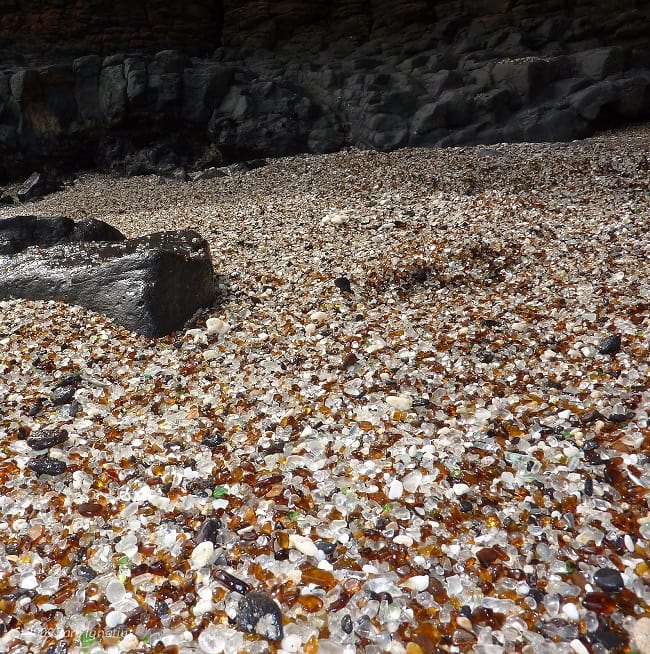
Kauai glass beach, Hawaii. (Barb Ignatius / Flickr)
The best time to look for sea glass is during low tide or when a storm has passed, due to which the strong water currents will wash sea glass ashore or probably expose old buried sea glass.
The variety of this ‘reverse gem’
Natural gems are made by nature and given finishing touches by man. Sea glass is also referred to as ‘reverse gem’ for the simple reason that it is made by man and finessed by nature. The value of sea glass often depends on the colour of the glass.
The sapphire sea glass comes from discarded medicine bottles that were made from cobalt blue glass. The rare ruby glass comes from old discarded taillights, lanterns or traffic lights. It could also be from old discarded beer bottles of a famous beer of the 1950s sold in a royal ruby red coloured bottle. The purples, pinks, lime greens and other rare colours were often used in making perfume bottles or artwork which, when discarded, turned into similar hues of sea glass. A lot of lavender and pink sea glass could also be the result of clear glass reacting with magnesium to create a lavender coloured glass, or selenium reacting to give a pink coloured sea glass. A whole lot of beer bottles, coloured glass shampoo bottles, and bottles of bleach could be the reason behind sea glass in greens, browns and aqua colours.

Glass Beach, Hawaii. (Eric Lin / Flickr)
Whatever the colour, this gem of the sea has become rare with the advent and use of plastics. So, whenever you come across one, make sure you spend the time to admire the work of nature.
Enjoyed this article? Also, check out “Reynisfjara: The Black Sand Beach that Looks Straight out of a Gothic Novel“.
Recommended Visit:
1. Fort Bragg Glass Beach | California
2. Eleele Glass Beach | Hawaii
Fact Analysis:
STSTW Media strives to deliver accurate information through careful research. However, things can go wrong. If you find the above article inaccurate or biased, please let us know at [email protected].
RELATED
The post The Unusual Glass Beaches of California and Hawaii appeared first on .
]]>The post Captain Jack Bonavita: The One-armed Lion Whisperer appeared first on .
]]>
Captain Jack Bonavita with his pride. (Internet Archive Book Images / Flickr)
Dreamland was an amusement park that opened at Coney Island in Brooklyn, New York on May 15, 1904. It was counted as one of the three most iconic amusement parks built on Coney Island. Famous animal trainer and owner of his own circus, Frank Bostock was hired by the park management to stage his circus acts in an indoor arena. Several animal trainers, each with their own acts, were associated with Bostock’s circus. One of the major attractions of the circus was the renowned lion tamer, Captain Jack Bonavita. He was known to be the only man to appear in the arena with as many as 27 lions. His control over the big cats drew crowds to the park.
Unfortunately, in 1904, Bonavita had to have his right arm amputated, which got infected after a lion named Baltimore clawed him in an adverse encounter. Baltimore was an untrained wild beast. The captain was trying to train him and get him to perform his first stunt. It is said that the cat attacked Bonavita when he took his eyes off the beast briefly. Bonavita resisted amputation for eight months after which, following further deterioration, he agreed to it in February 1905. However, as a one-armed lion tamer, he attracted more and more people to his performances with the cats.

Dreamland amusement park at Coney Island, New York City (1904-1911). (Detroit Publishing Company photograph collection / Library of Congress)
Captain Jack Bonavita: The man, the legend
The real name of Captain Jack Bonavita was Johann Friedrich Gentner. He was born on December 15, 1866, and brought up in Philadelphia, Pennsylvania in the USA. He started his career as a circus acrobat but went on to become a world-famous animal trainer. Bonavita was known over the world as the lion whisperer, simply due to the fact that the cats obeyed his commands. What led to his fame was his majestic demeanour. Always dressed in military apparel and boots, his muscular frame attracted many female admirers. To add to this was his complete fearlessness while working with the big jungle cats.
His most famous act was called ‘The Arm-Chair’ which had Bonavita sitting on a chair surrounded by 13 calm and composed lions. The captain made his debut at Moulin Rouge in Paris on July 31 in 1904 wherein his opening act he was attacked by the lion, Baltimore. Also, the Princess of Montglyon, Rosalie F. Mercy d’Argenteau had come to see the act of the great American lion tamer with his beasts. It is said that not only did she rush to the stage when the incident took place but also went with Bonavita in the ambulance, to the hospital. She stayed with him throughout his recovery and they finally got married on April 26, 1905, in Paris. However, two years later, the two parted ways and were divorced.

The arm-chair act by Captain Jack Bonavita. (thecircusblog.com)
The film career and the end
The amusement park, Dreamland was completely ruined in an accidental fire in May 1911. On May 27 in 1911 at about 1.30 am a fire broke out due to an electrical malfunction, which consumed everything that came in its way, turning the park into ashes. Bonavita rushed to save the animals but 60 perished in the fire. One of the lions, Black Prince ran out on the road and was shot dead by policemen. Dreamland was lost forever.
Bonavita went on to pursue films from 1913 to 1917. He worked as a stuntman, an actor, and a director. His first film as an actor, a silent black and white movie ‘The Wizard of the Jungle‘, released on April 5, 1913. He directed and acted in another silent black and white film ‘The Woman, the Lion and the Man‘ which released on September 23, 1915. Another famous film that he directed and acted in, ‘The Winning of Jess‘, released on December 23, 1915. His films always featured wild animals and also some of the trainers that he had worked with. Bonavita also continued his stints with Bostock’s Circus, training animals at Frank Bostock’s farm in Los Angeles, California.
On March 19 in 1917, Bonavita was training a polar bear, while going through a routine, the animal unexpectedly attacked him. A policeman nearby shot six bullets into the bear, killing it. Bonavita, on the other hand, had been mauled aggressively, suffered a fractured jaw and multiple deep lacerations. Unable to recover from the attack, Captain Jack Bonavita succumbed to his injuries, later that night.
Enjoyed this article? You would also love “The Time When Men Fought Bears“.
Fact Analysis:
STSTW Media strives to deliver accurate information through careful research. However, things can go wrong. If you find the above article inaccurate or biased, please let us know at [email protected].
RELATED
The post Captain Jack Bonavita: The One-armed Lion Whisperer appeared first on .
]]>The post Blue Fugates: The Blue Family of Kentucky appeared first on .
]]>
The blue family of Kentucky, also known as the “Blue Fugates”. (Unknown)
The Fugate family lived in Kentucky, USA during the nineteenth century and were famous for their blue toned skin. They suffered from a rare genetic disorder of the blood known as methemoglobinemia. The red blood cells in the human body have haemoglobin which releases oxygen into the blood. Methemoglobin is a type of haemoglobin that carries oxygen but does not release it into the blood tissues, resulting in less oxygen in the human body. This gives rise to methemoglobinemia, leading to blue coloured skin due to lack of adequate oxygen.
Blue Fugates of Kentucky
Born in France in 1783, Martin Pettis Fugate was an orphan who married and settled down in the Hazard area of Perry County in Kentucky sometime in the beginning of the nineteenth century. Martin and his wife Elizabeth Smith both suffered from methemoglobinemia. Though Martin was visibly blue, Elizabeth was described to having pale skin. They went on to have seven children, out of which, four were blue like Martin. What they were not aware of at that time was, that the presence of the disorder in both parents, posed an increased chance of getting passed on to the children as well.
Living in the remote settlement of Troublesome Creek led to a high level of marriage between the few families that settled there. Sometimes, first cousins ended up marrying each other. This eventually led to the passing of the defect to several generations for almost 150 years before it could be medically diagnosed.

Transmission of Methemoglobinemia (gene defect) from parents to children. (Cburnett / Wikimedia Commons)
The last blue Fugate
One of the couple’s sons Levy married Mahal Ritchie from a neighbouring family. They went on to have eight children out of which, one was blue. Their daughter Luna was the bluest and the first of the Fugates to move away from Kentucky. She was also the first to break away from the gene pool and settle down in matrimony with a man not related to the community, John E. Stacy. Together they had thirteen children, none of whom were blue. Thereafter, the blue people were not remembered much, until the birth of Luna’s great-grandson Benjamin Stacy in 1975.
When Benjamin was born, the doctors panicked at his blue skin tone. He was immediately rushed in an ambulance from the maternity hospital to a multi-speciality hospital for treatment. After a series of tests that revealed no illness, the doctors thought it was wise to have a blood transfusion for the newborn. It was then that Benjamin’s grandmother informed of being a blue Fugate and the colour could conclusively be attributed to the genetic disorder. Benjamin grew into a healthy adult. However, his lips and fingernails would turn a shade of blue whenever he felt cold or angry.
Treatment
Meanwhile, much earlier in 1960, the stories of the blue people of Troublesome Creek caught the attention of a young haematologist Dr. Madison Cawein. Cawein had just started work at the University of Kentucky’s Lexington medical clinic. He made frequent trips to Hazard in the hope of finding some blue people. At the American Heart Association clinic in Hazard, he came across nurse Ruth Pendergrass who had interacted with a blue woman at the clinic. Ever since Ruth had met the woman, she had been trying to draw medical attention to their peculiar condition. The dark blued woman had come to the clinic for a blood test. When Ruth panicked on seeing her colour, she had assured Ruth that she came from a lineage of blue coloured people.
Ruth and Cawein started walking around the hilly area in search of the elusive blue people. One such day, while Cawein was at the clinic, siblings Rachel and Patrick Ritchie walked in. They came seeking treatment for their unusual colouring. Once Cawein ruled out heart and lung diseases, he inquired about their family history. They turned out to be Fugate descendants. Upon further research, he came across a report in the Journal of Clinical Investigation (vol. 39, 1960). It had been written by E.M. Scott, a physician at the Public Health Service in Alaska based on similar case studies he had come across in the city of Anchorage. In a study of Eskimo families who suffered from congenital methemoglobinemia, Scott concluded that the hereditary absence of the enzyme diaphorase was responsible for increased methemoglobin in the blood. Hence, the term, ‘methemoglobinemia’ or ‘hereditary diaphorase deficiency’.
Cawein proposed using methylene blue as an antidote for converting methemoglobin back to normal haemoglobin. Cawein had read in earlier studies that the body could be activated to do the needful by adding an ‘electron donor’, and methylene blue had been used successfully in such cases. He and Ruth paid a visit to the Ritchie siblings and injected each with 100 milligrams of methylene blue. In a couple of minutes, their colour returned to normal. Ruth is known to have said, “They changed colours! It was really something exciting to see.”
Tablets of methylene blue were given to all members of the blue families, to be taken daily. Cawein went on to publish his research along with his colleagues on hereditary diaphorase deficiency, in April 1964 in the Archives of Internal Medicine. The last known blue Fugate, Benjamin had Fugate blood from his mother’s and father’s side but was assumed to have inherited only one gene for his condition. In such cases, the diaphorase enzyme gradually comes up to normal or near-normal levels as the child grow older, which was also what happened in Benjamin Stacy’s case.
Enjoyed this article? Also, check out “Stone Man Syndrome: Rare Disease, Fibrodysplasia Ossificans Progressiva that Immobilises Your Body“.
Fact Analysis:
STSTW Media strives to deliver accurate information through careful research. However, things can go wrong. If you find the above article inaccurate or biased, please let us know at [email protected].
RELATED
The post Blue Fugates: The Blue Family of Kentucky appeared first on .
]]>The post Fedor Jeftichew: Jo-Jo the Dog-Faced Human Prodigy appeared first on .
]]>
Photo of Fedor Jeftichew. (Charles Eisenmann / kingdomofstyle)
Fedor Jeftichew was born in the year 1868 in St. Petersburg, Russia. He suffered from hypertrichosis, a medical condition that leads to abnormal growth of hair on the body. His father, Adrian Jeftichew suffered from the same condition and became famous all over Europe in 1873 as the wolf man. Adrian appeared in many exhibitions as the ‘Wild Man from Kostroma Forest‘, accompanied by Fedor, who was his illegitimate son.

Fedor Jeftichew with his father Adrien Jeftichew. (Claude-Antoine Lumière / la.callas)
Adrian was advertised as the result of a Russian village girl’s affair with a bear. The horrific thought of such a mating piqued the curiosity of people who thronged to see the duo.
Though Adrian repulsed people with his dishevelled looks and crude behaviour, Fedor captured their hearts with his lively nature. Fedor picked up many languages by interacting with the audience in their native tongue. Later that year, Adrian died due to alcoholism.
Discovery of the talent
In 1884, a talent agent of Phineas Taylor Barnum saw Fedor exhibited in Liverpool in North West England and decided to approach him for joining Barnum’s human freak shows. Fedor joined the show that same year in America, as it paid better. P.T. Barnum had started a travelling show in 1835 featuring unique humans. From Siamese twins to giants and dwarfs, Barnum labelled his show a freak show. In 1841, he expanded and opened at the American Museum in Manhattan.
He turned it into a bigger show on April 10 in 1871 when he opened ‘P.T. Barnum’s Grand Travelling Museum, Menagerie, Caravan, and Circus‘ in Brooklyn. This went on to become ‘Barnum & Bailey Greatest Show On Earth‘ in 1887 featuring Fedor and other unusual people.
Barnum had created a striking story around the discovery of Jo-Jo. The story spread was, that a hunter in the forest of Kostroma had come across Fedor and his beast-like father. He managed to track down the duo to their cave. The father had been a savage, impossible to turn into a cultured human being and was killed by the hunter. The child, Fedor was gentle and was captured.

A poster for Fedor Jeftichew’s sideshow. (Wikimedia Commons)
Barnum went on to be known as the ‘Greatest Showman on Earth’. His sideshow performers were well looked after, heavily promoted and earned a good amount. Some of them became well known and were rolling in money. Barnum died in 1891 and the performers protested in 1898 for being called ‘freaks’, with Fedor Jeftichew in the lead. The same year, Fedor and a group of other experienced sideshow performers were granted the legal right to be publicised as ‘prodigies’.
The journey of Fedor Jeftichew: The dog-faced man
When Fedor Jeftichew joined P.T Barnum, he was renamed Jo-Jo ‘The Dog-Faced Man’. He always wore a Russian cavalry uniform which sharply contrasted with his animalistic looks. He was received well by the curious audience, mostly because of his friendly amicable behaviour. Fedor was kind, gentle and dignified. People of the press came close and tugged on his facial hair to verify his appearance.

Fedor Jeftichew in his Russian cavalry uniform. (Charles Eisenmann / Syracuse University Digital Library)
Barnum stressed on Fedor’s likeness to a dog to the extent of proclaiming that he barked and growled when agitated. Though Fedor obliged Barnum by displaying certain dog traits when asked to, Jo-Jo was described by the New York Herald as playful as a pup in his interactions with the audience and “the most absorbingly interesting curiosity to ever reach these shores”.
He worked with Barnum till 1901, and then went on to tour and performed all over the world. He was one of the highest paid performers of ‘Barnum & Bailey Greatest Show on Earth’ that time, earning USD 500 a week in 1886. During his stint with P.T. Barnum, Jo-Jo was advertised as “The most prodigious paragon of all prodigies secured by P. T. Barnum in over 50 years”.
Fedor fell sick with pneumonia during a tour in Greece in 1904. Unable to recover, he passed away on January 31, 1904, in Salonica, Greece. His death was sorely mourned by sideshow performers and show enthusiasts, all over. As for the Barnum & Bailey Show, it was sold to the Ringling Brothers on July 8, 1907, and renamed the ‘Ringling Bros. and Barnum & Bailey Circus‘ in 1919. The circus performed its last shows in May 2017, bringing an end to an era.
Enjoyed this article? Also, check out “‘Ape Woman’ Julia Pastrana: The Sad and Short Life of the Ugliest Woman in the World“.
Fact Analysis:
STSTW Media strives to deliver accurate information through careful research. However, things can go wrong. If you find the above article inaccurate or biased, please let us know at [email protected].
RELATED
The post Fedor Jeftichew: Jo-Jo the Dog-Faced Human Prodigy appeared first on .
]]>The post A Tale of Resilience: Poon Lim, the Chinese Sailor who Survived 133 Days Castaway in the Atlantic Ocean appeared first on .
]]>
Photo of Poon Lim and his raft. (U.S. Navy)
There have been countless remarkable stories of people getting lost at sea. While some of these stories are mere works of fiction, others are tales of real people going adrift in the open waters, surviving only on bare necessities available to them. One such real-life, awe-inspiring story is that of a Chinese sailor named Poon Lim, who worked on board an armed British trading vessel that was sunk by a German military submarine in the year 1942.
As the German submarine struck the British merchant ship during World War II, Poon Lim, who worked as a steward, jumped into the South Atlantic Ocean with nothing but a life jacket. He drifted in the open ocean on a life raft for a hundred and thirteen days until a Brazilian fishing boat eventually found him and rescued him.
The escape from China
In 1932, the Imperial Japanese Army was advancing towards China in an effort to capture certain provinces of China under the Japanese Empire. Young Chinese boys were getting inducted into the army to fight the enemy. Lim’s father being worried sent him to his brother who was working on a British passenger ship. Lim enrolled with the British Merchant Navy and started working as a cabin boy.
Life at sea wasn’t easy for young Lim, who had to constantly deal with sea sickness and racial discrimination. The British were known to ill-treat those they thought were beneath their stature. Unfortunately, the Chinese crew members were not only ragged and subjected to bigotry by the British officers, but also put up in congested living quarters. Tired of the agonising treatment, Lim quit in 1937 and went to Hong Kong to pursue studies in mechanics.
Life wasn’t easy there either, with the threat of Japanese attack impending. By the time World War II broke out, the British were faced with a manpower shortage aboard their ships. The conditions by then were much better, especially for the Chinese workers, and an increased pay was now being handed out to them. Just as the Japanese were on the brink of attacking Hong Kong in 1941, Lim secured himself a job as a second mess steward on a British merchant navy ship, the SS Benlomond.
The marine misadventure
History has stated the use of cruise liners as camouflaged warships during World War I and II, these merchant ships were armed with guns, torpedoes and other weapons of combat. As a defence mechanism, the British shipping companies had been asked to design fast moving steamers with the provision for loading artillery. At the outbreak of World War II, SS Ben Lomond was sailing as an armed British merchant ship. On November 10, the ship set sail from Cape Town in South Africa, towards Paramaribo in Suriname along the northeastern coast of South America 1942. The norm during the war for ships was to sail in a fleet with an armed forces escort to enable better defence during a surprise attack. Unfortunately, SS Benlomond was sailing unaccompanied with a crew of 54, which included the master of the ship Capt. John Maul, 8 gunmen, Lim Poon, and 44 other crewmen.
13 days later, the armed merchantman was attacked by a German undersea boat (submarine) U-172 which was under the command of Kpt.Lt. (Capt. Lt.) Carl Emmermann. SS Ben Lomond was hit by two torpedoes on November 10, 1942, and vanished under water within minutes. The ship at that time was 6 days away from its destination, approximately 1200 km east of the Amazon river. Poon Lim managed to get hold of a life jacket and jumped off the ship just as the explosion in the engine room occurred.
Poon Lim’s survival at sea
Lim floated in the ocean for a rough two hours till he came across a wooden raft. He climbed aboard the 8 by 8 inches raft, which later turned out to be a Carley raft (life raft). The Carley raft was a small, square, floating platform commonly used by warships. He found some provisions on the raft which included a forty litre jug of water, tins of biscuits and crackers, some pemmican which is like a beef jerky, a bagful of sugar lumps, tablets of malted milk, lime juice, some chocolate, a couple of signal flares, two smoke signal pots and a flashlight.
By now, Lim was not sure if there had been any other survivors as he could not see anyone around. He hoped that the docking port would set out in search of the missing ship but soon realised it may not be possible in the present war-like situation. The initial days went by conveniently with the water and ration found on board. But soon after the supplies depleted, and Lim had to think innovatively to stay alive. He used the covering of his life jacket to catch rainwater for drinking and resourcefully turned a wire from the flashlight into a fishing hook. He used the hemp rope available as a fishing line, having made a sturdier hook for bigger fish out of a nail in the wooden raft. Lim was not a good swimmer so he always kept himself tied to the raft with a rope around his wrist. He managed to make a knife out of a tin container of biscuits, which he used to cut and clean the fish he caught. He often dried the leftover fish for later use.
At one point of time, after being hit by a storm, Lim was left with no drinking water, dried fish or food supply. He then caught a seagull, killed it with his crude knife and drank its blood to quench his thirst. If this was not harrowing enough, Lim noticed several sharks circling the raft time and again. Determined to survive, he decided to take on a smaller shark, to deter the others away and also because it would supply him with food for a couple of days. A feeble Lim was soon losing the strength to hunt for fish or seagulls every day. Using the remains of a seagull as bait, he managed to hook in a small shark. Once aboard, he struggled to completely kill it. After a little fight, he managed to restrain the shark enough to cut it open. Not only was he able to satiate his thirst but also had ample food for the next couple of days. He was also creative enough to clean the fins and hang them on a rope in the sun for making the popular Hainan delicacy, dried shark fins.
Passersby, sightings, and rescue
Poon Lim was apparently, sighted adrift a number of times but to no avail. The first time he was sighted, was by a ship where the crew saw him but ignored his presence. Lim concluded that it was, perhaps due to his likeness to the Japanese that he was avoided. The second time, he was spotted by US Navy patrol planes and one even dropped a buoy next to him as a marker. But Lim’s bad luck had still not run out. A storm moved Lim’s raft far away from the marker buoy and he couldn’t be traced. Sometime later, he was spotted by a German U-boat but was left to his fate. He kept a count of days by tying knots in a rope initially, but soon gave that up and resorted to counting full moons for keeping score of the number of days passed.
Lim knew a few days before his rescue that he was nearing land as the colour of the water had changed. On April 5, 1943, the raft was in a river inlet when he was spotted by three fishermen, 16 km off the coast of Brazil. They rescued him off the raft and took him into their boat. Due to the language barrier, neither party could form a comprehensive conversation. Lim was fed on the boat and taken to Belem in Brazil, arriving three days later. Though he had lost nearly 9 kg at sea, he walked out of the boat without any assistance. He was able to narrate his ordeal in Belem and was admitted in the local hospital for four weeks. He was treated for dehydration and severe sunburn. Lim Poon had been adrift for 133 days till the day he was rescued by the fishermen.
The homecoming
His return to London was organised by the British Consul in Brazil via Miami and New York. He had become a celebrity by now and people thronged to him to hear about his adventure. When he was told that he had created a record of surviving on a raft, he said, “I hope no one will ever have to break that record“. He returned to London where King George VI conferred upon him the British Empire Medal (BEM) for his courage. His experience was catalogued by the Royal Navy in survival manuals for inspiration and practical purposes.

Poon Lim with the US Navy being presented with tempered glass signaling mirror as part of rescue equipment. (National Museum of the U.S. Navy / Flickr)
Poon Lim eventually settled in the United States, where Washington Senator Warren Grant Magnuson granted him citizenship under special consideration. Poon Lim breathed his last on January 4, 1991, in Brooklyn.
Enjoyed this article? Also, check out “1972 Andes Plane Crash – The Descent to Cannibalism“.
Recommended Read:
Sole Survivor: The True Account of 133 Days Adrift | By Ruthanne Lum McCunn
Fact Analysis:
STSTW Media strives to deliver accurate information through careful research. However, things can go wrong. If you find the above article inaccurate or biased, please let us know at [email protected].
RELATED
The post A Tale of Resilience: Poon Lim, the Chinese Sailor who Survived 133 Days Castaway in the Atlantic Ocean appeared first on .
]]>The post The Incredible Geoglyphs of Peru, the Nazca Lines appeared first on .
]]>
Nazca Lines: Aerial photo of “The Hummingbird” geoglyph in the Nazca Desert. (monikawl999 / Pixabay)
In Peru, there is an arid stretch of a desert valley known as Pampa Colorada, in between the towns of Nazca and Palpa where a collection of geoglyphs can be found, called the Nazca lines. These lines form figures and symbols on such a large scale that they are visible from the sky, they were classified as World Heritage Site by UNESCO in 1994.
These ancient geoglyphs are said to be over 2,000 years old and have been studied by archaeologists and historians for more than 80 years. The first mention of these lines was in 1553 by a Spanish explorer Pedro Cieza de León in his book “Crónicas del Perú” describing the discovery and history of Peru. Though, Pedro mistook them to be trail markers that were used by ancient civilisations to mark the way for guidance during travels.
The origination of the geoglyphs
According to anthropologists, these geoglyphs were created by the Nazca people of South America, hence also called Nazca lines. The lines are of three kinds; straight, geometrical, and biomorphs depicting animals, birds etc. There are over 800 straight lines in the area, some that are nearly 48 km long. The biomorphs are nearly 70 pictorial representations of plants, animals and birds, nearing 1200 feet in length. The region where the lines appear is dry with hardly any wind and almost no rainfall favouring the survival of the Nazca lines over the years.

Owlman also popularly known as “The Astronaut”. (nwhitford / Flickr)
The designs have been made by removing the rust coloured gravel that covers a parched whitish cream coloured land, whereas in some cases, shallow trenches of 10-15 cm form the basis of these lines. There are several lines of varying widths and lengths created in this manner to form figures, shapes, plants, animals, birds, and even human forms. There is also a pictograph of, what seems to be, an “owlman”. The mystery surrounding the Nazca lines still remains with no explicit explanation of what they represent. The longest straight line in this region goes on for 9 miles.
The various explanations to the Nazca lines
Toribio Mejia Xesspe, a Peruvian archaeologist spotted the lines rather by chance on an adventure hike through the foothills, in 1927. He described these as ceremonial roads of religious importance at the XXVII International Congress of Americanists in Lima, in 1939. Paul Kosok, a professor at Long Island University in Brooklyn, New York was quite intrigued by the topic and decided to study the lines to understand their meaning. He was soon joined by his assistant, mathematician and archaeologist Maria Reiche.
On June 22 in 1941, Paul observed that a set of lines came together at a particular point which marked the winter solstice in the Southern Hemisphere. He also discovered the same pattern to mark the summer solstice. This clearly stated that the lines were drawn to mark the changes in the sun’s position in a year. Paul came to the conclusion that these lines might be a record of some sort of an astronomical calendar. He referred to this stretch of approximately 310 square miles as “the largest astronomy book in the world.”
After Paul’s return to the US, Maria Reiche continued the research on Nazca lines. She discovered 18 more figures, of animals and birds. She found that some of the figures were actually representations of constellations in the sky. According to her, the geoglyph of a monkey is actually the illustration of the cluster Ursa Major, while the spider represents Orion.

The monkey geoglyph. (Diego Delso / Wikimedia Commons)
She published her theories in her book “The Mystery on the Desert” in 1949. Though her explanations were debated by many, her work along with Paul Kosok led to a growing interest in the Nazca lines. Such was Maria Reiche’s obsession with the Nazca valley that she had asked to be buried there. She passed away in 1998 at the age of 95, and now rests in peace in the same valley she had devoted her life to.
The evolving interest and theories
The most famous theory that circulated was that of aliens interacting with ancient human settlers. One of the geoglyphs resembles an airstrip which was conjectured to have been used for spaceships to land and take off. The theory was, of course, debunked as no concrete proof has ever been established of alien life.
Boston University astronomer, Professor Gerald Hawkins and his team studied the Nazca lines in 1973 to establish Maria Reiche’s theory of astronomical calendar. After studying 186 lines with a computerised programme, he came to the conclusion that there was only a 20% chance of any likeness to the orientation of stars or clusters.
German archaeologist Markus Reindel conducted a scientific study of the lines in 1997, along with Peruvian archaeologist Johny Isla. They decided to commence their study from an area which was further away from the Nazca Valley. Their observation concluded that the lines led or pointed to actual areas. They were convinced that the lines were directions to areas of settlement and sources of water. The trapezoids were drawn to show the width of water streams and their course.
Recent discoveries
As of April 2018, more than 50 new Nazca lines have been discovered in Peru between the towns of Palpa and Nazca. However, these appear to be several centuries older than the first geoglyphs discovered in the Nazca Valley. The researchers, using lightweight drones to scan the area, discovered these new lines.
These are believed to have been created by the people of the ancient Topará and Paracas settlements. Johny Isla of the Peruvian Ministry of Culture, also in charge of the restoration work and safeguarding of the lines, is of the belief that this changes the previous theories about the geoglyphs.
The Nazca lines have intrigued researchers and many archaeologists for decades now. It can only be hoped that one day we will have answers to their existence.
Enjoyed this article? Also, check out “The Classic Whodunit Mystery of the Marree Man of Outback Australia“.
Recommended Read:
Mystery on the desert: A study of the ancient figures and strange delineated surfaces seen from the air near Nazca, Peru – 1949 | By Maria Reiche
Recommended Visit:
Nazca Lines | Peru
Fact Analysis:
STSTW Media strives to deliver accurate information through careful research. However, things can go wrong. If you find the above article inaccurate or biased, please let us know at [email protected].
RELATED
The post The Incredible Geoglyphs of Peru, the Nazca Lines appeared first on .
]]>The post Water Wives of India: Denganmal in Maharashtra, Where Men Have Multiple Wives to Fetch Water appeared first on .
]]>
An Indian women carrying water taken from a well. (Dylan Walters / Flickr)
Water is a basic necessity and one of the most important elements present on Earth. However, every continent today is facing water scarcity in some form or other during a certain period each year.
Many people all over the world do not have access to clean drinking water and sometimes, even water. This situation is seen, year after year, in drought-hit areas of India. Maharashtra is one of the states in the country where several districts experience drought, every year. One village came up with an unusual solution to the shortage of water – indulging in polygamy. Having more than one wife to procure water, termed as the ‘water wives’.
The tradition of ‘water wives’
A small village in the western province of Maharashtra, Denganmal, is a parched land surrounded by rocky terrain. With a population of roughly 500, the village has no water pipeline connections. Add to it the fact that it lies in the region which experiences drought in the hot summer months.
Cut off from other villages, the only source of water available to the villagers is the Bhatsa dam on a river or a well. Both are situated so far away that, a to-and-fro journey takes nearly 12 hours. Not only is the trip arduous and long, but also time-consuming, leaving little or no time for other chores.
Most men of this village, are farmers or farm hands. With the men away from home the entire day, all household chores fall upon the woman. Taking care of children, cleaning, cooking, and other everyday jobs become impossible to attend to by the women if fetching water takes up most of their day. Moreover, the women and children are also expected to help out in the farms during the cropping season, July to October. This led to the most convenient solution at hand, marrying another woman whose sole responsibility is to fetch water for the entire family. Hence the term, ‘water wives’ or, as they are more commonly referred to, ‘paani bai’.
The exigent life of a ‘paani bai’: boon or bane?
As per the government’s estimate, more than 19,000 villages in Maharashtra did not have any access to water in 2014. Each year, the situation only gets worse. In 2018, Maharashtra Chief Minister Devendra Fadnavis in his Independence Day speech claimed that the state government had successfully made 16,000 villages drought free out of 25,000 villages. Having achieved this under the Jalyukt Shivar Abhiyaan (farm full of water scheme), Maharashtra will be drought-free by 2019, according to him.
Meanwhile, people of this small village have chosen the ‘paani bais’ to resolve their problem of water scarcity. The water wives leave at sunrise, trudging through the rocky terrain, through the hills, to the river or well; all this in the smouldering heat of summer. Each vessel holds 15 litres of water and each woman carries 2 to 3 such vessels.
The first wife is the lady of the house who shoulders the responsibility of bearing children, taking care of their needs, other household chores and duties. Whereas, the water wife is often, either a widow or, an unmarried woman whose dowry could not be afforded by her family. These women lead an ostracized life in the Indian society, discriminated and not allowed to participate in social norms. By becoming water wives, they regain their marital status and are accepted as a part of the society, again. Whether it is a boon for them or not, is something that does not cross their minds, as long as they are provided for and accepted in the family.
A tale of three wives
The largest family in the village is of Sakharam Bhagat. Along with his first wife Tuki, he has six children, three sons and three daughters. Quite evidently, it became increasingly difficult for Tuki to manage the water procurement with a growing family. Being away from home and children for 12 hours a day was definitely not feasible.
Sakharam approached Sakhri, who had been deserted by her husband. The arrangement being that in lieu of a respectful marital status and her needs taken care of, Sakhri would fetch water for the family.
Sakhri would diligently traverse the distance to ensure there was sufficient water every day, for the household. Being a part of a large family of 9 people, there were days when she was getting nearly 100 litres of water in one day. Unfortunately, age began to take its toll on Sakhri and she gradually found it difficult to execute her daily water task. Sakharam decided to take in a third wife, a young widow of 26, Bhaagi, became a part of the household as a water wife, and Sakhri started helping out on the farm.
The village panchayat saw no reason to object as it meant the start of a normal respectful life for the two women who had otherwise been cut off from society. Moreover, Sakharam was not the only man to have more than one wife. There were others in the village who were known to indulge in the practice of a ‘paani bai’. Though she is looked after by the husband and his family, she has no share in his property.
The one thing that keeps an unusual family like this, together, is water.
Enjoyed this article? Also, check out “The History of Breast Tax and the Revolt of Lower Cast Women in 19th Century Travancore“.
Fact Analysis:
STSTW Media strives to deliver accurate information through careful research. However, things can go wrong. If you find the above article inaccurate or biased, please let us know at [email protected].
RELATED
The post Water Wives of India: Denganmal in Maharashtra, Where Men Have Multiple Wives to Fetch Water appeared first on .
]]>The post Safety Coffin: The Ingenious Ways to Avoid and Remediate Premature Burials appeared first on .
]]>
Safety coffin: Oil painting of hurried burial. (Antoine Joseph / Wiertz Museum)
Born on October 22, 1830, in Manchester, William Tebb was a British businessman and a social reformer. Tebb was famous for his research and concern about premature burial. Along with Gloucester general practitioner, Walter Robert Hadwen, he co-founded the London Association for the Prevention of Premature Burial in 1896.

William Tebb. (Wikimedia Commons)
Premature burial was widespread in those days due to mistakenly being declared dead. In 1905, Tebb researched premature burials and found 219 cases where people were on the verge of being buried alive, 149 cases of people having been buried alive, and 2 cases of people having woken up during the process of embalming.
This resulted in a fear of being buried alive amongst people. It also led to a psychological disorder, taphophobia or ‘fear of graves’. William Tebb and Walter Robert Hadwen along with doctor Edward Perry Vollum (who had a near-buried-alive experience), published a book, Premature Burial: How It May Be Prevented, in 1905. The book dealt with accounts of live burials and how they could be prevented.
The creative ways to rectify premature burial
The fear of premature burial was on the rise during the outbreak of cholera in the 18th and 19th centuries. However, there have been reports of people being buried alive much before the 18th century.
A general practice started to develop, to have a waiting period before burial to confirm the death. When Dr. Robert Robinson, an English Dissenter minister of the Protestant Christian community died in 1791, he had given instructions to prevent his accidental premature burial. He was buried with a movable glass pane on his coffin and a mausoleum with a door, to be checked from time to time by a watchman to confirm his death. He even left instructions with his relatives to check in on his grave.
The advent of the safety coffin
The first safety coffin was designed by Duke Ferdinand of Brunswick-Wolfenbüttel, who suffered from taphophobia. Before his death on July 3 in 1792, he got his coffin constructed with a window for some light and a tube for the supply of fresh air. The lid of the coffin was not to be nailed in. Instead, it was fitted with a lock, the key to which was kept in a pocket of his shroud. His shroud also had the key for the lock on the tomb door.
German priest, P.G. Pessler suggested in 1798 that all coffins should have a cord attached to the church bells so that upon tugging the cord, someone or the other was sure to hear the church bells ringing. This idea led to the various designs of safety coffins with a system to signal life. Pastor Beck, a colleague of P.G. Pessler went so far to suggest a trumpet-shaped tube attached to the coffin to be checked for decaying odours by the local priest on a daily basis. In case of no odour, the grave could be dug up to rescue the not-dead person.

Count Karnice-Karnicki’s safety coffin with a lever to raise the flag. (Wellcome Collection)
Several decades later, in 1822, Dr. Adolf Gutsmuth voluntarily allowed himself to be buried alive to exhibit the efficacy of his safety coffin design. He stayed buried for a long stretch of time, all this while having food transported by his assistant to him inside the coffin through a feeding tube. He effectively consumed a meal of soup, sauerkraut, sausages, spätzle and beer. He finished his antics off with a cake, all delivered through the feeding tube of the coffin.
In 1829, Dr. Johann Gottfried Taberger created a system with strings attached to the person’s hands, feet and head. These strings were attached to a bell above the grave, weatherproofed in a small structure. If the bell rang, the watchman would insert a second tube providing fresh air to the person till the coffin could be dug out.
The ideas for safety coffin started developing to enable the buried person to signal the world that they were alive. The most common was a cord placed in the hand of the buried person, attached outside to a bell. There were sensor detection contraptions developed which would light a candle on top of the grave to signal life. Some safety coffins had an inbuilt telephone.

A premature burial vault prototype. (“Popular Mechanics” Magazine 1921)
Safety coffins were a rage from the late 1800s to early 1900s with several companies having patented their designs. In Germany alone, nearly 30 or more safety coffin patents were registered during the late 1800s whereas America had 22 patents registered from 1868 to 1925.
Franz Vester developed the ‘Burial Case‘ in 1868. This safety coffin had a wide tube through which the face of the buried person could be viewed from time to time for any signs of life. The safety coffin patented in 1995 by Fabrizio Caselli incorporated an emergency alarm, an intercom, torch, breathing apparatus, along with a heart monitor and stimulator. Such inventions went on till the late 1990s, though there hasn’t been any proof of anyone benefitting from them.
The grave with a view in Vermont
Probably the eeriest of safety coffins is the one of Dr. Timothy Clark Smith at the Evergreen Cemetery in New Haven, Vermont in the United States. With a severe case of taphophobia, Dr. Smith designed his own grave.
He had a glass pane put on the surface of his grave directly above the place where his head would rest in the coffin. This would allow people to check on him from time to time for signs of breathing. He is said to have been buried with a breathing tube, a bell and tools to enable his getaway in case he was buried alive. He also got stairs constructed leading to an opening in the ground, just next to his grave, which is covered with a removable slab.
Enjoyed this article? Also, check out “Edinburgh’s Miniature Coffins – The Mysterious Lilliputian Coffins, Discovered in Scotland“.
Fact Analysis:
STSTW Media strives to deliver accurate information through careful research. However, things can go wrong. If you find the above article inaccurate or biased, please let us know at [email protected].
RELATED
The post Safety Coffin: The Ingenious Ways to Avoid and Remediate Premature Burials appeared first on .
]]>The post Capilano Suspension Bridge: A 129 Year Old Bridge that Continues to Draw Intrigued Visitors appeared first on .
]]>
Capilano Suspension Bridge Park. (GoToVan / Flickr)
In British Columbia, Canada, there is a 140 metres long bridge, suspended 70 metres above the Capilano River known as the Capilano Suspension Bridge. Built in 1889, this private facility charges an admission fee and catches the fancy of over 8 lakh visitors every year.
Presently, it has become a hotspot for tourists with adventure sports, walkways along the river, footbridges constructed for a better view of the valley and the recently opened sit down restaurant paying homage to the history of the place.
The construction of the Capilano Suspension Bridge
In the year 1888, a civil engineer and land developer of Scottish descent, by the name of George Grant Mackay bought 6,000 acres of forest land on both sides of the Capilano River and designed 25 acres of the land for his personal use as a summer home.
He built a cabin on the edge of the valley and decided to construct a walkway from one side of the river to his property on the other side. He consulted a Native Indian and the Squamish Chief, August Jack (Khatsahlano, Xats’alanexw), a logger who built canoes, totem poles etc. in the area.
In 1889, with the help of Jack and his brother Willie, a footbridge was constructed from hemp rope and cedar planks to cover the breadth of the canyon above the river. Jack used his horses to swim through the river and secure the ropes of the footbridge on the other side with enormous buried cedar logs. It was often referred to as the ‘Laughing Bridge’ due to the sound it emitted on a windy day.
Though Mackay had no intention of making it a tourist attraction, nonetheless, people were soon drawn to the fascinating suspended bridge. The adventurous ones, who made it to the other side, ended up ‘tramping’ around Mackay’s cabin, giving rise to the popular term, ‘Capilano Tramps’. Disturbed by this constant trespassing, Mackay sold it to Bruno Stelzer in 1892.
The start of the oldest tourist attraction
Bruno immediately realised the commercial potential of the place and started charging visitors 10 cents, which makes the bridge the oldest tourist destination in Vancouver. In 1903, Bruno asked engineer Harry Burgess to draw plans to replace the rope footbridge with wire cables. Finally, W.T. Farrell was given the contract to construct a sturdy bridge strong enough to support a strain of 60 tonnes.
Irishman Edward Mahon came to Vancouver in 1888 and started his mining business. In 1910, he fell in love with his deceased friend’s 19-year-old-daughter, Lilette. In order to be able to woo her, he decided to put Lilette’s mother Elizabeth in charge of his recently purchased Capilano Bridge property. He married Lilette the next year and also built the Tea House at the bridge property in a constant endeavour to improve its commercial value. He also refurbished the bridge with more cables in 1914.

Capilano bridge in 1919. (UBC Library Digital Collections)
Elizabeth, in the meantime, had met a forest ranger, much younger in years to her, ‘Mac’ Archibald Dunerick MacEachran, and the two had fallen in love. They got married in 1921 and Mac started actively promoting the property to visitors. In 1934, Mac decided to reveal to Elizabeth the existence of his 19-year-old-daughter, Irene, whom he now wished to call to Capilano to stay with them. Constructions were underway for a new, bigger house across the street from the bridge, when, unfortunately, Elizabeth passed away in 1934, a year before Mac bought the property from Mahon. The new house today has become the Bridge House Restaurant.
As a part of his promotional activities, Mac started inviting the local Native Indians to place their totem poles in the park displaying their art, adding a native theme to it. The Capilano Park till today is known to contain the largest private collection of Story Telling Poles that have ever existed, with varied styles of pole carving.
Mac finally sold the property to Henri Louis Isidore Aubeneau in 1945 and went away to settle down in California. Though Henri and his wife, Marie Moran bought the property and operated it as a tourist attraction, they refrained from making any major alterations to it. The Capilano Suspension Bridge Park again changed hands, when Henri sold it to Douglas McRae ‘Rae’ Mitchell in 1953.
The Rae and Nancy entrepreneurship
Unsure of the strength of a bridge so old, Rae completely replaced it in 1956 with a new sturdier bridge constructed in only 5 days. Designed by an engineer, Art Williams, the bridge was held together by steel cables held down on each side by 13 tonnes of concrete. The new bridge designed with the strength to hold over 1300 people, was tied to the old one using a pulley system across the huge gap.

Capilano suspension bridge. (Pixabay)
Rae developed trails along the bridge and converted the teahouse into a gift shop. The current owner, Nancy Stibbard bought off the Capilano Suspension Bridge from her father Rae, in 1983, with the goal to promote tourism in the area. She turned it into a tourist destination adding nature walks, performances by Native Indians, a series of trails like the Treetop Adventures and Cliff Walk.
Over the years, the popularity of the bridge has grown tremendously resulting in Nancy’s induction into the Canadian Tourism Hall of Fame at the turn of the century in 2000.
The most recent addition to the property is the Cliff House Restaurant in March 2018, the design of which is a tribute to the house of the original owner, George Grant Mackay.
Nancy’s son, John has joined the Capilano business and today the park boasts of over 2000 visitors in a day. The Story Centre in the park has archives from the past in terms of photographs, antiques and murals that have been specially put together to tell tales of the past. Under the ownership of Nancy Stibbard, the Capilano Suspension Bridge Park has become a hot-spot tourist destination with nature walks at breathtaking heights.
It is also home to one of the tallest living Christmas trees, the 152 feet tall Douglas fir. During the holiday season, in December, the entire valley below the bridge transforms into an enchanted forest with thousands of glittering lights around the Douglas fir and throughout the valley.
Enjoyed this article? Also, check out “Golden Bridge: The Connect to the Past and the Future of Vietnam“.
Fact Analysis:
STSTW Media strives to deliver accurate information through careful research. However, things can go wrong. If you find the above article inaccurate or biased, please let us know at [email protected].
RELATED
The post Capilano Suspension Bridge: A 129 Year Old Bridge that Continues to Draw Intrigued Visitors appeared first on .
]]>The post Vardzia: The Mesmerising Cave Monastery that Protected Georgians for Decades appeared first on .
]]>
Vardzia, Georgia. (Arian Zwegers / Flickr)
Georgia is located where Asia ends and Europe starts. It is flanked on three sides by Russia, Azerbaijan and Armenia, with the Black Sea forming its west coast. The country is known for the Black Sea beaches, the Caucasus Mountain range and the outstanding Vardzia Monastery.
Steeped in rich culture and history, the 12th century saw the rise of the Georgian empire, and what came to be known as the golden age of Georgia. With the gradual expansion of the Mongol empire in the early 12th century, the Georgian kingdom was preparing itself against an imminent attack.
Georgia’s golden era under King Tamar
King Georgi III started work on a hidden cave fortress in 1156, as a safe haven for the Georgian people in case of an attack. Legend has it that the King’s daughter, Tamara (Tamar) often accompanied him to the site of construction. One such day, Tamara slipped away from the watchful eye of her Uncle. On being called out for, she shouted back, “Ak var, dzia” which in Georgian means, “I am here, Uncle.” Apparently, her last two words echoed throughout the cave and were heard by her father, King Georgi III who decided to name the fortress just that! Vardzia.

The caves of Vardzia. (I kynitsky / Wikimedia Commons)
Tamara took over the kingdom in 1184, upon her father’s death. However, she had co-ruled with him for six years before his demise. Though Tamara was the first female ruler of Georgia, she was crowned ‘king’. She soon became famous as Tamar the Great, addressed as King Tamar.
She ensured the continuation of work on the cave fortress, and in 1185, she had it consecrated. Digging was underway on the side of the Erusheli Mountain. Tamar oversaw the finish of the expansive fortress and established within it places of meditation and prayer. The finished underground structure became a township of 13 levels with nearly 6000 cave living quarters.
The emergence of a holy city

Vardzia cave mural. (Doron/Wikimedia Commons)
The Vardzia was adorned with fresco work, paintings and pieces of religious significance. The access to this hidden town was through a concealed tunnel that had its entry near the banks of the river, Mtkvari. Making full utilisation of the extremely rich fertile soil of the Erusheli Mountain, the slopes were converted into terraces for farming.
This cave town boasted of 15 chapels adorned with murals and right in the heart of the town stood the magnificent Church of the Assumption with an enormous bell tower.
Slowly it started transforming into a holy city, housing as many as 2000 monks and gaining popularity as the Vardzia monastery. The monks designed an intricate irrigation system to ensure the supply of clean drinking water into the city and to irrigate the land.
This cave city also holds 28 wine cellars. There was a throne room and a huge reception area. Vardzia was the safest structure that could have been designed, considering it was completely hidden from view, inside caves. This was not only a formidable defence but also made the city impossible to be attacked. The Georgians were safe under the mountain, inside this secret city.

A passage inside the cave. (Soviet Life, 1969-02 / Wikimedia Commons)
Vardzia, the resilient cave monastery
The cave monastery ensured that the Mongols could not attack Georgia but sadly, it could not protect the people from a natural calamity.
Nearly a century after its existence, a devastating earthquake in 1283 destroyed more than half of the monastery. The Erusheli mountain had been ripped apart in places, exposing the hidden city. Notwithstanding the upheaval, a community of monks continued to live there for centuries.
In 1551, the Persian Shah Tahmasp I attacked and plundered the monastery. The monks were killed and treasures that represented the rich culture of the Georgians was stolen. This beautiful monastery that protected its people for centuries finally lay desolate.

Inside Vardzia cave monastery. (anjči / Wikimedia Commons)
1861 saw the resettling of monks in Vardzia, though it continued bearing onslaughts of ransacking and stealing. Today, it is home to a group of monks who zealously maintain living conditions in the caves. Spread over 500 metres, it is a testimony of the Georgian culture and religion.
Located in the 1995 formed historic region of Samtskhe-Javakheti, it continues to enthral people with its art and architecture. Known as the ‘Honour of Georgians’, the cave has been a part of the Vardzia Historical-Architectural Museum-Reserve, since 1985. It was included in the UNESCO World Heritage List as a Cultural Site in 1999, and then in 2007, as a Cultural and Natural Site.
Restoration works
In 2012, restoration work started on the Georgian Orthodox Church of the Dormition, also known as the Church of the Assumption. Two arches of exceptional architecture lead into the portico of the church which is house to the famous bell tower.
Inside, the walls of the church are full of frescoes portraying scenes from the New Testament. The north wall has a mural of Tamara holding the model of the church, standing next to her father, King Georgi III. The sheer grandeur of the place is proof of the knowledge of construction, architecture and planning that the people of Georgia had, centuries ago.
The resilient Vardzia not only survived the force of time and nature but is recognised today as the most impressive, rich cultural heritage structure of the country. King Tamar’s favourite residence until her death in 1213 is now her legacy and a fond memory of Georgia’s greatest ruler.
Enjoyed this article? Also, check out “Traditional Yaodong, Shaanxi Province: The Cave Dwellings in Which Many Chinese People Still Live“.
Fact Analysis:
STSTW Media strives to deliver accurate information through careful research. However, things can go wrong. If you find the above article inaccurate or biased, please let us know at [email protected].
RELATED
The post Vardzia: The Mesmerising Cave Monastery that Protected Georgians for Decades appeared first on .
]]>The post Jose Delgado, the Pioneer of Electric Brain Stimulation Tamed a Raging Bull with Radio Control appeared first on .
]]>
Photo of bullfighting used for illustration. (pxhere)
Jose Manuel Rodríguez Delgado also known as “the pioneer of electric brain stimulation” was born on August 8, 1915 in Ronda, Spain. He was a physiology professor at the prestigious Ivy League Yale University in New Haven, Connecticut.
Delgado was prominently known for his tests administering electric stimuli to the brain to control the mind. His renowned experiment in 1964 with a bull in Cordoba, Spain earned him the phrase – “The man who fought a bull with mind control“.
Jose Delgado’s obsession with the brain
Jose Delgado wanted to follow his ophthalmologist father’s footsteps and proceeded to study medicine and physiology at the University of Madrid in 1933. Whilst studying medicine, he became greatly intrigued by the ‘Father of Neuroscience’ Santiago Ramon y Cajal (1906 Nobel Laureate).

Santiago Ramón y Cajal. (Clark University)
With the onset of the Spanish War in 1936, Delgado still a medical student, served the Republicans as a medical corpsman. Unfortunately, the war ended in March 1939 with the defeat of the Republicans, and Delgado was put in a concentration camp for five months which compelled him to think about the neurons that lead to violent behaviour.
After being released, he went back to complete his medical studies and earn a PhD in physiology from the Ramón y Cajal Institute in Madrid.
Jose Delgado was captivated in particular, by the experiments that the Swiss physiologist Walter Rudolf Hess was conducting. Hess had established that electrodes could be effectively used to stimulate a particular part of the brain in order to extract responses. His tests had proved that an element of the brain, the hypothalamus, could be stimulated to bring out various reactions.
Hess went on to win the Nobel Prize in Physiology or Medicine, in 1949 for his work. Meanwhile, in 1946, Delgado won a fellowship for a year at Yale. He later went on to accept a position in the physiology department at the same university, headed by Dr John Farquhar Fulton, in 1950.

John Farquhar Fulton. (Wellcome Collection)
Fulton was a Sterling Professor of Physiology at Yale since 1929, having been appointed at the young age of 30. It is a premier university rank at Yale, given to a tenured faculty member who is considered the best in their field. Fulton was a pioneer in psychiatry.
The era of lobotomy
Fulton and his colleague Dr Carlyle Ferdinand Jacobsen presented a paper on the brain experiments they had conducted on chimpanzees at an international forum. These experiments described at the Second International Neurological Congress in London, held in July 1935, gave the idea of psychosurgery to Portuguese neurologist, Dr Antonio Egas Moniz.
Fulton and Jacobsen removed a part of the frontal lobe of chimpanzees. Though there was no change in the level of intelligence, the chimpanzees had become aggressive. They then proceeded to completely remove the prefrontal lobe and again saw a change in the temperament. The chimps had become docile and submissive. Thus, implying the significance of the frontal lobe in determining temperament or behaviour.
Moniz thought of performing a similar surgery on patients with mental illnesses. Inspired by Fulton’s paper, Moniz directed the first prefrontal leucotomy on a human being, performed by his associate Almeida Lima at the Hospital Santa Marta in Lisbon on November 12, 1935. This was the beginning of leucotomies on patients with psychosis, which Moniz asserted, gave the desired results.
Fulton was initially upset that a test conducted on chimpanzees had lead to surgeries on humans. Moniz was constantly in touch with him to refine the procedure and later on, Fulton became a sceptical supporter. Moniz also received the Nobel Prize in Physiology or Medicine, in 1949 for his leucotomy procedure. Walter Jackson Freeman II and James Winston Watts modified the procedure in the United States. It was made less invasive and renamed, lobotomy.
By 1951, United States alone reported of the maximum number of lobotomies performed, but by mid-1950s, lobotomy was renounced with the development of successful psychiatric medicines.
The groundbreaking invention

1902: Early attempts to use the brain for receiving radio waves by US radio engineer Archie Frederick Collins. (Archie Frederick Collins “The effect of electric waves on the human brain“)
Jose Delgado was horrified at the idea of lobotomy and completely against the thought of obliterating a section of the brain. His ideas were more in accordance with the experiments of Walter Rudolph Hess. Delgado was well known as someone who would improve technology for getting the desired result with minimum or no damages. So much so, that he came to be known as a “technological wizard“.
He believed in electrical implants in the brain that would pass small currents to control the behaviour of the patient. His primitive experiments consisted of implanted electrodes with wires connecting to electronic devices. This, unfortunately was a risky procedure as it curtailed the movements of the subject, and left the brain susceptible to infections.
Delgado went on to design the stimoceiver, a small implanted electrode that was radio controlled to send electric impulses into the specific area of treatment. Delgado wanted to completely eliminate the butchering of the brain with this invention. After experimenting on animals, he extended his research to patients of schizophrenia and epilepsy, and implanted electrodes in nearly 25 such patients.
Delgado co-authored his first ever peer-reviewed paper in 1952 on the effects of electrode implantation in humans. He further designed the chemitrode, an implant that would administer a precise amount of drug straight into the desired portion of the brain. He is also credited for developing the early version of the cardiac pacemaker.
Taming bulls and other animals
Dr Jose Manuel Rodríguez Delgado’s most prominent experiment is with a Spanish fighter bull, Lucero in 1964 in Cordoba, Spain on the La Alamirilla ranch owned by Don Ramón Sánchez. Lucero had been sedated and implanted with electrodes that were remote-controlled by Delgado. In the bullfighting ring, with the red cape in his right hand and the wireless control in his left, Delgado turned the stimulation on as soon as Lucero was a couple of metres away from him.
The result was an aggressively charging bull coming to a screeching halt. The animal lowered its tail and seemed to have lost its violence. However, when Delgado stopped the stimulus after exiting the ring, the bull went on to ram the enclosure. On May 17 in 1965, the New York Times published his experiment on the front page with the headline “Matador With a Radio Stops Wired Bull“.
Even though this event created a lot of interest in Delgado’s work, he was of the belief that his experiments with simians and apes were of more significance. In a trial with a female chimpanzee, Paddy, Delgado fitted a stimoceiver in the chimp’s amygdala and hooked it up to a computer. Every time a signal was detected from that part of her brain, the computer generated a punishing stimulus to her central gray area.
As this went on, Paddy’s amygdala produced fewer signals over the hours, thus making her quieter and less aggressive. Jose Delgado conjectured that this method could probably be used in humans to stop seizures and other disorders generated by signals within the brain.
Jose Delgado was obsessed with that portion of the brain which was responsible for aggression and the area that held back the aggression. In an effort to study this, Delgado implanted a stimoceiver in a monkey that was prone to bullying. The electrode was to generate a stimulus in the caudate nucleus of the brain, which controls voluntary movements. This would send an electrical impulse to pacify the animal. The lever that would pacify the bully, was installed in the same cage in which the monkeys were. A female monkey realised the power of the lever that controlled the stimoceiver and every time she was threatened by the belligerent bully, she would press the lever.
Comparing the monkey’s traits to humans, Jose Delgado wrote: “The old dream of an individual overpowering the strength of a dictator by remote control has been fulfilled, at least in our monkey colonies“.
The end of an era and of a pioneer
Jose Manuel Rodríguez Delgado wrote a134 scientific papers that were published between 1950 to 1970 on the electrical stimulations he performed in cats, monkeys and humans. In his book “Physical Control of the Mind: Toward a Psychocivilised Society“, Delgado talks about the taming and civilisation of the inner being. Not only was the book shrouded in controversy but so was Delgado’s work.
He was blamed for trying to control the minds of his patients. During this time, he was requested by Villar Palasi, the Education Minister of Spain to help in the setting up of a medical school at the Autonomous University of Madrid. Delgado accepted the offer and, moved to Spain with his family, in 1974. Delgado and Caroline, daughter of a Yale administrator, married in 1965.
They had two children, and Caroline often assisted Jose Delgado in his trials and study. Delgado became the world’s most renowned and controversial scientist. It was his vision to rid humanity of psychological turmoil and hostile behaviour. His cutting-edge work on brain stimulation remains unrecognised and unappreciated.
In 2005, they moved from Spain to San Diego in California in order to be close to their children who were settled in the United States. He passed away on September 15 2011, at the age of 96. After decades of research, the human brain is still an enigma. Though much is known now than before, research on electrical implants has restarted in an effort to treat patients with a crippling neurological disorder.
Enjoyed this article? Also, check out “Project MKUltra: CIA’s Cold War Conspiracy to Secretly Control Human Mind Goes Wrong“.
Fact Analysis:
STSTW Media strives to deliver accurate information through careful research. However, things can go wrong. If you find the above article inaccurate or biased, please let us know at [email protected].
RELATED
The post Jose Delgado, the Pioneer of Electric Brain Stimulation Tamed a Raging Bull with Radio Control appeared first on .
]]>The post Thylacine: Meet the Extinct Tasmanian Tiger appeared first on .
]]>
A pair of Thylacine in National Zoological Park, Washington, D.C. (Baker; E.J. Keller / Smithsonian Institution)
The thylacine was a queer-looking wolf-like animal with stripes on the back like a tiger. It is said to be the largest carnivorous animal that was marsupial to have ever existed.
A marsupial is a species of mammals with a pouch, known as a marsupium, in which the newborn stays till old enough to leave. This extraordinary species has been presumed extinct after the last known of its kind died in a zoo in 1936.
Getting to know the thylacine
Though the thylacine was as slender as a fox, and the size of a wolf, its skull was shaped like a dog. Due to its origin in the Australian state of Tasmania, it was often referred to as the Tasmanian wolf or Tasmanian tiger.
Thylacines were known to be ambush hunters, attacking their prey with the agility of cats. A nocturnal animal by nature, it restricted to hunting small birds, animals like quokka and other wallabies.
A typical thylacine was approximately 100 to 130 cm long, with an average weight of 25 to 30 kg. It sported yellowish brown fur with dark stripes on the back. It’s tail was 20 to 25 cms long, and rather stiff, pointed away from the body like a kangaroo’s.
The jaws had an impressive colossal gape of nearly 90 degrees. Being marsupial, the female of the species had a pouch on the belly with the opening towards the rear, in between the hind legs. Partially developed, the young thylacines had well-built muscles in their forearms to climb into the marsupium.

1909: Mother thylacine with her three cubs. (Wikimedia Commons)
The female sometimes carried up to 4 young thylacines in her pouch and the young suckled within till they became old enough.
The first appearance and extinction
The fossils of the oldest thylacine, the Nimbacinus dicksoni or Dickson’s thylacine, suggest its existence all the way back to 23 million years ago. This was a much smaller species than the modern thylacine. Incidentally, the modern thylacine is said to have appeared approximately 4 million years ago.
The Tasmanian tiger, though extinct for many years in most parts of Australia, seemed to have survived well into the early 20th century in Tasmania. During the era of the European settlements in Tasmania in the 17th century, they were held responsible for the predation of sheep and other farm animals.
The Van Diemen’s Land Company started by British merchants, put a bounty on the thylacine in 1830. By 1888, the government of Tasmania, convinced of the killings, were offering £1 for killing an adult thylacine and 10 shillings for a pup.

1930: The last wild thylacine hunted by a farmer. (Wikimedia Commons)
By late 1920s, the Tasmanian tiger was rarely spotted in the region. Probably the result of killings by bounty hunters, and farmers themselves in order to protect their animals.
Though the popular belief was that the thylacine was responsible for the killings of farm animals, the ‘Tasmanian Advisory Committee for Native Fauna‘ started zeroing on natural reserves as a suitable habitat for protecting the already endangered species.
Apparently, the last thylacine that was killed, was in 1930. Rumoured to have been a male, it was shot by a farmer, Wilf Batty in the small town of Mawbanna in Tasmania.
The absolute last thylacine was considered to be one which had been trapped in the Florentine Valley by a timber cutter named Elias Churchill in 1933. Elias sent it to the Beaumaris Zoo in Hobart, Tasmania. Unfortunately ‘Benjamin‘, as the Tasmanian tiger came to be known as, died on September 7, 1936.
Benjamin’s death was also the end of the last known thylacine. The thylacine was eventually proclaimed to be extinct in 1982 by the International Union for Conservation of Nature and subsequently in 1986 by the Tasmanian government). The fact that Benjamin was a male could only be determined in 2011 after a detailed study of a small motion film footage taken by Zoologist David Fleay in 1933 was done. The day of death of the last thylacine is observed as the “National Threatened Species Day” in Australia since 1996.
Thylacine sightings: A glimmer of hope?
There have been several alleged sightings of the Tasmanian tiger since its extinction in 1936. In 1973, a South Australian couple Liz and Gary Doyle claimed to have captured a 10 second footage of the marsupial on camera. However, it could not be established that the footage was of a thylacine because of the poor quality of the film.

Numbat, native to South Australia is the closest living relative of the thylacine. (Martybugs / Wikimedia Commons)
Later in 1982, wildlife biologist Hans Naarding came face to face with the animal which darted away before Hans could take a picture. Kevin Cameron who worked with the Agricultural Protection Board, took 5 photographs of the thylacine in the wild. He spotted the animal in 1985, intently digging behind a tree stump with only the rear portion of the body visible.
Distinguished Research Professor at James Cook University in Australia, William F. Laurance, kick-started a search for the elusive animal in 2017. The same year, a trio who call themselves the Booth Richardson Tiger Team (BRTT) claimed to have video footage of the Tassie tiger. The recordings were not conclusive when assessed by wildlife experts.
Whether it is really extinct or not, is a mystery yet to be solved. One thing that can be concluded for sure, is the fact that the Australians are determined to find their beloved Tasmanian tiger if it still exists, one way or another.
Enjoyed this article? Also, check out “Maned Wolf: The Existential Crisis of Chrysocyon – the Golden Dog That Looks Like a Fox“.
Fact Analysis:
STSTW Media strives to deliver accurate information through careful research. However, things can go wrong. If you find the above article inaccurate or biased, please let us know at [email protected].
RELATED
The post Thylacine: Meet the Extinct Tasmanian Tiger appeared first on .
]]>The post The Mysterious Wow! Signal: Aliens? A Comet? Or Just a Glitch? appeared first on .
]]>
Scanned copy of the original document that detected the Wow! signal. (Big Ear Radio Observatory and North American AstroPhysical Observatory (NAAPO))
Volunteer astronomer Jerry R. Ehman was going through the recorded data of the Ohio State University‘s radio telescope, Big Ear and discovered a 72-second irregularity in the charts. Big Ear was being used to detect possible signals from intelligent life in outer space, and on August 15, 1977, it received a very strong signal from outer space, that lasted for a good 72 seconds.
Ehman was startled at this discovery and wrote “Wow!” in red on the printout, after encircling the reading. Pretty much the first word that any of us would say after knowing that there is probable proof of intelligent life beyond Earth. Needless to say, the signal since then has been called the Wow! Signal.
Evidence
Big Ear observatory relied on the Earth’s rotation to scan the skies. Estimations were made keeping in mind the speed of rotation of the Earth and the spatial width of the telescope, Big Ear was able to observe a given point for 72 seconds only.
Any constant extraterrestrial signal in such a case could be recorded for not more than 72 seconds, with the signal increasing gradually for 36 seconds as the telescope approached the point. The intensity would be at its peak, marking the centre of the observation window and then, start dropping as the telescope moved away from the point.
That is exactly what was depicted in the recording of the Wow! Signal. The signal was a narrowband continuous radio signal with no break in modulation and had supporting data to prove that it indeed came from interstellar space. The source of the signal was narrowed down to a space in the constellation Sagittarius, south of the 3-star cluster called Chi Sagittarii.
Search for Extraterrestrial Intelligence (SETI)
SETI was established in the early 1900s for collective scientific study and search for extraterrestrial intelligent life in outer space. It was conducted by examining the electromagnetic radiations from other planets and stars for any signs of communication.
With the arrival of radio, it was believed that the radio could be used to contact Martians after Guglielmo Marconi declared that his radio had been able to detect signals from Mars which could be a possible message.
August 21 to 23 in 1924, Mars was closest to Earth and visible almost all night. During those 3 days, the United States embarked on a programme to detect and decode any potential Martian communication.
In March 1995, American physicist, John Daniel Kraus explained an idea of how the universe could be searched for any emitted radio signals. This was published in the issue of a popular American science magazine, Scientific American.
According to Kraus, this could be achieved by using a flat-plane radio telescope with a parabolic reflector. His concept was approved within 2 years and went underway with construction by the Ohio State University on a 20-acre plot in Delaware, Ohio. This Ohio State University radio observatory telescope named ‘Big Ear‘ started operating by 1963 and on August 15, 1977, was instrumental in the major breakthrough by Ehman.
Waiting for the recurrence of the signal
Ehman and several other astronomers tried to search for another emission from the same location using Big Ear but were unsuccessful in doing so.
The curiosity of the scientists in the Soviet was piqued during 1960s leading to innumerable searches for picking up radio signals from space. In 1962, a ground-breaking book on SETI, ‘Universe, Life, Intelligence’, by Iosif Shklovsky, a Soviet astronomer formed the basis for an expanded explanation in American astronomer Carl Sagan’s book, ‘Intelligent Life in the Universe‘ in 1966.
American astronomer Robert H. Gray tried to look for the Wow! Signal with the META array of Oak Ridge Observatory in 1987 and 1989, but was unable to find it.
In July 1995, American scientist and SETI League Executive Director H. Paul Shuch scanned the coordinates which were the origin of the Wow! Signal, with a 12-metre radio telescope in Green Bank, West Virginia, but to no avail. Robert H. Gray attempted yet again to search for the signal in 1995 and 1996, using the radically sensitive Very Large Array. The Wow! Signal or anything like it could not be found again.

Very Large Array observatory in New Mexico. (John Fowler / Flickr)
Wow! Signal: An alien communication or miscommunication by the Big Ear
Astronomer Professor Antonio Paris of St. Petersburg College in Florida, was taken in by the Wow! Signal phenomena and wanted to come to a conclusion. The more he thought about the source of the signal, the more it came to him that probably the signal was emitted from a comet or an asteroid. He started going through the archives to find all possible comets that had not been discovered in 1977 but may have been in the surrounding area of the constellation Sagittarius.
He published his findings in January 2016 in the Journal of the Washington Academy of Sciences. According to him, Comet 266P/Christensen that was discovered in 2006 and Comet P/2008 Y Gibbs discovered in 2008, were somewhere within the constellation Sagittarius in August 1977. Paris stated that comets, sometimes, give out radio waves from the gases surrounding them.
Paris used a radio telescope to check the radio signals emitted from comets and found these to be at 1,420 MHz frequency, the frequency of the Wow! Signal.
On 25 January 2017, radio telescopes were positioned towards the area of the sky where the Wow! Signal had come from, as Comet 266P/Christensen was to pass through the area again. The comet however, went above the Wow! Signal location by 2 degrees.
Enjoyed this article? Also, check out “Bloop: Large Mysterious Animal of the Deep Sea? or Ice quakes?“.
Fact Analysis:
STSTW Media strives to deliver accurate information through careful research. However, things can go wrong. If you find the above article inaccurate or biased, please let us know at [email protected].
RELATED
The post The Mysterious Wow! Signal: Aliens? A Comet? Or Just a Glitch? appeared first on .
]]>The post Clear Water Lagoons and Pristine White Sand Dunes of Lençóis Maranhenses National Park appeared first on .
]]>The uniqueness of the park lies in its unbelievable landscape. The vast spread of white sand dunes with intermittent lagoons of green and blue water, give the park an ethereal appearance. The effect of white (sand dunes) over this immense expanse of land is responsible for the name of the park. Lençóis Maranhenses literally translates to “bed sheets of Maranhão“, in Portuguese.

Lençóis Maranhenses National Park dunes and freshwater lagoons. (Julius Dadalti / Wikimedia Commons)
The sheets of white
Located along the eastern coast of Maranhão, the park includes a 70 km coastal stretch along the Atlantic Ocean, which extends 50 km inland. The vast stretch of white sand with the dunes and bleak empty scenery gives the impression of a desert. But, with 47 inches of rainfall that the park receives each year, it cannot be labelled a desert.

White dunes of Lençóis Maranhenses. (Ver abaixo / Wikimedia Commons)
Away from the coastline, towards the inside, the park is situated on the banks of the Preguiças river. It is further surrounded by the Parnaíba River, the São José Basin; rivers Itapecuru, Munim, and Periá. These water bodies around are responsible for the natural phenomenon at the park.
The sand deposits along the 44-mile long shoreline of the park are brought in by the rivers, Parnaíba and Preguiças. The winds during the dry season, especially in October and November, further carry the sand up to 48 km inside the park creating sand dunes as high as 130 feet.
The park is at its best from July to September, just after the rains have ended and before the dry spell begins. In the dry months, the strong equatorial heat starts evaporating the water in the lagoons. The water levels are said to go down by as much as 3 feet/month during that period. That is also the time when due to the strong winds, the sand is swept around, wiping out the older dunes and forming new ones. Hence, the phenomenon of the shifting dunes.
The Lençóis Maranhenses National Park gets 70% of its annual rainfall in the months of January to June. This rainwater collects in between the sand dunes forming freshwater lagoons, approximately 300 feet long and 10 feet deep.
The lagoons cover almost 41% of the park’s area. The rainwater gets filtered as it rolls down the sand dunes, creating the crystal clear water lagoons. The lagoons are present but, for only a few months every year. The water bodies around the park like the Rio Negro, the tributary of the Amazon River, connect with these lagoons flooding them with aquatic life.

Freshwater lagoons. (Vitor 1234 / Wikimedia Commons)
The flora and fauna of the Lençóis Maranhenses National Park
Due to the high level of local biodiversity, the Lençóis Maranhenses National Park was declared as a protected area on June 2, 1981. It is now a federal-protected area managed by the Chico Mendes Institute of Biodiversity Conservation (ICMBio). The ecosystem of the park, apart from the mesmerizing sand dunes and lagoons, also consists of mangroves and restingas. Restingas are coastal oases formed on sandy soil which is low in nutrients.
The restingas of the park have small trees and shrubs, similar to the ones found in the Amazon rainforest. The park consists of two restingas, Queimada dos Britos spreading over 2,700 acres and Baixa Grande which is spread over 2,100 acres.

Scarlet ibis. (J. Patrick Fischer / Wikimedia Commons)
It is also home to 4 endangered species as specified in the International Union for Conservation of Nature (IUCN) Red List. They are; the scarlet ibis, the neotropical otter, the northern tiger cat – oncilla, and the aquatic mammal – West Indian manatee. One of the fascinating creatures found in the park is the wolf fish. It spends the dry season buried under the sand in dampness, emerging in the water at the occurrence of lagoons. The Lençóis Maranhenses National Park boasts of roughly 133 species of plants, 112 species of birds and around 42 species of reptiles.
Though the sand dunes are a constant in the park, the landscape is ever changing. The dunes are erased and recreated over and over again by the winds. The Lençóis Maranhenses National Park is not only a sight for sore eyes but an ecosystem that is fast gaining popularity as an untouched, undisturbed, natural tourist spot. A popular Hollywood movie, Avengers: Infinity War (2018) had scenes shot in this very park.
Enjoyed this article? Also, check out “White Sands National Monument: Ace Military Testing Area and an Astounding Tourist Destination“.
Recommended Visit:
Parque Nacional dos Lençóis Maranhenses | National Park
Fact Analysis:
STSTW Media strives to deliver accurate information through careful research. However, things can go wrong. If you find the above article inaccurate or biased, please let us know at [email protected].
RELATED
The post Clear Water Lagoons and Pristine White Sand Dunes of Lençóis Maranhenses National Park appeared first on .
]]>The post Battle of Los Angeles: When the City Fought a Bizarre Battle with Nobody appeared first on .
]]>
Battle of Los Angeles: Searchlights directed towards an unidentified object seen in the sky on 24 February 1942. (Los Angeles Times / Wikimedia Commons)
In true Hollywood style, Los Angeles once fought a battle that never was. It is a well-known fact that the participation of the United States in World War II was instigated by the Japanese. The Imperial Japanese launched a surprise attack against the United States, on Pearl Harbour in Hawaii in the early morning hours of December 7, 1941. What followed then is history. It saw the involvement of the United States in World War II as one of the formidable Allied forces.
The events that led to the battle of Los Angeles
Needless to say, after the military strike on Pearl Harbour, the Americans were wary of an impending enemy attack. The hyperactive nervous tension amongst the armed forces was causing a frenzy at the slightest hint of an attack.
December 9, 1941, set invasion tremors in New York following a misleading, unconfirmed information of an approaching aircraft. Moreover, there were reports from the West Coast of the country of suspicious overactive young pilots and radar men mistaking anything in the waters for an enemy attack.
Apparently, they were mistrustful of everything they saw; fishing boats, floating logs, and sometimes even whales were erroneously assumed to be Japanese submarines.
An increase in Japanese activity off the West Coast had added to the public’s fears and confirmed the reality of the Japanese threat. By December 17 in 1941, the Japanese Sixth Fleet had nine submarines stationed near the West Coast.
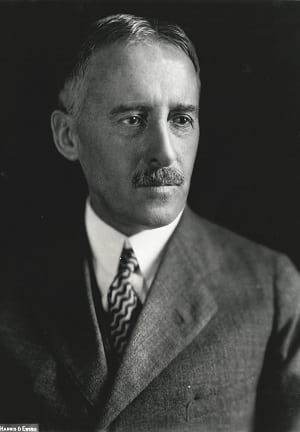
Henry Lewis Stimson. (Harris & Ewing / LOC)
In addition, an announcement by the U.S. Secretary of War, Henry Lewis Stimson, made matters even worse. Germans had attacked the island of Aruba on February 16, 1942, causing damage to the oil refineries and disrupting the fuel supply to the Allied forces. A few days later, on February 19, Stimson announced that the public should be prepared for “occasional blows” since the Army could not be dispersed everywhere.
One of the submarines, the 1-17 surfaced at Goleta, near Santa Barbara in California February 23rd 1942, and fired 13 rounds into the Ellwood Oil Field. Fortunately, it was unable to inflict severe damage. Even though the attack did not cause any casualties, it marked the first bombing of mainland United States. The defence mechanism of the country was having an overload of attack jitters.
Los Angeles air raid
On February 24, 1942, the US Naval intelligence issued the warning of a probable attack within the next 10 hours. That same evening, following reports of flares and blinking lights in the sky, an alert was sounded at 7.18 pm via air raid sirens.
However, the alert was lifted at 10.23 pm when nothing untowardly could be detected during that time period. The defence forces, on the other hand, continued a vigilant lookout for enemy attacks. A few hours later, in the early morning hours of February 25 at around 2.15 am, the radars picked up an object flying 190 km off the coast of Los Angeles.
A realisation dawned on the American soldiers that a war was imminent. Troops were put on “Green Alert“, in a ready to fire position and the searchlights lit up the sky. By 2.21 am it was confirmed that the object was closing in on the city and a city blackout was initiated to prevent identification of targets by the enemy.
Reports of enemy planes over the city started pouring in, though the object approaching seemed to have dropped off the radars and vanished. A 78th Coast Artillery Regiment located in Long Beach reported of enemy planes over the Douglas Aircraft plant. A coast artillery colonel saw 25 planes flying at 12,000 feet towards Los Angeles.
Just a little after 3 am, antiaircraft guns started firing at an object seen above Santa Monica and the Battle of Los Angeles began, continuing over the next 1 hour. Whatever it was that was spotted in the sky, it showed no signs of attacking and neither was it destroyed. The gunners fired 1,440 three-inch shells of antiaircraft guns into the sky without any sign of enemy aircraft fragments or any other enemy damage. By 4 am, it was obvious that there was no enemy threat but the alert was only lifted by 7.21 am.
During the firing, as the shells lit up the sky above the city with explosions, the raining shrapnel caused damage to homes and other building structures. The residents of the city watched the unfolding drama standing on rooftops and hills along the 40-mile arc of the coastline. There were few civilian casualties reported due to the shrapnel and unexploded ammunition that fell. A couple of people were reported to have died of a heart attack due to the tension of an invasion. After the “all clear” was issued; various theories, speculations and explanations followed.
Investigations & aftermath
The official reports that came in from the various regiments stationed along the coast confirmed that enemy planes were definitely flying over the city between 3 am and 4 am. The commanding general of the Southern California Sector in Fort MacArthur stated in his report that a detachment in Santa Fe had sighted 14 planes flying south at 2.35 am. He went on to confirm this by corroborating information received at 3.28 am from Artesia that 14 or 15 planes had been spotted flying west. His report concluded that the presence of unknown planes over Los Angeles from 2.30 am to 4.30 am had been established.
After receiving all the reports and compiling the information, the Army authorities decided on an official count of 15 enemy planes over Los Angeles. California congressman William Johnson made an official statement of 15 planes sighted “flying at slow speed from 9,000 to 18,000 feet“. Later that day the Secretary of War, Henry Lewis Stimson also issued a statement confirming 15 planes, though he made sure that his statement was ambiguous enough to get out of. He mentioned that the planes might have been enemy operated commercial flights flown in numbers to terrorise the Americans or to detect strategic antiaircraft units.
Soon afterwards, the Naval Secretary William Franklin “Frank” Knox announced at a press conference that the air raid had been a false alarm and probably the result of “jittery nerves“. The Air Force and the Navy confirmed that there was no conclusive proof of enemy planes flying over the city on February 25, 1949. The fact that no aircraft carrier could be located in the vicinity dismissed the possibility of an aerial attack. After World War II ended, the Japanese confirmed that they had not partaken any such activity on that fateful day.
Eventually, news started trickling in that the panicking soldiers could have been firing at a floating meteorological balloon. Balloons of 4 feet in diameter were often released by the regiments stationed around Los Angeles.

Weather balloon being prepared for launch. (NOAA Photo Library)
This was to stay updated with the wind directions to make necessary changes in firing of the antiaircraft guns, accordingly. Two regiments had released meteorological balloons in that time frame, that had been carried along the coast with the wind. The balloons were tied to a glass ball with a candle inside to enable tracking at night. However absurd or hilarious the accounts of that day maybe, they do not take away from the dreadful threat of an enemy attack.
Enjoyed this article? Also, check out “Area 51: Is America Really Building UFO’s?“.
Fact Analysis:
STSTW Media strives to deliver accurate information through careful research. However, things can go wrong. If you find the above article inaccurate or biased, please let us know at [email protected].
RELATED
The post Battle of Los Angeles: When the City Fought a Bizarre Battle with Nobody appeared first on .
]]>The post Great Stink of 1858: When London Crumbled Under an Obsolete Sewage System appeared first on .
]]>
Print of horrified woman after discovering microbes in her tea made from river Thames. (William Heath / Wellcome Collection)
London came to a complete halt in the summer of 1858 due to the infamous Great Stink. As surprising as it may sound, the city of London once suffered from the problem of an inefficient sewer system.
London boasted of brick sewers that had existed since the dawn of the 17th century. The 18th century saw the evolution of the sewage system in London when over 100 sewers were constructed.
The city had approximately 2,00,000 underground sealed tanks for a temporary collection of sewage and 360 sewers. It wasn’t until the early 19th century that the city’s water supply underwent repairs. By 1858, the age-old in-use wooden water pipes started getting replaced with iron pipes.
By this time, urbanisation had set in with the rich adapting to a flush toilet. The population of the city was on a rise, increasing to 3 million from a little below 1 million. The result was the increase of flushed water and effluent into the sewers.
With the increase of industrialisation, the sewage system of the city was under strain, trying to grapple with the heavy influx of waste from all areas. The antique sewage system of the city was designed to be emptied into the river Thames which led to its over contamination. This unhygienic river was also a source of drinking water.
As London grew in strength, so did the amount of human, animal and industrial waste. All the sewage was drained or overflowed into the river Thames. In the 17th century, it was realised that the primary water source of the city was getting polluted. Due to the lack of an understanding to mend the state of affairs, the river continued to stew in waste.
The cholera outbreak
Meanwhile, in the 19th century, there was a pandemic of deadly Cholera in Europe. Cholera, an infectious disease was on the rise and in 1831; London had its first fatal Cholera epidemic with 6,536 victims.
The second outbreak in 1848-49 claimed 14,137 victims. During this outbreak, London physician, John Snow, studied those areas, where drinking water was supplied from the Thames. Based on his extensive study and concentrated reports on his research on cholera, Snow published a book, ‘On the Mode of Communication of Cholera‘ in 1849 in London. The book hypothesized the theory that cholera was a water-borne disease, contrary to the belief that it resulted from the foul air emitted from the Thames.

Dr. John Snow, British physician (Rsabbatini / Wikimedia Commons)
August 31st, 1854, saw a severe outbreak of cholera in the Soho District of the City of Westminster in London concurrent with the eruption of the disease everywhere. The next 3 days saw the death of 127 people in the Broad Street area of Soho District. 500 people were dead by September 10.
John Snow narrowed down on a public water pump on Broad Street and could convince the authorities of the St. James parish to disable the well pump for use by the public. The handle of the pump was removed to prevent the usage and the mortality rate came down soon after.
Much later, it was discovered that the water of the well had been contaminated by a leaking sewer nearby. Snow published the second edition to his previous publication in 1885, with detailed study and proof of the effect of contaminated water. Snow’s research that impure water contributed to the rapid spread of cholera helped to understand epidemics and their prevention. Today, he is considered “Father of modern epidemiology”.
Surmounting the after effects
Pathologist John Simon was the appointed Medical Officer of Health for London in 1848. Fearing the spread of cholera through foul sewage air, Simon had instructed for the sewers to be flushed on a regular basis. Unaware of the actual problem, this only led to further contamination of the Thames.

Pathologist John Simon. (G. Jerrard / Wikimedia Commons)
Meanwhile, in August 1849, civil engineer Joseph William Bazalgette was appointed as the assistant surveyor in the Metropolitan Commission of Sewers. Along with the Chief Engineer Frank Foster, Bazalgette started to design an effective plan for the city’s sewage system.
Following Foster’s death in 1852, Bazalgette was promoted to his position. He continued to modify his plans based on rejections and suggestions of Sir Benjamin Hall, the First Commissioner of Works and Public Buildings.
In July 1855, the deplorable condition of the Thames compelled eminent scientist Michael Faraday to write to the British daily, The Times, stating, “Near the bridges, the feculence rolled up in clouds so dense that they were visible at the surface..” and that the nauseating smell from the river was the same that emanated from the sewers in the city. According to Faraday, the Thames had turned into a big sewer.
In December 1856, Hall discussed Bazalgette’s plans with a group of consultant engineers who proposed changes that increased the cost of implementation by more than £3 million. In 1857, the stench from the river was so appalling that the government arranged for chalk lime, chloride of lime and carbolic acid to be poured into the waterways to mitigate the disgusting odour.
The Great Stink of 1858
February 1858 saw a change of government and the coming months only led to further deterioration of the Thames. Charles Dickens, in his novel ‘Little Dorrit’ which was published in serial form between 1855 and 1857, described that the Thames as, “a deadly sewer … in the place of a fine, fresh river“.

Chief engineer Joseph Bazalgette. (Lock & Whitfield / National Portrait Gallery)
By June 1858, London summer reported a rise in temperature to 48°C. The dry hot weather resulted in receding water levels of the Thames, leaving the sewage on the banks to rot in the heat. The media started calling this “The Great Stink“. The magazine, The Illustrated London News talked about how Great Britain could build colonies, conquering nations etc but was incapable of cleaning the river Thames.
The stench from the river disrupted the functioning of the Parliament. The curtains were being treated with lime chloride to overpower the smell from the Thames. In peak summer, nearly 200 to 250 tonnes of lime were poured into sewers to get rid of the smell, but to no avail.
On June 15, a bill was proposed in the Parliament to clean the Thames. The terms of the bill drawn turned out to be in favour of Bazalgette’s original plans, overruling Hall’s objections. The bill, debated in late July, became a law on August 2. Bazalgette’s plan to construct a network of underground main sewers 82 miles long and a network of street sewers 1100 miles long; was finally underway.
The man, the saviour, Joseph William Bazalgette
Bazalgette constructed a modern sewer system that to date operates in the city of London with a growing population of over 8 million. He ensured that effluent was not dumped into the Thames, bringing an end to the outbreak of cholera.
English novelist Peter Ackroyd in his books on London and The Great Sink talks about Bazalgette’s contribution to a beautiful, glorious modern day London. He goes on to say that Bazalgette should be considered a hero in a league of his own for his efforts, particularly for constructing the Victoria and Albert Embankment on the north and south of the Thames, respectively.
When Joseph William Bazalgette passed away in March 1891, his obituary in The Illustrated London News said that Bazalgette’s “two great titles to fame are that he beautified London and drained it“.
Civil Engineer Sir John Coode, president of Institution of Civil Engineers at that time, said that Bazalgette’s work “will ever remain as monuments to his skill and professional ability“. The Sir Joseph Bazalgette Memorial, a monument in his memory, was opened on the Victoria Embankment in 1901.

Memorial of Joseph Bazalgette at Thames embankment. (Prioryman / Wikimedia Commons)
Recommended Read:
The Great Stink of London | By Stephen Halliday
Recommended Visit:
River Thames | England
Fact Analysis:
STSTW Media strives to deliver accurate information through careful research. However, things can go wrong. If you find the above article inaccurate or biased, please let us know at [email protected].
RELATED
The post Great Stink of 1858: When London Crumbled Under an Obsolete Sewage System appeared first on .
]]>The post The US Navy Helicopter 66: The Most Iconic Helicopter in History appeared first on .
]]>
Helicopter 66. (NASA / S-69-21723)
The US Navy Sikorsky SH-3D Sea King with the Bureau Number 152711 is a legend by itself. The helicopter was inducted into the US Navy on March 4, 1967, and given to the Helicopter Anti-Submarine Squadron 4 (HS-4) of the Navy in 1968, with the original tail number NT-66/2711.
The Commanding Officer of HS-4, Donald S. Jones, had been handed over the task of developing an astronaut recovery programme by NASA for Project Apollo. The big anti-submarine warfare Helicopter 66, with a twin-engine was spacious and powerful. It seemed to be the perfect safe choice to fly at night and in all weather with versatility.
Helicopter 66 was incorporated with a watertight hull that gave it the advantage of also being able to take off and land on water. It also gave the aircraft the ability to hover over water or float for a long period of time with airbags that were fitted into the sponsons.
Sponsons are short subsidiary wings that help in stabilising a seaplane or in this case, a rotorcraft. The helicopter also had wheels fitted in the sponsons for customary land operations. The twin engines facilitated the heavy, large body of the helicopter and ensured uninterrupted flight in case of a single engine failure.
The Helicopter 66 or Helo 66 as it was commonly called had the ability to accommodate 22 individuals in a search and rescue with 9 stretchers plus ample room for 2 medics. This made it the ideal bird for an astronaut recovery.
The Apollo recoveries
HS-4 by now had become the designated astronaut recovery squadron. Apollo 8 was the first manned flight to orbit the moon and return. When the spacecraft hit the North Pacific Ocean, Helo 66 piloted by Donald S. Jones embarked on the recovery mission. Helo 66 remained involved as the recovery helicopter for the next 4 Apollo missions.
With the Navy adopting a 3 digit number for squadrons, Helo became 740 from 66 very briefly. The number 66 was painted again on Helo due to the popularity it was gaining in the public as Helicopter 66. With all the television footage of the astronauts getting down from the helicopter and several such photographs in the print media, the rotorcraft was nothing short of a celebrity. American space historian Dwayne Allen Day said of Helo 66, that it had attained the status of “one of the most famous, or at least most iconic, helicopters in history“.
Donald S. Jones again piloted Helicopter 66 for the recovery of the astronauts of Apollo 11, who became the first men to land on the moon. To commemorate this success, “Hail, Columbia” was inscribed on the underside of the helicopter. Helo spent all its active years with the HS-4 as the primary astronaut recovery chopper for Apollo 8, 10, 11, 12 and 13 and proudly carried all the five spacecraft symbols on either side of the nose.

Apollo 8 astronauts leaving the aircraft after successful rescue. (NASA)
The modifications for SAR missions
Helo 66 underwent slight modifications to adjust to its new role, Search and Rescue (SAR) of astronauts. The SONAR equipment had to be removed in order to free up space in the cabin for the astronauts and the NASA surgeon. It also provided necessary free space required for any additional medical equipment that was needed for assessing and monitoring the vitals of the astronauts.
During the SAR of Apollo 10, the chopper was loaded with a sling made of half inch thick nylon line attached to the helicopter’s weapons shackle for an upright manoeuvre. This involved overturning of a spacecraft that landed at sea in an upside down position.
Just below the cabin door, a special greeting was inscribed on the belly of Helo 66, welcoming home the astronauts. As the Command Module call sign was Charlie Brown and that of the Lunar Module, Snoopy; the greeting was a big pair of Snoopy eyes with the words, “Hello Dere Charlie Brown” visible to the Apollo 10 astronauts as they looked up after a splashdown.

Helicopter 66 above Apollo 11 capsule. (NASA / S-69-21723)
There was a 35mm still camera and two 70mm motion picture cameras on a mount behind the starboard side. Another camera was pointed down so as to be able to click images of the recovery operation underway.
In 1970, during the SAR of Apollo 13, the cameras on the recovery chopper were capable of a live feed and a live television relay was conducted during the operation.
The last years of Helo 66
By 1973, HS-4 was deployed on USS Kitty Hawk as part of the Carrier Air Wing 11 to help develop the aircraft carrier concept which incorporated the Anti-Submarine Air Group and the Attack Carrier Air Wing into a newly formed Carrier Air Wing. That year, Helicopter 66 was responsible for transporting the Shah of Iran, Mohammad Reza Pahlavi to USS Kitty Hawk for a visit.
On June 4, 1975, Helicopter 66 left the Naval Air Landing Field at Imperial Beach near San Diego, California, at 1900 hours for a scheduled anti-submarine sonar training exercise at the offshore training area, with Lieutenant Leo S. Rolek piloting, co-pilot Lieutenant (Junior Grade) Charles D. Neville, and 2 sonar operators. Reporting their progress every half-hour, the crew continued practising their sonar hover approaches until 21:33.
The helicopter’s hover became unstable with the sonar dome below the water’s surface which started pulling the helicopter into the water. The crew managed to escape as Helo 66 sank underwater. They were rescued by Coast Guard and taken to the San Diego Naval Hospital from where they were discharged in a few days except the pilot who had a ruptured spleen and three weeks later, succumbed to his injuries.
Helicopter 66 had completed 3,245.2 service hours and flown 183.6 hours since it was last serviced.
Tribute to Helicopter 66
The artist Tom O’Hara was commissioned in 1969 to make a painting of Helicopter 66 that was a part of the NASA art initiative. The painting is on display at the National Air and Space Museum of the Smithsonian Institution in Washington, D.C.
The same year, German singer Manuela released a love song referred to as “Helicopter US Navy 66” which starts with the sounds of the helicopter’s engine and blades whirring. In the song, Manuela sings of being rescued from the sea by a man who comes in Helicopter 66. The song went on to become a huge success and was often heard in dance clubs in the 1970s.
In the early 1970s, Dinky Toys paid their tribute to Helicopter 66 by releasing an exact die-cast toy version of the helicopter, complete with a hoisting sling to lift a plastic command module.
Today the legacy of Helicopter 66 can be seen in the replicas of the legend painted in Helicopter 66 colours on display at the USS Hornet Museum, USS Midway Museum and the National Museum of Naval Aviation.

Replica of Helicopter 66 at Evergreen Aviation and Space Museum in McMinnville, Oregon. (Clemens Vasters / Flickr)
Enjoyed this article? Also, check out “Why Were the Apollo 11 Astronauts Quarantined after Returning from the Moon?“.
Recommended Visit:
Evergreen Aviation and Space Museum in McMinnville | McMinnville, Oregon, USA
Fact Analysis:
STSTW Media strives to deliver accurate information through careful research. However, things can go wrong. If you find the above article inaccurate or biased, please let us know at [email protected].
RELATED
The post The US Navy Helicopter 66: The Most Iconic Helicopter in History appeared first on .
]]>The post Stone Man Syndrome: Rare Disease, Fibrodysplasia Ossificans Progressiva that Immobilises Your Body appeared first on .
]]>
Fibrodysplasia ossificans progressiva. (Joh-co / Wikimedia Commons)
Most cases of Fibrodysplasia Ossificans Progressiva (FOP) are caused by a mutation in the Activin Receptor Type I, ACVR1 gene. It is a genetic condition and can be passed even if one parent has a dormant abnormal gene. The ACVR1 gene is responsible for controlling the growth and development of bones and muscles in the human body.
In this acutely disabling disorder, skeletal muscle, tendon, ligament, and other connective tissue starts getting replaced by bony tissue or a bone due to ossification. This leads to a gradual formation of bones outside the skeleton, like a cage, eventually restricting movement. It can be detected during early childhood on the neck and shoulder before moving down into the limbs.
There are also several cases with new mutations in the gene, without any history of the genetic disorder in their family. In cases of FOP, surgical removal of the extra bone growth or a fall or injury is dangerous because the body’s repair mechanism repairs the affected area with the formation of a bone. Even a viral illness may set off an episode of swelling resulting in permanent bone growth.
Though FOP is not fatal, the development of new bones all over the body can lead to various scenarios responsible for the death of the patient. Bones around the rib cage make breathing impossible causing death due to suffocation, whereas stiffening of the jaws can freeze the mouth shut leading to death due to starvation.
Early cases of FOP
In 1736, an English surgeon, John Freke, who practised surgery at St Bartholomew’s Hospital from 1729 to 1755 had taken over as the Governor of the hospital. He was presented with the queer case of a young boy with strange swellings all over his body. Little did Freke know that he was witnessing a rare condition now known as Fibrodysplasia Ossificans Progressiva (FOP).
John Freke was a renowned English surgeon who apprenticed with eminent London surgeon, Richard Blundell, at the age of 17 years. In 1726, he was appointed as an assistant surgeon at St. Bartholomew’s Hospital, known as Barts. A year later he was supervising the anatomical and surgical preparations.
He became the world’s first ophthalmic surgeon in 1727 when the Governors of Barts felt the need for surgeons to specialise in various medical fields. Freke was an elected Fellow of the Royal Society, which is the oldest national scientific institution in the world in 1729 and the Governor of Barts from 1736 to 1756.
On April 14, 1736, John Freke wrote to the Royal Society in the hope of getting some clue about the abnormality of his patient. According to Freke, the boy, who seemed to be around 14 years of age, had come to Barts for diagnosis and cure for several large swellings on his back that had been growing for the past 3 years. Freke described the condition in detail, observing that the swellings seemed to originate from the neck vertebrae going down all the way to the sacrum above the tailbone.

Portrait of Gui Patin. (US NLM)
He also illustrated the fact that such swellings were prevalent around his ribs, in a way as to be joining the ribs to the vertebrae in the back. It was as if, the young boy was enclosed in some sort of a bodice of these hard swellings. His letter ended with the diagnosis that the boy “had no other Symptom of Rickets on any Joint of his Limbs.” Though this was the first time that the condition was described in great detail by John Freke, it is speculated that French physician, Gui Patin may have come across this disorder earlier, in the 17th century.
Gui Patin was a French doctor and an intellectual scholar well known for his extensive letters that have been classified as important documents by historians of medicine. He wrote to a colleague in one such letter that he “saw a woman today who finally became hard as wood all over”. This was probably the first documented FOP case.
Detection of the abnormality
Diagnosis of this rare genetic disorder has not been easy for doctors. Considering the uncommon nature of the occurrence of the disease, it was often misdiagnosed as cancer. Unfortunately, the procedure often aggravated the swollen area leading to the formation of a bone.
One way of early detection of FOP can be the presence of deformed toes or thumbs and on further investigation, checking the concentration of bone-specific alkaline phosphate in the bloodstream. The early signs are swellings around the neck and shoulders which in time result in immobilisation of the areas due to the growth of a bone.
There have been 800 cases of FOP confirmed from all over the world till 2017, making it an extremely rare disease with 1 person in 2 million, affected by it.
The Stone Man Syndrome, Harry Raymond Eastlack
Harry Raymond Eastlack, Jr. who was born in 1933, he fractured his leg while playing with his sister when he was 5 years old. Shortly afterwards his hip and knee joints froze and he developed bone growths on his thigh. In the coming years, it spread to other parts of his body and by the time he was in his mid-20s, growth around his vertebrae rendered him immobilised.
As time went by the ossification accelerated and he was only able to move his lips when he died in 1973, just six days before his 40th birthday. Harry gave FOP the name ‘Stone Man Syndrome’ and donated his body to the Mütter collection for medical research on his condition. Today his skeleton is on display at the Mütter Museum in Philadelphia.
Not many scientists wanted to go into the medical study of such a rare disorder and it wasn’t until 1989, that a lab was set-up for dedicated research on FOP. Inspired by a young patient’s suffering from FOP, Dr Frederick Kaplan, the Chief of the Division of Molecular Orthopaedic Medicine at the University of Pennsylvania School of Medicine, established the lab at the University of Pennsylvania along with a co-worker, Dr. Eileen Shore. The FOP gene was finally discovered in April 2006 after 15 years of dedicated study and extensive investigation.
The International Fibrodysplasia Ossificans Progressiva Association (IFOPA)

Jeannie L Peeper. (Jeannie L Peeper / Wikimedia Commons)
On June 8, 1988, the International FOP Association was founded by Jeanie Peeper, who served as the President until retirement in 2013. An FOP patient herself, Jeanie felt the need for a community connecting all those affected by this crippling disorder.
The creation of IFOPA ended the isolated life of a patient by connecting all those suffering on one common platform. The association not only extended emotional support to the patients, their families but also started raising funds to be put into research for a better understanding of FOP.
Several clinical trials are underway for testing the drug for treating FOP. The Clementia Pharmaceutical Trials started in July 2014 have successfully completed Phase 1 and 2. Hope and respite for FOP patients does not seem far away.
Enjoyed this article? Also, check out “No Immunity from Loneliness – The Soul-Stirring Story of David Vetter “The Bubble Boy”“.
Official Website:
International FOP Association
Fact Analysis:
STSTW Media strives to deliver accurate information through careful research. However, things can go wrong. If you find the above article inaccurate or biased, please let us know at [email protected].
RELATED
The post Stone Man Syndrome: Rare Disease, Fibrodysplasia Ossificans Progressiva that Immobilises Your Body appeared first on .
]]>The post Cassadaga in Florida: Home to the Largest Psychic Community in the World appeared first on .
]]>
Cassadaga Spiritualist Camp signboard. (Ebyabe / Wikimedia Commons)
In Florida, United States, there is a small town by the name of Cassadaga which is known as the ‘Psychic Capital of the World’. The people of this town claim to specialise in communicating with the dead.
The religious movement of spiritualism has its roots in the belief that souls never cease to exist. Spritualism preaches that the spirits of those who have died, exist and with the right medium, can communicate with the living.
The medium, in this case, is a living being who can contact spirits and receive communication from them. ‘Mediums’ bring messages from the dead to their loved ones or sometimes predict somebody’s future with the help of spirits. Spiritualists or Mediums believe that spirits are ever evolving; hence, able to morally and ethically guide human beings according to God’s will.
The psychics of Cassadaga, Florida
Cassadaga is a town built with people who command respect for their sacred values. It boasts of having the highest number of psychics, mediums, and clairvoyants. They believe that Cassadaga is in the centre of some kind of spiritual energy where the Divine and the Earth come together to create an ethereal whirlpool powerful enough to heal the broken spirits and hearts of human beings.
Apparently, Cassadaga gets millions of visitors every year. People come to this queer town sometimes, out of sheer curiosity and sometimes, to meditate and find meaning in their lives. The mysterious aura of the place ensures an out-of-the-world experience teamed with psychic readings, spiritual direction and communicating with spirits. The history of the town is as surreal as the town itself. It started with the birth of George P. Colby in 1848 and his interaction later in life with a Seneca Indian spirit.
The life of psychic George P. Colby
George P. Colby was born in Pike, New York in 1848, to Elmira Abigail (Lewis) Colby and James Lysander Colby. The Colbys, Baptists by religion, moved to Minnesota 8 years after George’s birth to live on a 160 acre farm in Forestville Township. George had two brothers and two sisters but he lost both his sisters at a young age.

George P. Colby (Wikimedia Commons)
George was baptised in 1860 and supposedly, the baptism seemed to have triggered his psychic abilities. A little while after that George alleged that the spirit of his dead uncle had come to him. The spirit told him of his psychic prowess and predicted that he would go on to start a spiritual community in the Southern United States. George started doing spiritual readings and healing people as a clairvoyant.
By 1867, he started travelling to other parts of the country as a Medium and gained popularity. He was acclaimed for his ability to communicate with deceased relatives of clients and was often referred to as the ‘seer of spiritualism’.
During his travels in Iowa in 1875, George was visited in a séance in Lake Mills by a “Seneca Indian spirit guide” and asked to get in touch with another psychic, T.D. Giddings in Eau Claire, Wisconsin. The instructions were to hold a séance together, in which the spirit guide would then lead them to their destiny.
In the séances that George and Giddings held, they were told that the spirit guides had decided on a spiritualist centre to be established east of Blue Springs in Florida. The exact location revealed to them was a spot near the pine tree covered hills of Volusia County overlooking several lakes.
George and Giddings found the exact spot and made plans of a farmhouse there. In 1880, George filed for a grant for the farmhouse and received 145 acres of the land in 1884. That area was later named Cassadaga which means ‘water beneath the rocks’ in Seneca Indian. Not only was this area near a lake but also had a miracle spring nearby which George claimed, cured his tuberculosis.
With the rise of Spiritualism in the United States, several spiritualists came together to form the National Spiritualist Association in 1893 setting up centre in Lily Dale near Lake Cassadaga in New York. George signed a deed for 55 acres of land for the formation of the Cassadaga Spiritualist Camp Meeting Association. As a tribute to the mediums and psychics of Lily Dale who helped George, he named the area Cassadaga after the lake near Lily Dale.
Cassadaga Spiritualist Camp Meeting Association
On December 18, 1894, the agreement was signed for the formation of the Southern Cassadaga Spiritualist Camp with the help of E.W. Bond and Marion Skidmore of the Lily Dale spiritual camp. While Bond helped with the materials required to build the camp, Skidmore came to be known as the ‘Mother of the Camp’.
George started travelling all over the country again, as a medium and spiritualist guru. He settled down in Cassadaga in 1933 due to deteriorating health and breathed his last on July 27, 1933, with the camp members tending to his needs.
Now, a non-profit organisation managed by a board of trustees, the camp is the largest spiritualist community in the southern United States. Classes on meditation and spiritualism are conducted here on a regular basis. Séances and psychic readings are also held here. Apart from the camp, the town also houses, mostly psychics and mediums.
In the early 1920s, magicians refused to believe in clairvoyance and tried to prove that they could also do what mediums claimed to be doing. The great magician Harry Houdini was one of them but, he turned to a medium after his mother’s death, to commune with her spirit but soon realised he often met frauds.
The Southern Cassadaga Spiritualist Camp Meeting Association is famous for being the oldest active religious community in the southern United States and, was also designated a Historic District on the National Register of Historic Places in 1991.
Though sceptics refuse to believe in spirits, the residents of Cassadaga live with the conviction that not only do spirits exist but can also talk to you and guide you through the right Medium or Psychic.
Enjoyed this article? Also, check out “Netflix’s Wild Wild Country: The Rough and Tumble of Rajneesh Movement“.
Fact Analysis:
STSTW Media strives to deliver accurate information through careful research. However, things can go wrong. If you find the above article inaccurate or biased, please let us know at [email protected].
RELATED
The post Cassadaga in Florida: Home to the Largest Psychic Community in the World appeared first on .
]]>The post Fairy Circles: The Systematic and Symmetrical Circular Arid Grass Formations appeared first on .
]]>
Fairy circles in Marienfluss valley, Namibia. (Thorsten Becker / Wikimedia Commons)
A strange phenomenon called fairy circles prevails the coastal desert of southern Africa also known as the Namib Desert. The desert is covered with innumerable circular patches of red coloured land, 2 to 15 metres in diameter, encircled with grass.
The entire region looks like a vast pockmarked land. This occurrence is a rare case only seen in the dry grassy area of the Namib desert, more commonly towards Namibia.
In 2014, similar circular formations were seen 15 kilometres outside the town of Newman in the native region of Pilbara in Western Australia. These rings of grassy vegetation are mainly found in dry parched areas that have a scarcity of water.
Scientists and researchers have debated over the cause of this phenomenon and various reasons have been suggested to satiate the curiosity of the mind.
Home of the fairy circles, the Namib desert
The Namib desert stretches for more than 2000 kilometres along the coast facing the Atlantic ocean in southern Africa. The word Namib in native Nama language literally means ‘vast place’.

Namib desert. (Santiago Medem / Flickr)
Having had desert-like conditions for approximately 55 to 80 million years, it may possibly be the oldest desert in the world.
The climate here is mostly hot and dry with an annual rainfall of less than 10 mm. Due to the prevalent conditions of the desert, vegetation is sparse. Occasional shrubs or grass are found from time to time, apart from certain plants that have adapted to the Namib weather.
In such an area, imagine coming across unending patches of circular grass. Not only was this phenomenon never seen elsewhere until 2014, but it has also intrigued botanists and researchers to the existence of the flora in such a systematic manner.
The occurrence of these circular patches spans a surface area of around 2400 kilometres. The fairy circles have been present for several years with the first mention in the technical literature of the 1920s. It wasn’t until the last 25 years of the 20th century when the fairy circles began getting observed for research work and study.
Millions in number, the fairy circles are found in the interiors of the desert, from southern Angola to the northern part of South Africa and strangely, no plant grow within these circles.

Aerial view of fairy circles in Namib desert. (Olga Ernst & Hp.Baumeler / Wikimedia Commons)
The fables associated with it
The fairy circles have very interesting stories related to their existence. The native tribal Himba people believe that these are the footprints of God or other divine beings.

Himba people, indigenous to Namibia. (Rempros / Wikimedia Commons)
They make maximum use of the fairy circles, by using the grassy areas for pasturage and also for keeping young cattle safe. Wooden fences are constructed around the circular growth of grass where young cattle can be enclosed for their protection.
Another legend told by the native guides is that of a dragon living inside the earth. The fire that the dragon exhales prevents the growth of any vegetation on the land, and its breath causes circular patches.
The study, theory, and explanation over the years
After having studied the fairy circles for a long, long time, various explanations surfaced. Some of these were debunked by other scientists, whereas some were accepted due to lack of other concrete evidence.
One of the theories that surfaced in 1971 was by South African ecologist Ken Tinley. Tinley proposed in a scientific literature that termites are responsible for these circular formations. Research suggested that the massive stretch of fairy circles could not be termites as they are unlikely to spread so far.
Gretel van Rooyen, a Botany professor at the University of Pretoria in South Africa debunked this theory in 2004. According to van Rooyen, her team studied the fairy circles by digging them up for signs of termites or their nests. In spite of digging up to 2 metres deep, no termites or any evidence of their presence could be found.

Fairy circle up-close. (Thorsten Becker / Wikimedia Commons)
The other two theories were radioactive soil and the remnants of a poisonous milk bush plant. Rooyen and her team found no truth to the other two theories as well. They sent samples of the soil to the South African Bureau of Standards, the results of which, were negative.
To test the milk bush plant theory, her team collected soil from under the plant and also from areas where the milk bush plant had died. These were tested by growing desert plants in them and were found to be fertile, leaving the barren patches of fairy circles unexplained.
Researchers created a mathematical model in 2008 that pinned the probability of the pattern to the availability of water.

Fairy circles. (Stephan Getzin / Wikimedia Commons)
South African scientist, Eugene Moll started his study of fairy circles in 1989 and in 2012 stated that a certain species of the termite family was responsible for this formation. This theory was seconded by University of Hamburg Biologist, Norbert Juergens in 2013.
However, Florida State University Biologist, Walter R. Tschinkel who is also extensively involved in the study of fairy circles, disagrees. As per Tschinkel, termites may live under the circular patches but could not be determined as the cause of these formations. The question about the soil in the centre of the circles inhibiting plant growth again went unanswered.
Towards the end of 2013, University of Cape Town Biologist Michael Cramer teamed up with a colleague Nichole Barger from the University of Colorado Boulder for further study. They examined the occurrence, size, and density of the fairy circles. Their research and study were conclusive of the water availability theory.
According to them, grassy patches in deserts are formed due to the underground competition for resources between the plants. The barren patches are the result of surviving vegetation. Water and nutrients in the soil are used by the grass on the periphery, hence preventing any growth in between the patch. Also, the fact that this kind of a pattern is only possible in an area of limited water resource like the Namib Desert, where rains are scanty.
The first international fairy circle symposium
With theories galore about the fairy circles but none being conclusive, the need to gather and discuss on a larger platform arose. The first International Fairy Circle Symposium was held on February 27 & 28, 2015 at Wolwedans on the NamibRand Nature Reserve in southern Namibia. Though questions are still unanswered, people haven’t given up, yet.
There were 35 internationally renowned scientists and enthusiasts who attended the symposium to share their ideas and form some conclusive explanation. Unfortunately, there was no consensus on any one definitive theory. The Fairy Circles of the Namib Desert is still a mystery.
Enjoyed this article? Also, check out “Dallol, Ethiopia: Alien World on Earth“.
Recommended Visit:
Namib Desert | Namibia
Fact Analysis:
STSTW Media strives to deliver accurate information through careful research. However, things can go wrong. If you find the above article inaccurate or biased, please let us know at [email protected].
RELATED
The post Fairy Circles: The Systematic and Symmetrical Circular Arid Grass Formations appeared first on .
]]>The post The Ghost Ship, the Flying Dutchman: A Parable or an Illusion, Fata Morgana? appeared first on .
]]>
Artistic work of Charles Temple depicting the Flying Dutchman. (Wikimedia Commons)
The Flying Dutchman refers to a ghost ship that sails the oceans and has been sighted by many sailors throughout history. Legend has it that the ship was cursed to never be able to reach land and sail endlessly in the oceans.
The vast oceans that surround us are deep, dark and mysterious; much like the superstitions and myths attached to marine travels. There are many unexplained phenomena while traversing the waters that have led to false notions and weird beliefs being fostered. The Flying Dutchman is one such story, so strongly believed in, that it is said to be an omen of disaster for those who sight it.
Another theory states that the captain and the crew of the ship were involved in devious and reprehensible activities onboard, for which they did not ever come out of the storm and were cursed to sail indefinitely.
Sailors have reported of these sightings for years claiming to see the creepy apparition of the ship which sometimes forces other ships astray or leading them to a collision. Others have spoken of tales of being contacted by Captain Hendrick Van der Decken upon nearing his ship, to send letters or messages to people on land who are long dead.
The man, the myth
According to folklore, the ghost ship belonged to Captain Hendrick van der Decken, which sank in 1641. The Dutch captain had embarked upon a dangerous voyage from Holland to East Asia for procurement of exotic spices and other profitable goods. After acquiring the merchandise to his heart’s desire, he set course to Amsterdam. As the ship approached Africa, the captain thought of docking near the Cape of Good Hope and establishes an outpost for his employers, the Dutch East India Company, to break journey during their oceanic travels.
The ship encountered a dreadful windstorm as it rounded the Cape which was infamous for oceanic storms and perilous rock formations. The strong winds lashed at the ship ominously with the threat of overturning it. The fear of drowning at sea compelled the sailors to implore with their captain to turn around.
Based on hearsay, the captain was an adamant man full of arrogance. That night, he was either drunk or in his idiocy paid no heed to the pleas of his crew and ordered them to stay on course. As the water got into the ship and with a disaster looming, the terrified crew rebelled. The undeterred Captain Van der Decken killed the man in charge of the uprising and threw his body into the turbulent waters.
It is said that as soon as the mutineer’s body hit the water, the ship asked the captain if he wished to end up at the bottom of the ocean as well. Some say that it was the voice of the Devil that spoke to the captain that night. Van der Decken however, answered that he would be damned if he ended up there and was willing to ride the tempest till the end of the world.
The result of which was the captain being cursed to sail the oceans till the end of time with a crew of dead men becoming the harbinger of doom to all those who sight the ship. The captain unflinchingly cried, “Amen to that!” Since then, the captain has been sighted sailing his phantom ship with a dead crew and given the moniker, the Flying Dutchman.
Coining of the term, Fata Morgana
Legendary King Arthur’s half-sister, was a sorceress, renowned for causing trouble by creating illusions on water, especially in the Strait of Messina between Reggio di Calabria in Italy and Messina in Sicily. She would confuse sailors and sea travellers by creating multifaceted mirages over water bodies and was popularly known as Morgan Le Fey in Italian, meaning Morgan, the Fairy. As a result, the name Fata Morgana was given to optical illusions over water and is sometimes also used to describe a mirage.
A Fata Morgana can throw up the inverted image of an object, or project an upright image hanging in the air from a distance. The Fata Morgana can be of a ship, water, islands or sometimes even the coastline. Sometimes, the image seems to be floating in the sky.

An example of Fata Morgana: A ship appears to be floating. (Timpaananen / Wikimedia Commons)
The science behind it
Fata Morgana is a scientific phenomenon which is the result of ‘Refraction of Light’. The laws of refraction state that when light passes through a matter of different densities, it refracts or bends as per the characteristics of that layer. Refraction of light causes optical illusions known as an ‘Inferior Mirage’ or a ‘Superior Mirage’. An inferior mirage is one where the illusion is created under the actual object.

Misleading illustration of mirage from the 19th century. (Frank R. Stockton / Round-about Rambles in Lands of Fact and Fancy)
It is what is known as a mirage in the desert, where there seems to be a body of water which is actually the reflection of the sky creating a false impression of a blue coloured water body. A highway mirage is another example of an inferior mirage, when light from the sky is refracted by the hot air above a road, giving the false notion of a puddle of water.
A superior mirage is what is referred to as a Fata Morgana, experienced in a condition of thermal inversion when there is a layer of warm air on top of cold air. It is common in cold air zones and is the deduced possibility of the Titanic disaster.
During calm weathers at sea, the different layers of air above the waters recreate the formation of an object far away, floating above the line of the horizon. It can cause the image of a ship to be floating inside the waves or hanging upside down above the real ship.
Another famous Fata Morgana was near Greenland, where a ghost island was first spotted in 1907. After several failed attempts to find this island, it led to the conclusion of a Fata Morgana of the Tobias island, just north of the Nioghalvfjerd Fjord in Greenland.
Enjoyed this article? Also, check out “HMS Terror: A British Warship That Was Lost for Over 170 Years“.
Fact Analysis:
STSTW Media strives to deliver accurate information through careful research. However, things can go wrong. If you find the above article inaccurate or biased, please let us know at [email protected].
RELATED
The post The Ghost Ship, the Flying Dutchman: A Parable or an Illusion, Fata Morgana? appeared first on .
]]>The post Human Greed for Power was Responsible for the Near Extinction of Bison during 19th Century appeared first on .
]]>
Pile of Bison skull, circa 1892. (Burton Historical Collection, Detroit Public Library)
The first species of the Bison was believed to be the Bison Priscus that existed more than a million years ago. It was found in the mammoth steppe which was a vast region spread across all continents.
The mammoth steppe was dominated by the bison, horse and woolly mammoth. North America boasted a population of 25 to 30 million bison in the 19th century, but sadly, there were less than a hundred by the end of the century. Apparently, the bison was hunted not only for meat but also for the revenue returns that the skin and bones generated, especially from the European market.
The Native American diet
Bison are social animals and are known to move about in herds and often, all gather around a dying one. This behaviour made their hunting easier than any other animal. The fact that the meat from one Bison could feed an entire tribe also made it the preferred source of food.
Bison hunting was primarily, an activity that the Native American tribes engaged in, mainly for food and economy. A herd of Bison would be held in a crude animal enclosure and then forced into a stampede over cliffs, known as Buffalo jumps. Hunting of this method required help and was often a communal activity. The herd would be driven into channels made out of rocks towards a cliff wherein the commotion; the buffalos would run off the cliffs. Tribesmen at the end of the cliff would then kill the ones not dead, with spears and arrows.
The tribes believed in killing an entire herd due to the notion that if one survived, buffalos would then adapt and learn to avoid humans. Such sites have a very important historical value as they help in understanding the life of Native American tribes or Native Indians, as they were more commonly called.
Buffalo jump sites are easily recognised by the pathways made of rocks leading to a cliff. They are an indication of a tribal camp nearby, which are then studied by archaeologists by collecting evidence from the abandoned camps.

American natives hunting for bison by camouflaging themselves with bison hide. (Remington, F., Detroit Publishing Co / LOC)
As mentioned earlier, the bison was an integral part of survival for Indian tribes, each and every part was utilised. The hide was not only used for selling but also for clothing and shelter. The bones were sold and also used for making tools.
Similarly, the sinews were turned into laces and bowstrings, the grinding of hooves formed a glue-like substance, the brains were instrumental in turning the skin into leather, and the preserved fat known as pemmican was an essential part of Native American food.
Kill a bison to get rid of an Indian
In 1830, the Indian Removal Act was passed, which led to the forced removal of Native Indians away from the European American populated areas. The US Army, under the influence of the government, is said to have been instrumental in the extensive slaughter of bison herds.
The main objective of such heinous acts was to deprive the Native Indians of their main source of food and income, thus weakening them into submission. The biggest supporter of this strategy was General William Tecumseh Sherman who, according to an article published on June 26, 1869, in the Army-Navy Journal had mentioned in a conversation, the idea to send soldiers out to the Indian settlements to shoot buffalos till there were none left.

General William Tecumseh Sherman. (Mathew Brady / National Archives)
In 1867, Col. R.I. Dodge, the officer commanding Fort McPherson in Nebraska and responsible for forcing the Indians into settlements is said to have told a British hunter, Sir W.F. Butler to, “Kill every buffalo you can. Every buffalo dead is an Indian gone.” In 1870, General Phil Sheridan went one step ahead when he tried to coax the state legislature in Texas to recognise American buffalo hunters with a medal of honour. He went on to even suggest the design of the medal in bronze with, “a dead buffalo on one side and a discouraged Indian on the other.”
It was quite evident that the over killing of bison was purely to subjugate the Native Indians, and the greed for power was another cause for the near extinction of this species.
Efforts to protect and revive the American bison
An American zoologist and the first director of the New York Zoological Park, William Temple Hornaday, had written “The Extermination of the American Bison” in 1887, predicting the extinction of the bison in 20 years.

American conservationist William Temple Hornaday with a bison calf. (Smithsonian Institution Archives / Image Number 74-12338)
In 1905, the 26th President of the United States, Theodore Roosevelt Jr. supported Hornaday in founding the American Bison Society, for the resurgence of the bison. By 2015, after 110 years of its inception, the society had managed to restore bison in the wild in large parts of Canada and America with an ongoing survey for restoring ecological conditions for the bison in North America.

1902: The last herd of buffaloes, Canada. (Steele and Company / British Library)
American rancher and South Dakota politician James “Scotty” Philip is often remembered as the “Man who saved the Buffalo” due to his efforts to prevent the extinction of bison. In 1901, Philip set up a pasture near the Missouri River, for his herd of 74 bison that he had acquired over time from people who had rescued bison calves. By the time Philip passed away, his herd had grown to nearly a thousand.
Newspapers wrote that as his funeral procession moved towards the family cemetery near the buffalo pasture, some of the bison came down the hills to watch it pass by, “showing their respects to the man who had saved them.”
Fact Analysis:
STSTW Media strives to deliver accurate information through careful research. However, things can go wrong. If you find the above article inaccurate or biased, please let us know at [email protected].
RELATED
The post Human Greed for Power was Responsible for the Near Extinction of Bison during 19th Century appeared first on .
]]>The post Insects from Hell: Mecoptera, the Fly with a Scorpion Tail appeared first on .
]]>
Common scorpionfly. (Gailhampshire / Flickr)
The Mecopterans, more commonly known as scorpionflies, are a very interesting species. Technically insects, they are called Scorpionflies because of the enlarged genitals of the male Panorpidae that resemble the stinger of scorpions. The distinct feature that sets them apart from other insects is due to the presence of a rostrum or a beak-like structure on their face.
Even though Scorpionflies have a tail that looks like a stinger, they do not sting or bite and, are quite harmless. The name Mecoptera is Greek for ‘long wings’. ‘Meco’ is Greek for ‘long’ while ‘ptera’ means ‘wings’. They were named by the eminent American Zoologist and Palaeontologist Alpheus Hall and, American entomologist Jennie Maria Arms in 1891. The name might include ‘fly’ but they do not belong to the family of flies.
The Mecopterans undergo a complete metamorphosis and are considered predecessors of other insects who go through a similar life cycle. The egg of the Mecoptera is said to expand as the embryo grows. This process can either take 5 to 10 days or, several months. The larva then grows in a damp area. It feeds on dead animals or sometimes on smaller insects. They approximately take 32 days to be fully grown, after which the larva digs a hole in the ground to pupate.
In the Pupa stage, it can move about in the shell or cocoon as the body is not attached to the shell. The fully developed adult leaves the shell after 10 to 15 days of completion of the metamorphosis. Though the adults are mainly carnivorous, they are also known to feed on petals, leaves, fruit, nectar, pollen, and in the case of the Snow Scorpionflies, even moss.
There are nearly 300 species of Mecoptera and nine families, though, some families are now extinct. They are commonly found in humid temperate and subtropical areas. The Scorpionflies do not exist in a large enough quantity to have any environmental impact and hence, are not classified under pests. There are three main families or types of Mecopterans.
The Panorpidae or the common scorpionflies
Being the largest family of Mecoptera, it is also the only family that has the scorpion-like stinger-tail in the males. The insects of this family are dirty-yellowish brown in colour with speckled wings. They feed on dead insects and male Panorpidae attract the females by vibrating their wings and offering a dead insect to the females to feed on.

A male scorpionfly. (Luc Viatour / www.lucnix.be)
The Boreidae, also known as snow scorpionflies
The only family of Mecoptera that is flightless and thrives in cold climates, so much so that they can die from the warmth of the human hand. They can be commonly found in snowy areas, cold mountains, and high altitude regions.
Dark brown or black in colour, they have long antennae but the wings are much smaller, sometimes reduced to bristles. Male Boreidae attract females by waving their antennae or bristles. They jump on the female and stay attached for up to 12 hours, to mate.

Female snow scorpionfly. (Gilles San Martin / Flickr)
Bittacidae or hanging flies
This particular species is so called as the insects are often found hanging from the undersides of leaves to catch prey. They are the only insects to use their clawed hind legs to catch their prey which are smaller insects. They have long wings and long legs. Male Bittacidae attract the females with pheromones and a prey to feast on. They are found on low bushes in moist areas.

Hangingfly. (Cody Hough / Wikimedia Commons)
The Importance of Mecoptera
It is said that before the evolution of bees and other insects that help in pollination, Mecoptera may have had an important role to play in pollinating plants. In the current era, however, Mecopteran adults feed on dead organisms. They are often, the first insects to arrive on a corpse which interestingly, leads to their importance in forensic entomology.
Forensic entomology entails the study of insects or anthropods in a post-mortem. It is a study of the age of the eggs or larvae deposited on the dead body and the time onwards of insect activity. Studying the insects or larvae and their developed stages help in determining the Post Mortem Index (PMI), the change in the decomposition of the body and sometimes also the cause of death.
Forensic entomology is a very important aspect of the criminal investigation and is said to be dated back to 13th century China, the mention of which is in Sung Tzu’s book, ‘The Washing Away of Wrongs‘. Incidentally, Sung Tzu is thought of as the ‘Founding Father of Forensic Science in China’.
Enjoyed this article? Also, check out “Madagascar Hissing Cockroach: An Unusual Wild Insect That Has Now Replaced Popular House Pets“.
Fact Analysis:
STSTW Media strives to deliver accurate information through careful research. However, things can go wrong. If you find the above article inaccurate or biased, please let us know at [email protected].
RELATED
The post Insects from Hell: Mecoptera, the Fly with a Scorpion Tail appeared first on .
]]>The post Mowgli was Real: Dina Sanichar, the Indian Boy Raised by Wolves appeared first on .
]]>
Dina Sanichar photo from a newspaper. (Coll. Serge Aroles / Wikimedia Commons)
Mark Twain once said, “Truth is stranger than fiction“! It is also the belief that fiction has its roots in reality and often one has influenced the other. Do the words “man-cub” sound familiar? These words were used to describe the famous character, Mowgli of Rudyard Kipling’s The Jungle Book written in 1894. It was all about a boy or “man-cub” who was raised by wolves in a forest in India.
Discovering the Dina Sanichar, the feral child
Rewind to 1867. Location: A forest in the Bulandshahr district of Uttar Pradesh in India. A group of hunters froze in their tracks, unable to comprehend the vision in front of their eyes. A pack of wolves running in the forest had amongst them an extraordinary being. A part of the pack was a 6-year-old-boy walking on all fours. The wolves had adopted and raised the boy.
There have been several incidents in the history of infants raised by animals in the wild. Such children are known as feral children. The term feral child technically is for a human child who has lived in the wild or cut off from civilization. Some are locked up by another human being with no human contact. And some grow up in the wild, probably raised by animals. These children not only lack basic social skills but also have trouble walking upright.
The hunters saw this unnatural family go into a den and decided to extract the feral child from there and take him back to civilization. They smoked the cave and had to kill the female wolf to capture the boy, whom they took to the Sikandra Mission Orphanage near Agra in India. He was baptized at the orphanage, run by Father Erhardt, a missionary living in India, and since it was a Saturday, he was thus named Dina Sanichar, Hindi for Saturday. It has been documented Father Erhardt observed, “He cannot talk, and though undoubtedly pagal (imbecile or idiotic), still shows sign of reason, and sometimes actual shrewdness”
What do we know about feral children?
Eminent child psychologist, Wayne Dennis noted in his paper, The Significance of Feral Man, in the 1941 American Journal of Psychology, several characteristics of a feral child/man derived from studies. According to Dennis, feral children (man) were untidy and uncivilized in their habits of eating. He also considered them incapable of forming bonds with humans and fairly oblivious to temperature changes. Though this was true for most feral children, Dina Sanichar established a close relationship with another feral child brought to the orphanage on March 5, 1872. Father Erhardt observed, “A strange bond of sympathy attached these two boys together, and the elder one first taught the younger to drink out of a cup.”
Sanichar was not the only wolf child to be rescued. There were cases of four other wolf children found in various parts of India around that time, and many more cases of feral children surfaced in the years to come. In fact, the discovery of feral children all over the world has been a significant topic of study and discussion.
When a feral child was found in Aveyron, France in 1800, a young physician, Jean-Marc Gaspard Itard named the boy Victor and observed him for five years, developing innovative ways to teach him speech. Victor became the subject around whom eminent scholars and psychologists debated and tried to decipher the differences between civilized man and wild animals.
Many people noticed that Victor’s behaviour was uncivilized and more in tandem with the behaviour of wild animals. It was, similarly, observed in many feral children that they displayed behavioural likeness with wild animals as opposed to people of a civilized society.
Sanichar, in the same way, growled and grunted like a wolf, walked on all fours, ate raw meat, sharpened his teeth by gnawing on bones like an animal and detested wearing clothes. People of the orphanage tried to work patiently with him to rid him of his wilderness, and with the passing of time, he became more open to eating cooked food and wearing clothes but showed no progress in speech. Though he wasn’t mute, he only made animal noises.
Studies have shown that feral children cannot incorporate the norm of the society, thus continue to live in a black hole between civilization and wilderness. They say the bridge between the two is language. It was later analyzed and concluded by researchers that apparently, there is a “critical period” for learning a language. If during that period, there’s no form of communication, it is almost impossible to grasp words or comprehend speech.

Dina Sanichar. (Photos of the Past / Flickr)
Avram Noam Chomsky, known as “the father of modern linguistics“, in his 1957 publication Syntactic Structures, wrote that it is a language which enables human experience. According to Chomsky, if people knowing no language are deserted on an island, they would generate a language of their own in a couple of generations.
In his book, Wolf Children and the Problem of Human Nature, philosopher Lucien Malson wrote that Sanichar had put together “cruder, less specifically human” forms of communication. Like many other feral children, he was prone to barking, growling, howling and attacking; probably picked up from the actions of the animals he lived with.
Death of Dina Sanichar
Dina Sanichar lived a short life, dying at the young age of 34. He lived in the orphanage his entire life, showing very little improvement. He could stand erect and walk, dress with a little difficulty, and could monitor his cup and plate. And he had also learned to eat from a plate but would always sniff his food before putting it in his mouth and steered clear of anything that was not meat. Sanichar eagerly took up one human habit, smoking, and turned into a chain smoker. It is speculated that he died of tuberculosis in 1895.
Do you think Rudyard Kipling’s Mowgli could have been inspired by Dina Sanichar?
Enjoyed this article? Also, check out “Victor of Aveyron – The Feral Boy from France“.
Recommended Read:
Wolf Children and the Problem of Human Nature | By Lucien Malson
Fact Analysis:
STSTW Media strives to deliver accurate information through careful research. However, things can go wrong. If you find the above article inaccurate or biased, please let us know at [email protected].
RELATED
The post Mowgli was Real: Dina Sanichar, the Indian Boy Raised by Wolves appeared first on .
]]>The post The Famous Pollepel Island of Hudson River: Home to a Castle of a Bygone Era appeared first on .
]]>
Bannerman Castle on Pollepel Island. (Alec Perkins / Flickr)
Situated in the Hudson River in New York, is the 6.5-acre Pollepel Island. Locals attribute the name of the island to a legend about a young girl, Polly Pell who had been stranded on it. Unoccupied for a long time, the island, reachable only by boat, was rumoured to be haunted according to the locals.
Standing majestically tall on this island is an ancient surplus military equipment warehouse of yore, Bannerman’s Castle giving the island its present name, Bannerman Island. With the Hudson all around it in a natural moat design, there was a time when Bannerman Island was the most unsafe place in New York.
Pollepel Island: History of Bannerman family
Frank Bannerman’s son, David, discovered the island accidentally on a canoe trip on the Hudson and Frank went on to purchase it from the owners, Thomas and Mary family on December 5, 1900. Frank (Francis) Bannerman VI was born in Dundee, Scotland on March 24, 1851, and belonged to one of the few proud families of MacDonald who had survived the Massacre of Glencoe of February 13, 1692. Apparently, a Francis of the Macdonald clan rescued the clan banner during the Battle of Bannockburn and was given the family name, Bannerman, by the King of Scots, Robert the Bruce.
Frank’s family moved to the United States when Frank was only 3 years of age and settled in Brooklyn with Frank’s father selling marine scraps at Navy auctions. In 1861, Frank’s father joined the Union Army during the Civil War which led to 10-year-old Frank dropping out of school to support his family, financially.
Frank started working in a lawyer’s office for two dollars a week and spent a lot of his free time at the Brooklyn Navy Yard collecting scraps that were discarded to be sold at Navy auctions. He was quite successful at this and when his father returned, they turned it into a business, further opening a store with a warehouse at 18 Little Street.
The family continued in this manner until 1872, when Frank started buying war weapons and remnants from Army auctions. He decided to catalogue these and offer at a good price to collectors and war relic aficionados. Frank was on a business trip to Ireland that year and also went to visit his grandmother in Ulster. He met Helen Boyce there and they were married on June 8, 1872, in Ballymena. Frank and Helen had four children. Two of the sons, Francis Vll and David Boyce eventually joined him in his business. Another son, Walter went on to become a doctor and a daughter, Helen Grace in 1884 who unfortunately died in 1885.
With business booming, Frank opened stores in New York with one at 501 Broadway, Manhattan, that became a well-known Bannerman store address. It is from this address that he fixed supplies for many regiments of the war that America declared on Spain towards the end of 1898. The end of the three-month-long war, which was fought in Cuba and Philippines, saw a massive amount of surplus military equipment that had been captured and surrendered by the Spanish. Bannerman proceeded to purchase over 90% of all of this from the US government and in his eccentricity, also wrote to the US Navy to purchase the surrendered warships. By this time, he had acquired too much ammunition and too many pieces of equipment to legally store them in a warehouse in the city.
Construction of Bannerman’s Castle
After the purchase of the Pollepel Island in 1900, he began construction on his dream Scottish Castle which would not only be a safe storehouse but also the Bannerman family’s summer house. For the next 17 years, Frank personally saw to the construction of his Scottish Castle and the elaborate design of the island with garden walls, a Scottish moat, and a breakwater to protect the shores of the island, amongst other things.
By now, Bannerman was regarded as the largest dealer of military supplies and equipment in the world. Countries at war were getting supplies for their armies through Bannerman’s. He was accredited as the founder of this stream of business and was considered an authority on military supplies. Bannerman’s illustrated catalog which had more than 400 pages was regarded as the best book, by the collectors.
When the European War broke out in 1914, Bannerman sold supplies to the French, and in his loyalty, donated supplies to the British Army. In 1915, the storage building was ready and one side of the castle displayed in massive lettering, “Bannerman Island Arsenal“ that could be viewed from afar. All Bannerman equipment and supplies were shipped to the island for storage until sold.

Massive lettering, “Bannerman Island Arsenal“ on the castle. (Peter / Flickr)
An ardent church follower, Frank also actively participated in boy’s club church by taking them on trips to the island in the summers and spending one evening every week with them to study the Sunday school lesson. He was a member of the St. Andrews Society – an independent organization for people born in Scotland and their descendants, and a founder of the Caledonian Hospital in Brooklyn.
As a true patriot, Frank donated artillery, clothing, and blankets to the U.S. government when the First World War broke out. It was during that time when an Austrian immigrant employee of his was accused of spying, putting Frank Bannerman right in the centre of suspicion and rumours of treachery. The Bannermans were placed under house arrest on the island. Though the air was soon cleared, it took a toll on Frank’s health. He could not get over the grief and passed away on November 26, 1918, following a gallbladder surgery. The responsibilities of the business fell upon his wife and sons who renamed it “Francis Bannerman Sons“.
Destruction of the castle
On August 15, 1920, 200 pounds of black powder stored in the munitions exploded, thrusting a huge chunk of a wall across the New York Central tracks which were a quarter of a mile away. Thankfully Helen and two other people escaped with minor injuries. By 1957, the Bannerman warehouses had been sold, following the death of Helen Bannerman and both the sons. In 1967, Frank’s grandson, Charles Bannerman sold the island to the State of New York which placed it under the supervision of the Taconic State Park Commission.

Pollepel island and the Bannerman’s Castle from a distant. (Ahodges7 / Wikimedia Commons)
Experts were hired for safe removal of the arms and ammunition, and many items were sent to the Smithsonian Institution in Washington, DC, for public display. On August 8, 1969, a devastating fire broke out destroying most of the structure of the castle. The source and cause of the fire have never been established.

Bannerman’s Castle up-close. (H.L.I.T. / Flickr)
The Bannerman Castle Trust, a charitable organization was set up in 1992, along with the Taconic State Park Commission, is now responsible for restoring the island to some of its original glory and magnificence. Guided tours to the island are also organized. The resilience of Francis Bannerman VI can be seen in the Bannerman Castle which is still standing tall, defying nature or anybody who dares to bring it down! As Charles Bannerman rightly said:
“the little island will always have its place in history and in legend and will be forever a jewel in its Hudson Highland setting.”
Enjoyed this article? Also, check out “Hashima Island: A Once Bustling Japanese Metropolis That Now Reminisces Its Hauntingly Tragic Past“.
Recommended Visit:
Pollepel Island | New York, USA
Recommended Read:
Bannerman Castle (Images of America) | by
Fact Analysis:
STSTW Media strives to deliver accurate information through careful research. However, things can go wrong. If you find the above article inaccurate or biased, please let us know at [email protected].
RELATED
The post The Famous Pollepel Island of Hudson River: Home to a Castle of a Bygone Era appeared first on .
]]>The post Maunsell Sea Forts: The Forts That Tell the Tale of WWII appeared first on .
]]>
Abandoned Maunsell forts near the coast of Suffolk. (Russss / Wikimedia Commons)
With an original plan to build 49 sea forts on the Thames Estuary and 38 on the Mersey Estuary, Great Britain set into action to ward off intense air attacks from the Luftwaffe during the World War II. All three armed forces of Nazi Germany had united during WWII to form a formidable aerial warfare branch known as the Luftwaffe.
The Maunsell Sea Forts named after Guy Maunsell, the civil engineer who designed them, were built in 1942. Each 300-tonne tower was constructed on land, transported to sea and then sunk into position. These humongous monstrosities emerging from the Thames like alien transformers are a constant reminder of the ugliness of the war.
The forts, although referred to collectively, were mainly broken up into two categories. One set that was operated by the Royal Navy consisted of the naval forts – Rough Sands, Sunk Head, Tongue Sands and Knock John, built between February and June 1942. Each fort consisting of seven floors had Bofors guns, radar and 120 men living below the waterline.

Naval fort in use by the Royal Navy during World War 2. (Royal Navy Official Photographer / Imperial War Museums)
The second set, specially designed in 1943 for use by the Army in anti-aircraft defence, had the concept of six towers around a central control tower connected by metal walkways and was scattered over two locations. The Queens AA Towers, Formby AA Towers, and Burbo AA Towers were positioned in the Liverpool Bay. The Nore Fort, Red Sands Fort, and Shivering Sands Fort stood in the Thames Estuary.
The Thames Estuary is one of the largest inlets of Great Britain. Apart from being a major shipping route, it is also an important commercial shipping channel. One of the objectives of the Maunsell naval forts was to watch out for German air raids and put them off. The main objective was to thwart the attempts of the Germans to lay mines by aircrafts in this shipping channel. The most successful encounter was between the Tongue Sands Fort and 15 German fast attack crafts known as E-Boats. The encounter took place on the night of 22-23 January 1945, when the German E-Boats were fired upon from Tongue Sands Fort’s 3.7″ guns and unable to identify the origin of the attack, the Germans fled. These Naval and Army marine fortresses helped take down 22 enemy aircrafts and several German “retaliatory missiles”, V1s and V2s saving numerous lives.

British army watching the sky from Anti-aircraft defence fort. (Tanner (Lt), War Office Official Photographer / Imperial War Museum)
However, after the WWII ended, these forts were no longer of tactical significance and were withdrawn from active service. The Nore Army Fort does not exist anymore as it was demolished by 1960 following severe damage during the 50s. Tongue Fort collapsed in 1996 after a heavy storm. By the end of the 1950s, all these forts had been demilitarized and many were wrecked due to repeated collisions with civilian ships; but the Shivering Sands, Red Sands, and Fort Roughs stand tall and eerily peer from the waters to this day. In the early 70s, the forts’ designs acted as inspiration for offshore oil and gas rigs, they can be addressed as the predecessors of modern offshore drilling rigs.
Transforming Maunsell sea forts into a radio station
A preposterous fact is that, though some of these towers were dismantled and some could not withstand the sands of time, a few abandoned forts were taken over as pirate radio stations! Screaming Lord Sutch, an English musician founded a pirate radio called Radio Sutch in 1964 in a fishing boat and relocated to the Shivering Sands Fort in May, the same year. Some of the other pirate radios were Radio 390 on Redsands, Radio Essex on Knock John and Tower Radio on Sunk Head. With the Marine Broadcasting Act that was passed at midnight on Monday 14 August 1967, offshore pilot radios were declared illegal.

Guntower converted to a pirate radio station by Radio Sutch. (Colin Dale / Radio Sutch)
The result of the act was the launch of Radio 1 and Radio 2 by BBC in 1967. The absurdity didn’t end there, a nearby Navy fort of a different design; Roughs Tower has been occupied by the Principality of Sealand, a self-declared micronation since 1967. In a series of ludicrous events, Stephen Turner, an artist embarked on a strange project of living in isolation in one of the towers still standing, the Shivering Sands Fort in 2005. It seems the Maunsell Sea Forts are not only these strange looking outcasts on the sea but also by sheer stroke of luck, attracted some strange activities! Turner lived there for 36 days which was the tenure of duty of a WWII soldier. He posted updates during his stay and later authored a book on his experiment at sea.

The occupied naval fort is now a micronation, known as Principality of Sealand. (Ryan Lackey / Flickr)
In 2003, an organization named Project Redsands was formed with the sole purpose of restoring the Redsands Fort. The organization ensures safe public visits to the fort, gives information about the detailed history it and how far the organization has reached in its efforts of preserving this WWII relic.
Maunsell’s clever strategy of ‘take to the sea’ thwarted some serious attacks during WWII from the Luftwaffe. The forts helped the British to defend and attack from the middle of the sea, making it confusing and daunting for the attackers to cause significant damage. The forts proved their credibility by giving the soldiers the right platform to retaliate.
Enjoyed this article? Also, check out “Prora: Hitler’s Colossal Resort by the Beach That Never Served Its Purpose“.
Recommended Read:
Principality of Sealand: Holding the Fort | By Michael Bates
Recommended Visit:
Maunsell Forts | United Kingdom
Fact Analysis:
STSTW Media strives to deliver accurate information through careful research. However, things can go wrong. If you find the above article inaccurate or biased, please let us know at [email protected].
RELATED
The post Maunsell Sea Forts: The Forts That Tell the Tale of WWII appeared first on .
]]>The post The Count of Morbid Love: Carl Tanzler and the Dead Maria Elena appeared first on .
]]>
Carl Tanzler outside his building. Circa 1940. (Dewolfe And Wood Collection In The Otto Hirzel Scrapbook / Wikimedia Commons)
Love stories inspire us and give us a reason to dream. Well, not all love stories. Some might end up giving you nightmares. One such bizarre love story is that of Carl Tanzler and the dead Maria Elena ‘Helen’ Milagro de Hoyos. Carl Tanzler, named Georg Karl Tänzler at birth was born on February 8, 1877, in Dresden, Germany.
Early life of Carl Tanzler
He kept moving between countries before finally settling in Australia around 1914. At that time he would boast of being a doctor and an engineer, claiming to have received 9 different professional degrees. Tanzler also alleged that when he was 10 years old, his dead ancestor Countess Anna Constantia von Cosel appeared to him in a dream and showed to him the face of a strikingly beautiful dark-haired woman who would be his true love.
He returned to Germany after the World War I ended in 1918, to be with his mother. He married in 1920 to Doris Anna Shafer and had two children with her, Ayesha Tanzler and Crystal Tanzler. Upon his mother’s insistence, he moved permanently to the United States from Rotterdam on February 6, 1926, to Havana, Cuba in order to provide for a better life for his family. He finally decided to settle down in Zephyrhills, Florida, where his sister was already living and later called for his family.
Tanzler meets the women of his dreams
In 1927 he secured a job at the U.S. Marine Hospital in Florida as a radiology technician and moved there with his family left behind in Zephyrhills. At that time he changed his name to Carl von Cosel after the late Countess Anna Constantia von Cosel. He often signed his hospital records as Count Carl Tanzler von Cosel or Dr. Carl von Cosel. While working at the U.S. Marine Hospital, on April 22, 1930, Carl Tanzler came face to face with the woman of his dreams. Maria Elena ‘Helen’ Milagro de Hoyos, a 20-year-old local Cuban American woman, was the same dark-haired woman Tanzler had visions of and who was to be his true love.

File photo of Carl Tanzler when he worked as a radiologist. (Florida Keys–Public Libraries / Flickr)
Elena, accompanied by her mother had come to the hospital for a medical examination and Tanzler’s heart skipped a beat upon seeing his dream woman alive, in front of him. Elena, the daughter of a local cigar maker Francisco ‘Pancho’ Hoyos, had been married to Luis Mesa since February 18, 1926. Even though Luis left Elena after she miscarried and moved to Miami, Elena was still legally married to him. A fact that did not seem to deter Carl Tanzler.

Elena Milagro Hoyos in 1926, the year she got married at the of 17. (Florida Keys–Public Libraries / Flickr)
Carl’s examination of Elena led to a diagnosis of tuberculosis, which at that time was a fatal disease with no sure cure. Carl Tanzler was not ready to see Elena succumb to her illness and with the permission of her family, started treating her on his own with the hope of miraculously curing her. With his self-professed knowledge of medical science, Tanzler started making concoctions and potions to cure Elena.
He poured all his money into medicines and possible treatments for Elena. At that time, he also became reckless and disrespectful towards hospital authorities. He would illegally transfer x-ray machines, electrical and medical equipment to the Hoyos’ house for Elena’s treatment. All this while, Tanzler showered Elena with exorbitant gifts, jewellery, perfumes, and clothing while proclaiming undying love to her but no evidence has ever been found that Elena reciprocated his feelings.
Death of Elena
In spite of Tanzler’s prodigious efforts, Elena gave in to complications from her disease and breathed her last on October 25, 1931. A distraught Tanzler was adamant about paying for her funeral and with the permission of her family, got an above ground expensive stone mausoleum constructed for Elena in the Key West Cemetery. The Hoyos were oblivious to the fact that Tanzler had the only key to the mausoleum and had an intercom fixed so he could talk to her from the outside. He visited the cemetery every night and also serenaded his dead Elena with her favourite Spanish song. On one such visit in April 1933, Tanzler carted Elena’s body from the mausoleum to his home in a toy wagon.

Stone mausoleum constructed for Elena after her death. (Florida Keys–Public Libraries / Flickr)
According to him, Elena’s ghost, who would come to him every night had asked him to take her away from the grave and marry her. A little after bringing Elena home, Tanzler called a friend and excitedly told him that his Elena had finally agreed to marry him. The friend knew of Elena’s passing away and thought Tanzler was joking. By this time, Elena’s body was fast decomposing and Tanzler got into the task of preserving her body.
He connected her bones with wire hangers to maintain her frame and replaced her eyes with glass eyes. He filled her abdominal cavity with rags and replaced her skin with silk covered with wax and plaster. He even covered her head with a wig made from her own hair that he had taken from her mother. He then dressed her up in a white dress and had a wedding ceremony for the two of them. He slept with Elena’s body every night and danced around the house with it. He sprayed the body regularly with disinfectants and perfumes to cover the foul decaying smell. He even went about buying expensive clothes and jewellery for Elena.

The plastered body of Elena. (Source: www.voltini.com)
Carl Tanzler gets exposed
By this time, people had started noticing his suspicious behaviour. His absence from Elena’s mausoleum, his constant shopping sprees of women’s clothing and other items got people talking. One day, a local boy peeking in from his window, saw him dancing with a giant doll and word spread that Tanzler had probably stolen Elena’s body from the cemetery and got it home.
Sometime in October 1940, rumours reached Elena’s sister, Florinda, who went to Tanzler’s house to confront him and to her horror discovered her sister’s corpse. She informed the authorities who arrested Tanzler and put him on trial for “wantonly and maliciously destroying a grave and removing a body without authorization.” The press coverage gained Tanzler a lot of support from women who found his actions wildly romantic.

Carl Tanzler being interrogated after his arrest. (Florida Keys–Public Libraries / Flickr)
With all the media attention to the case and people wanting to see the preserved corpse, Elena’s body was publically displayed at a local funeral home and people were charged for their visit. Subsequently, Elena was quietly reburied in an unmarked grave to protect her from further tampering. During his trial, Tanzler also said that he had been building a spaceship in which he could take Elena’s body to outer space where the radiation would jolt her back to life. After a preliminary hearing on October 9, 1940, Tanzler had to be released with the charges relating to the case dropped, as “the statute of limitations for the crime had expired“.

The airship Tanzler constructed to take Elena into space. (Florida Keys–Public Libraries / Flickr)

The body of Elena on display after being recovered. (Florida Keys–Public Libraries / Flickr)
His request to get Elena’s body back was denied and he returned to Zephyrhills in 1944 where he lived till he was found dead for 3 weeks in his home in July 1952. A full-size mannequin with Elena’s face constructed from a death mask was found in his home.
Enjoyed this article? Also, check out “In Tsarist Russia Members of the Secret Skoptsy Sect Believed in Self-Castration“.
Recommended Read:
Undying Love: The True Story of a Passion That Defied Death | By Ben Harrison
Fact Analysis:
STSTW Media strives to deliver accurate information through careful research. However, things can go wrong. If you find the above article inaccurate or biased, please let us know at [email protected].
RELATED
The post The Count of Morbid Love: Carl Tanzler and the Dead Maria Elena appeared first on .
]]>